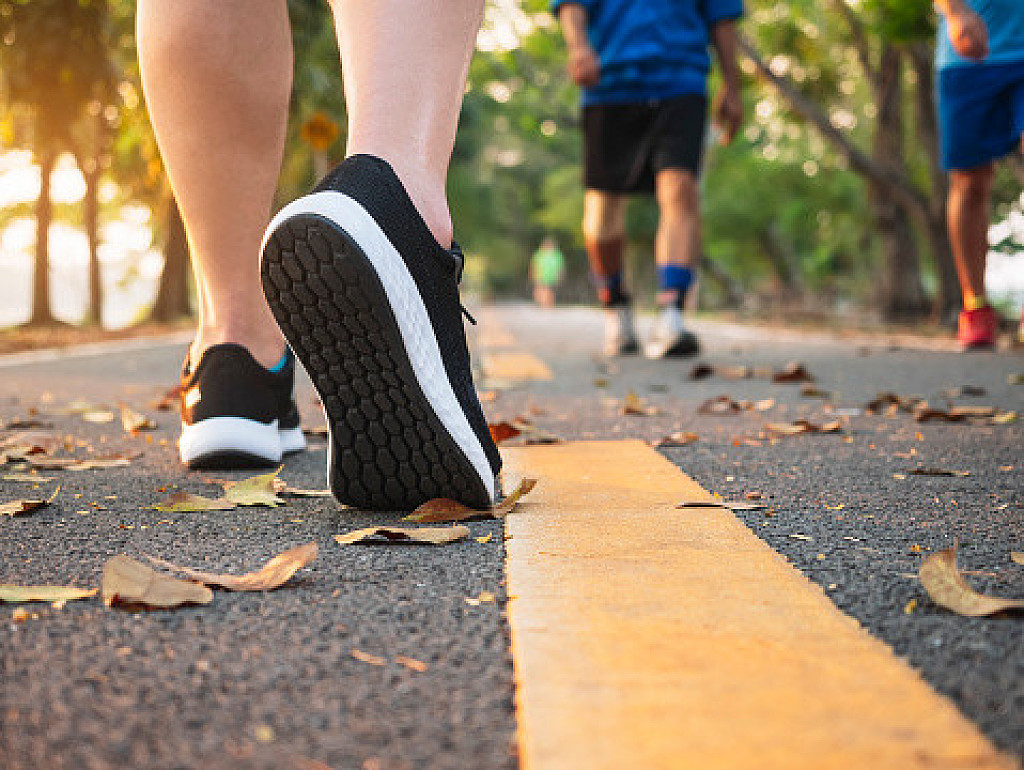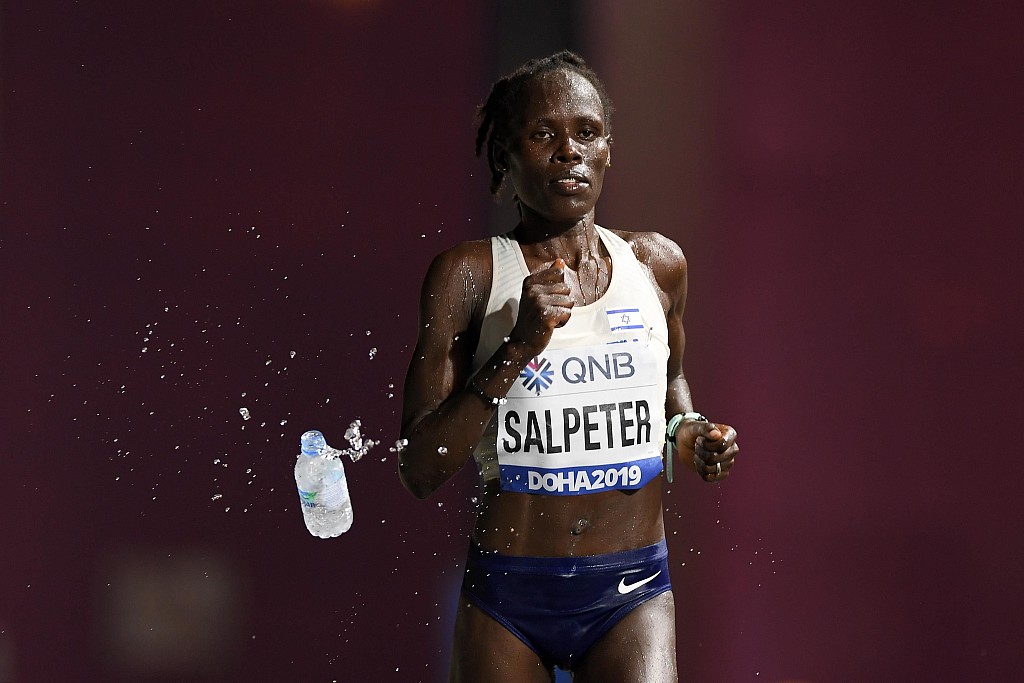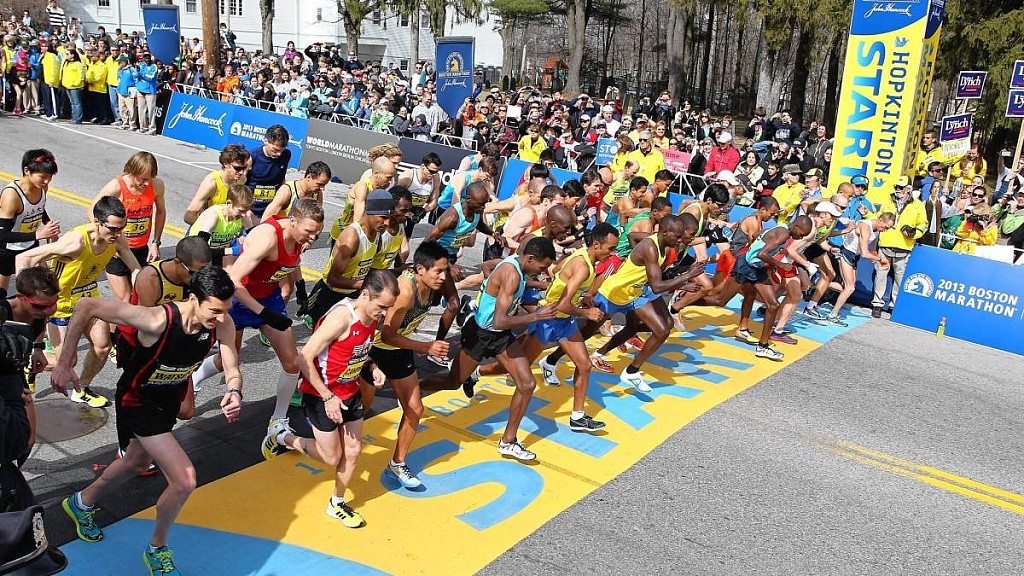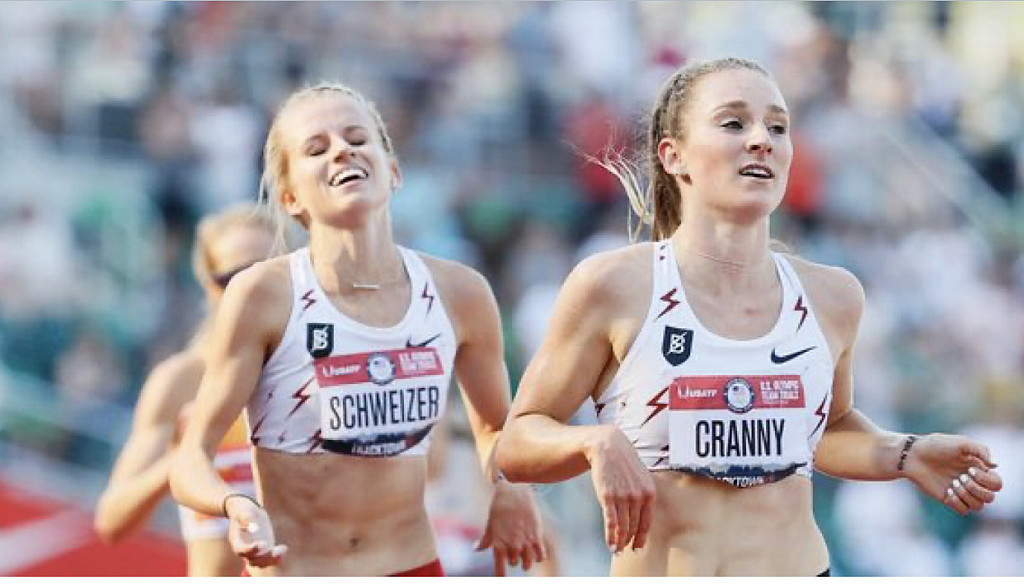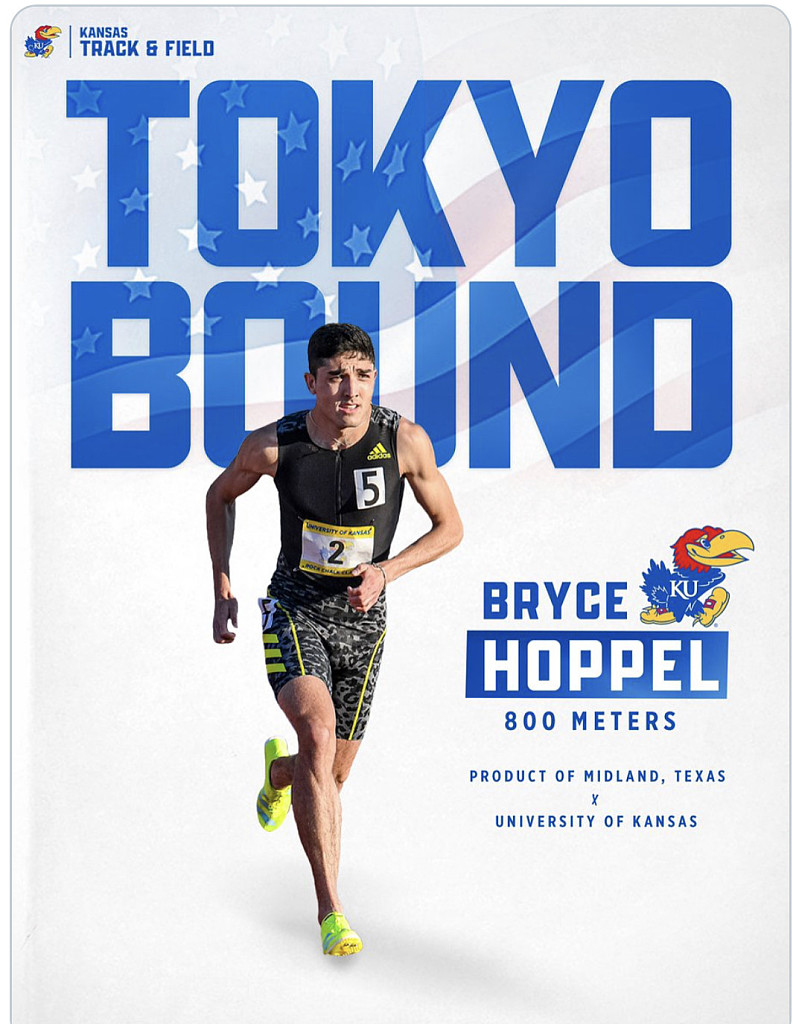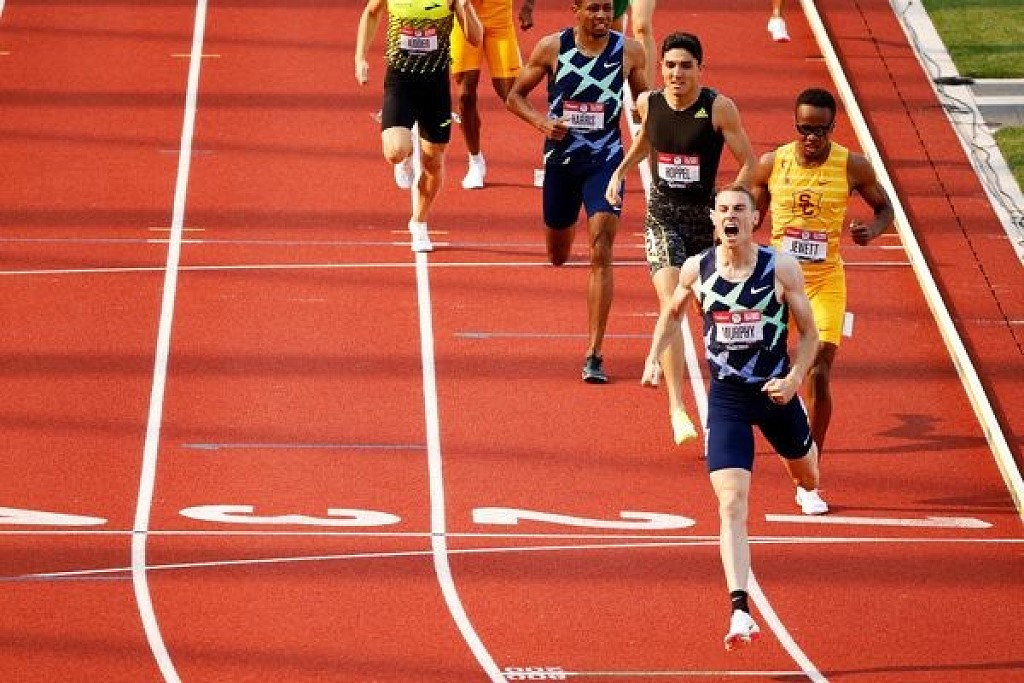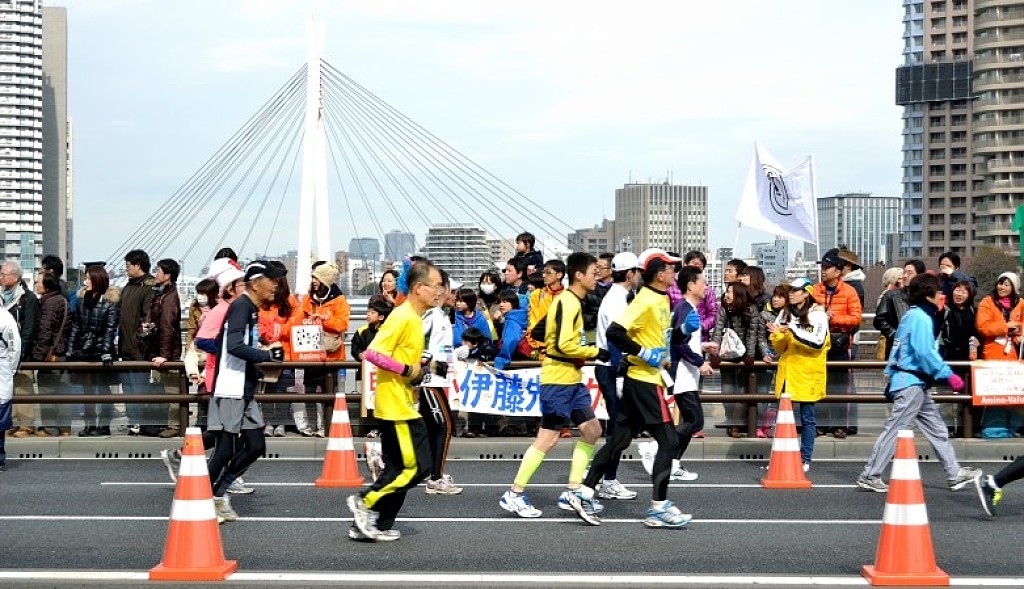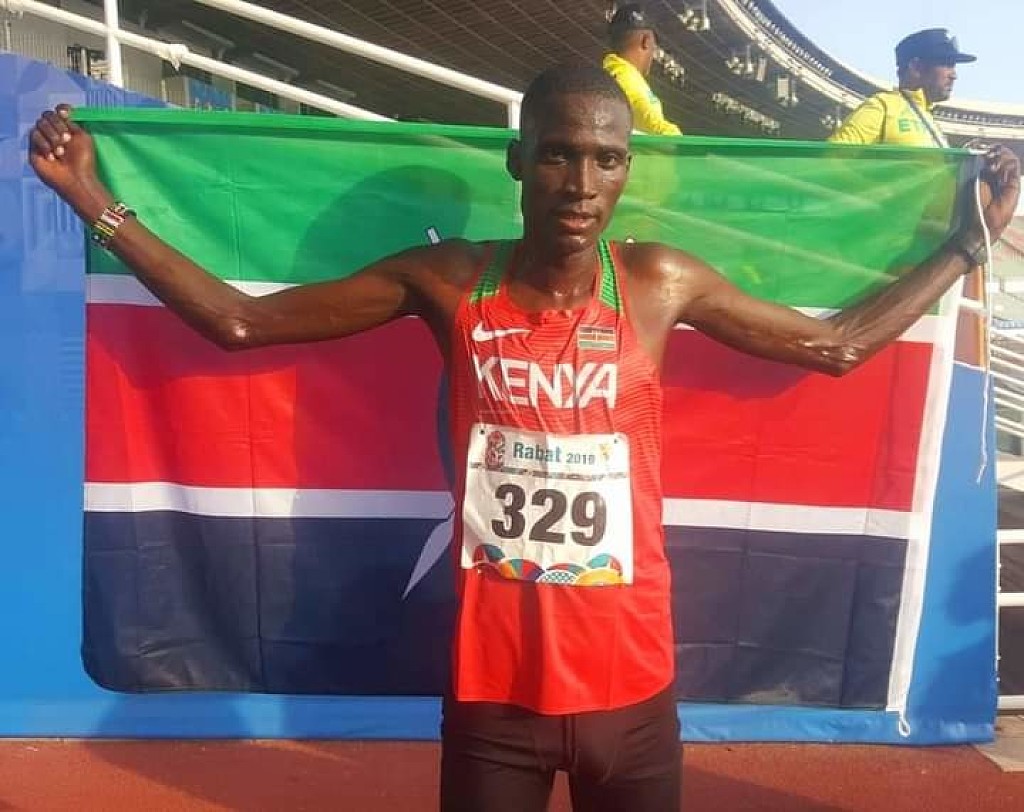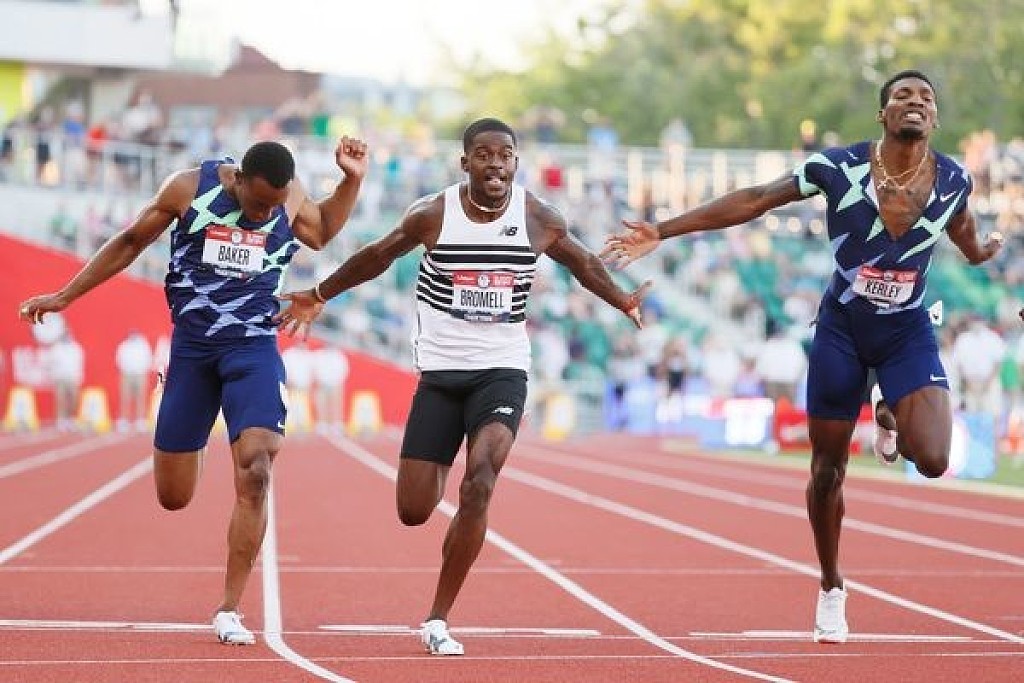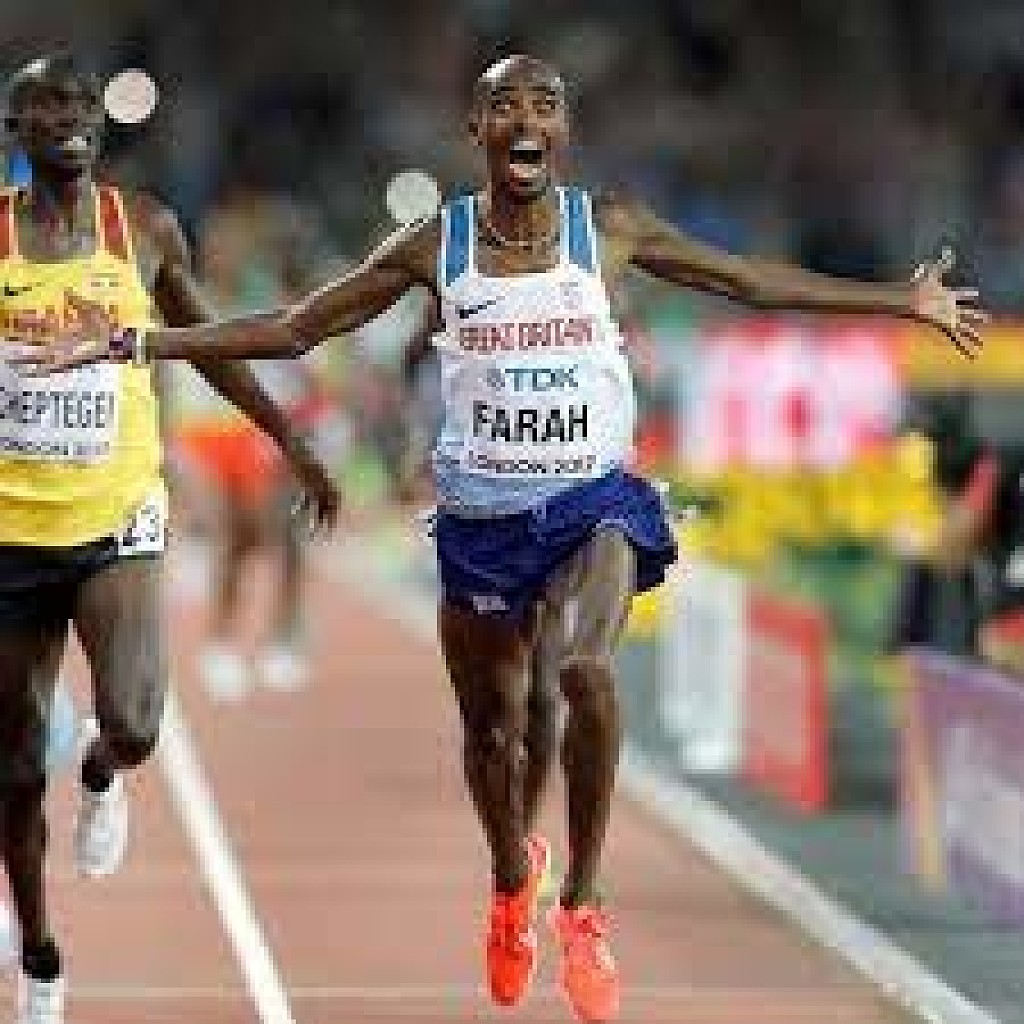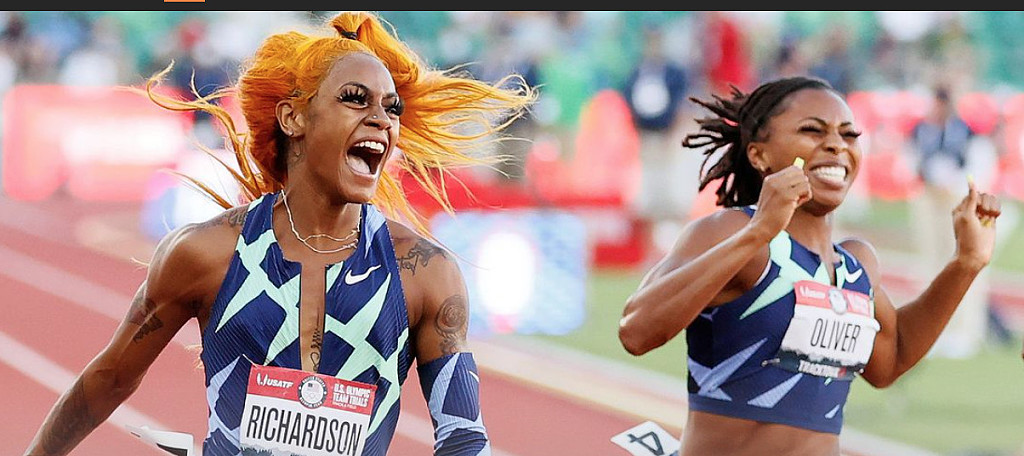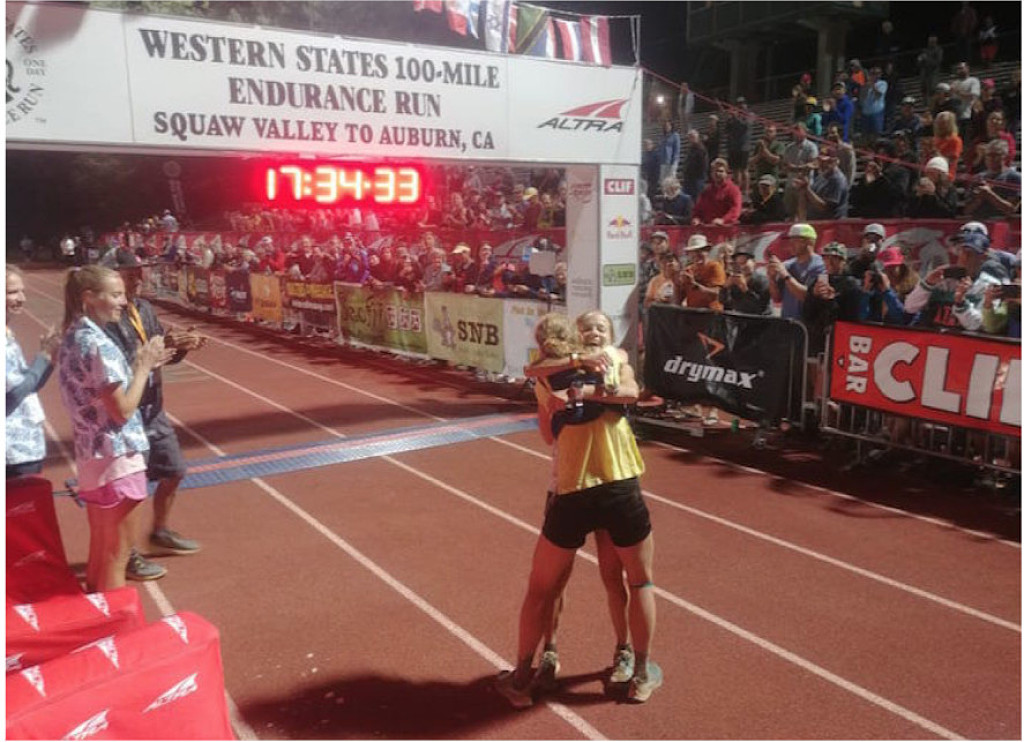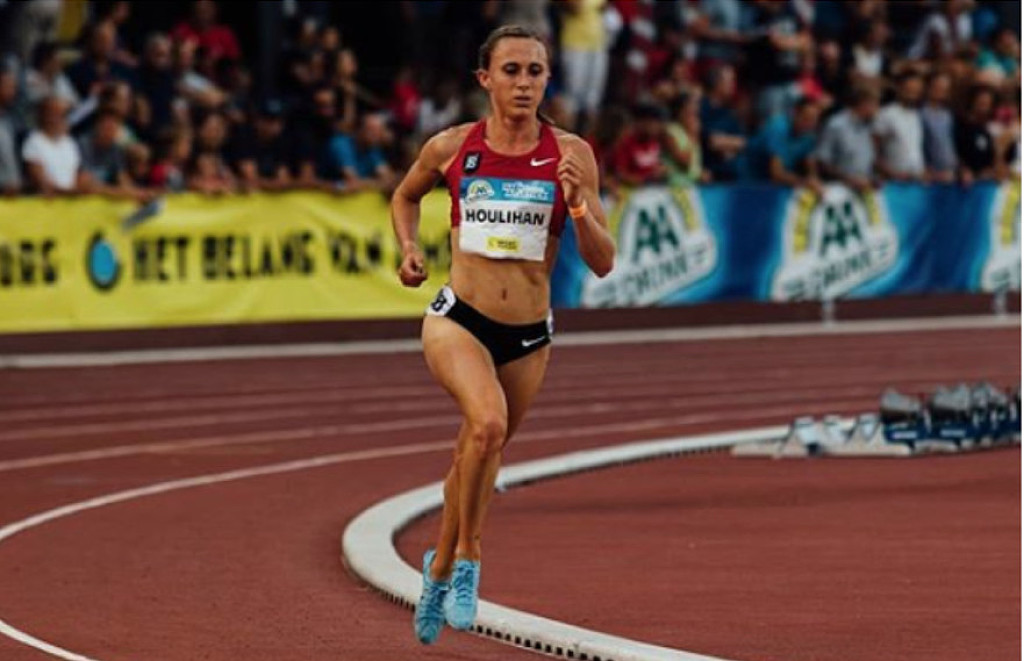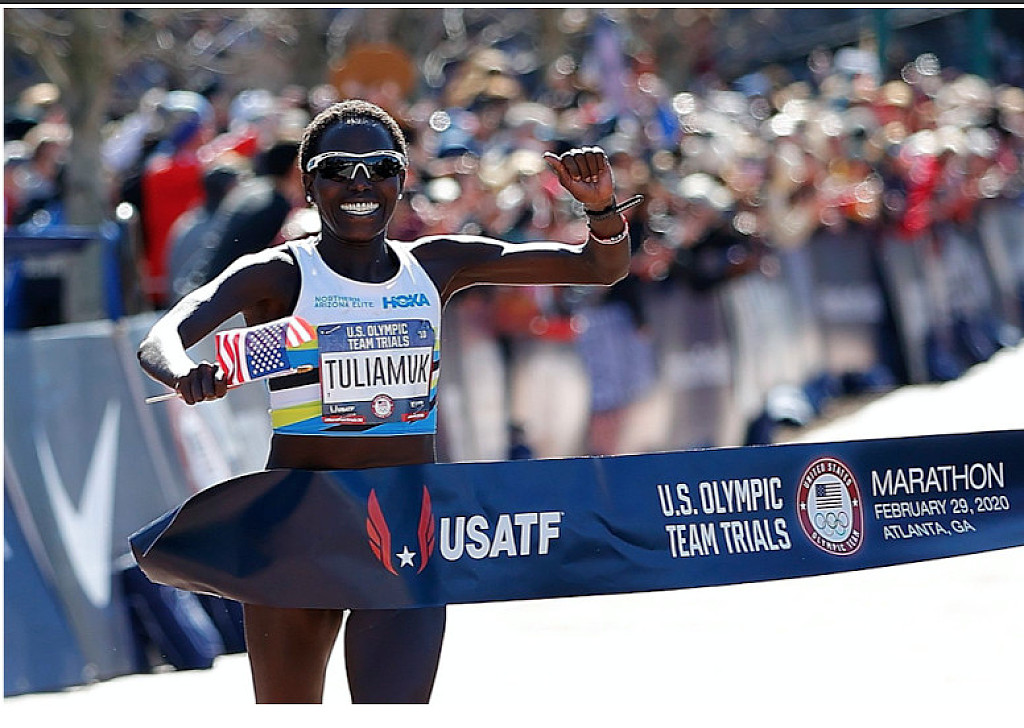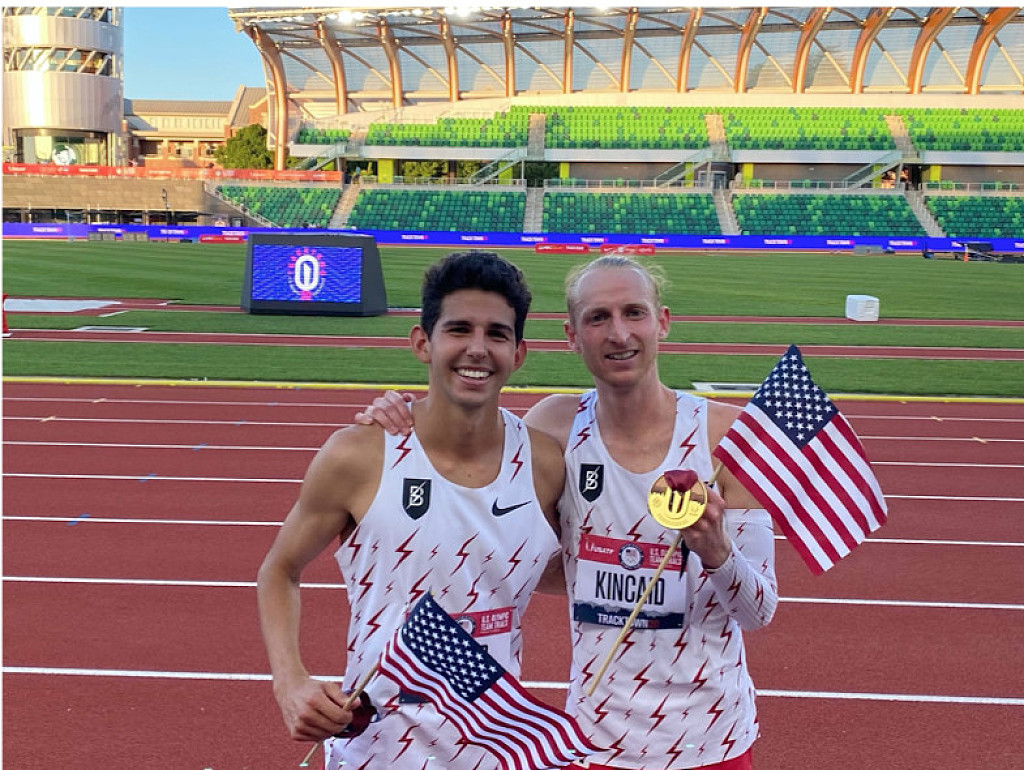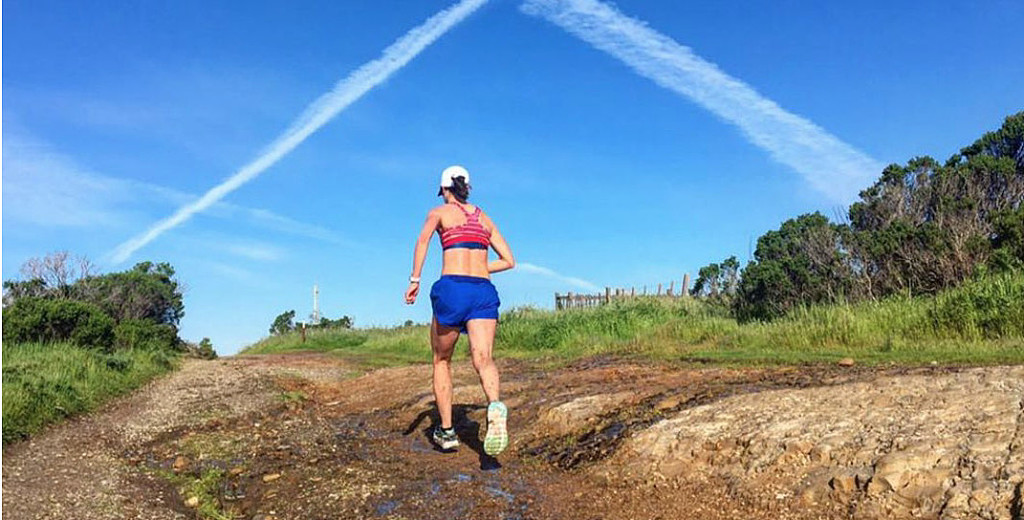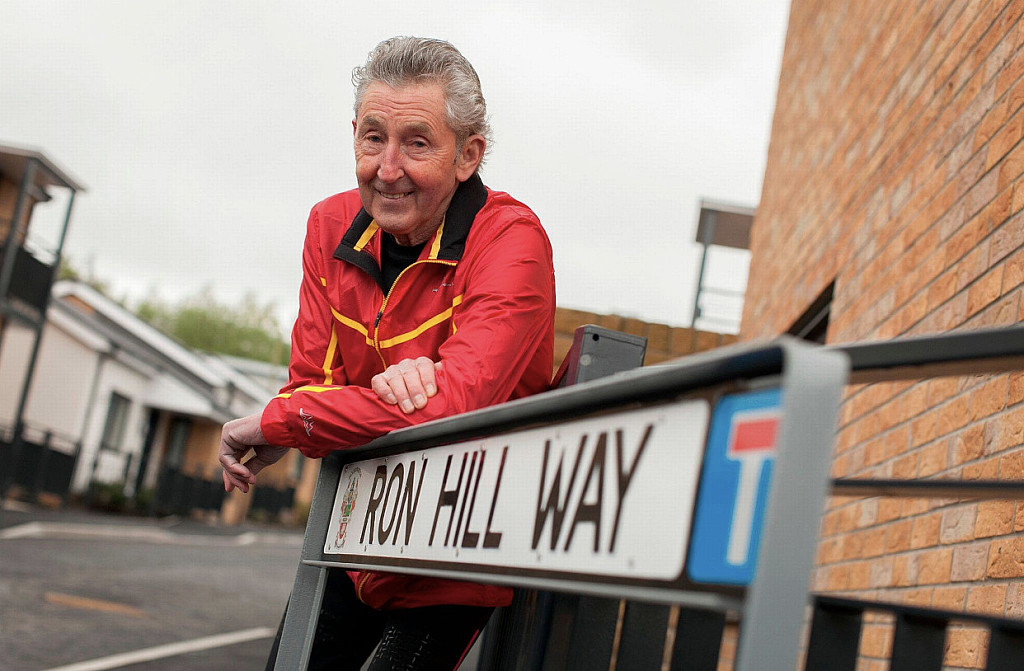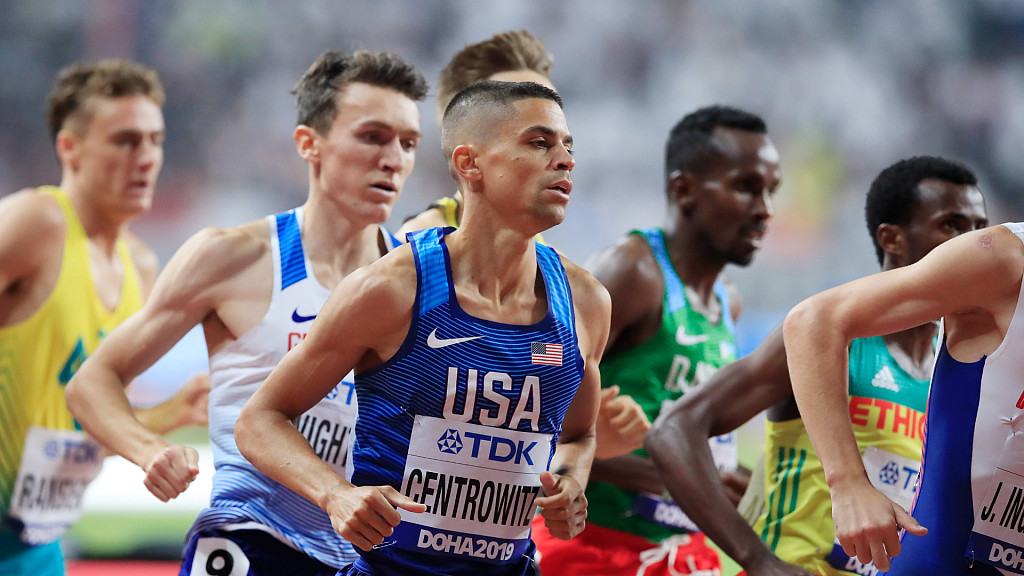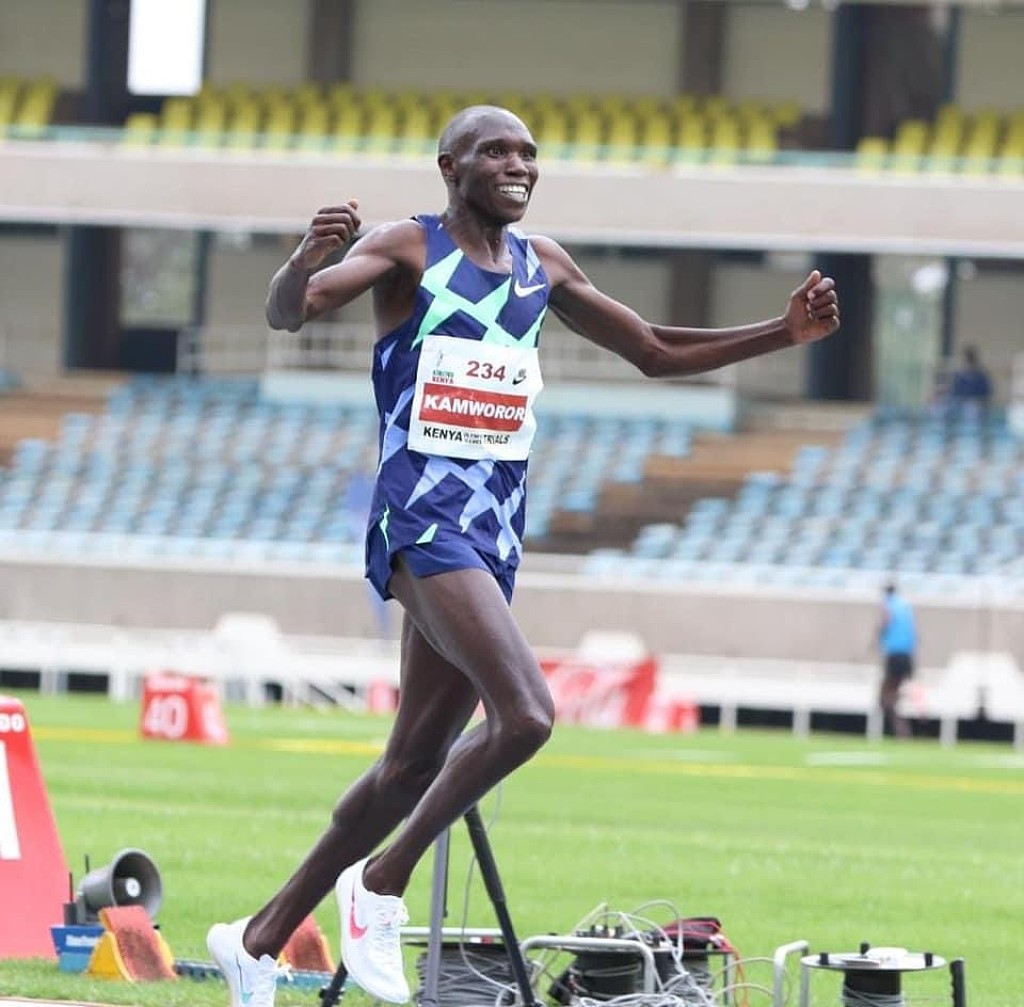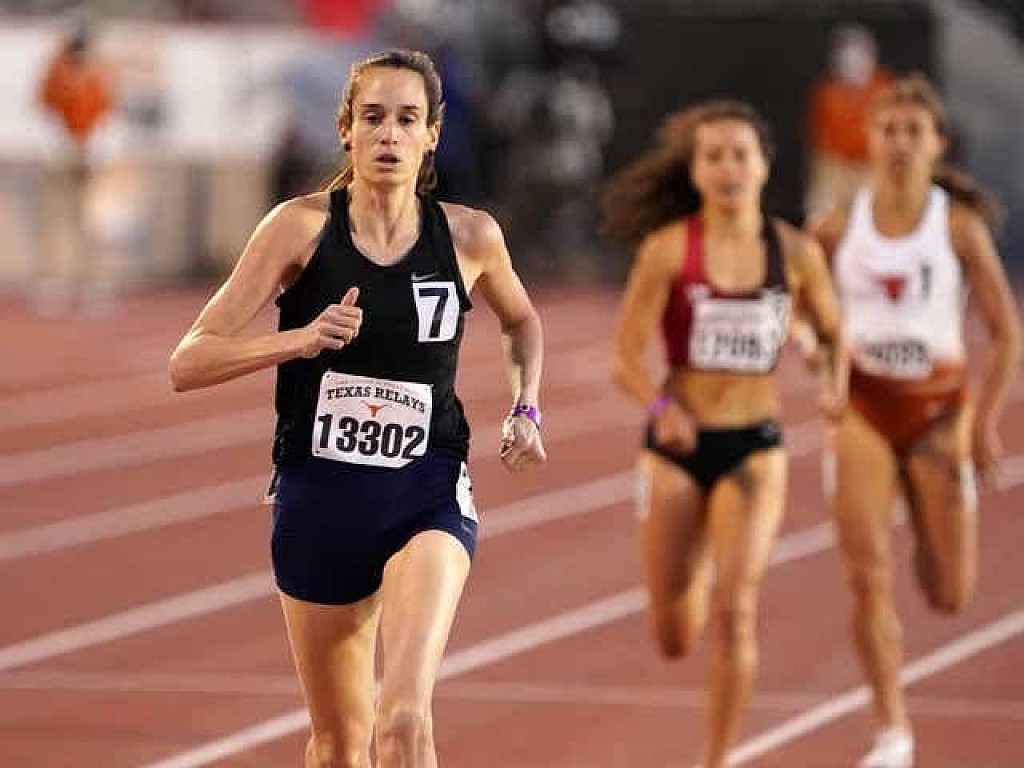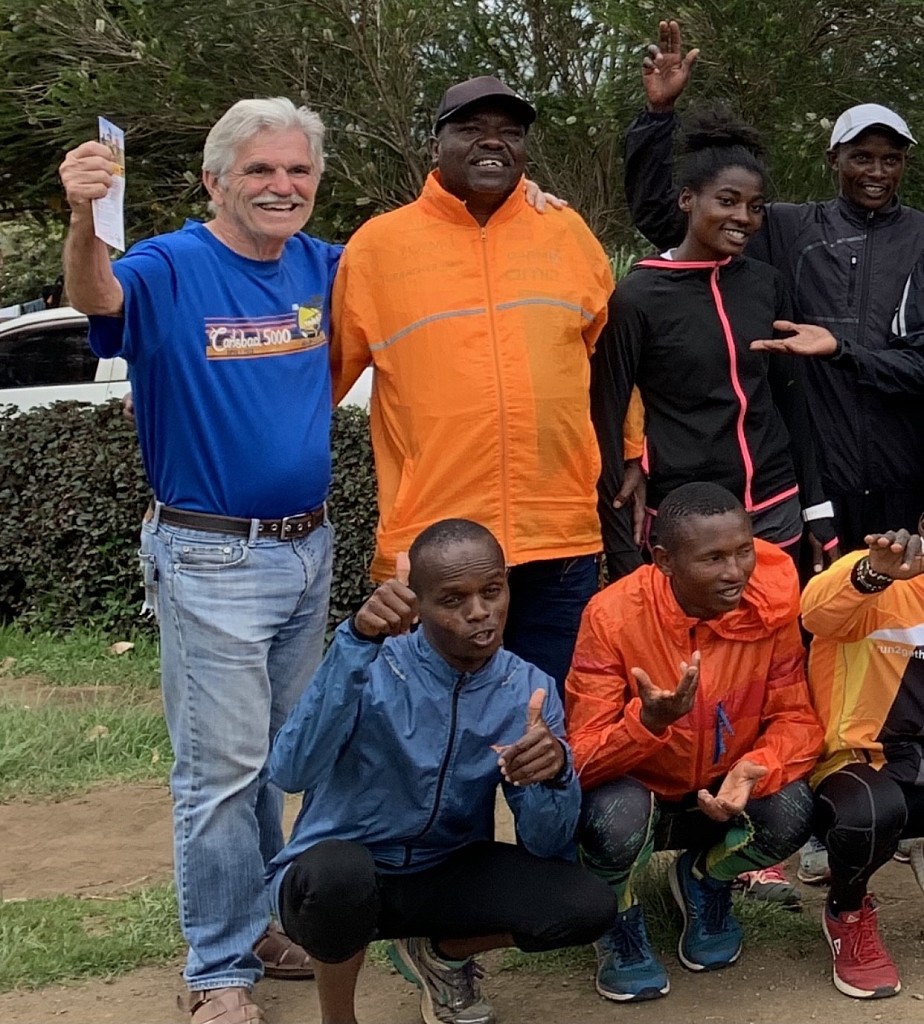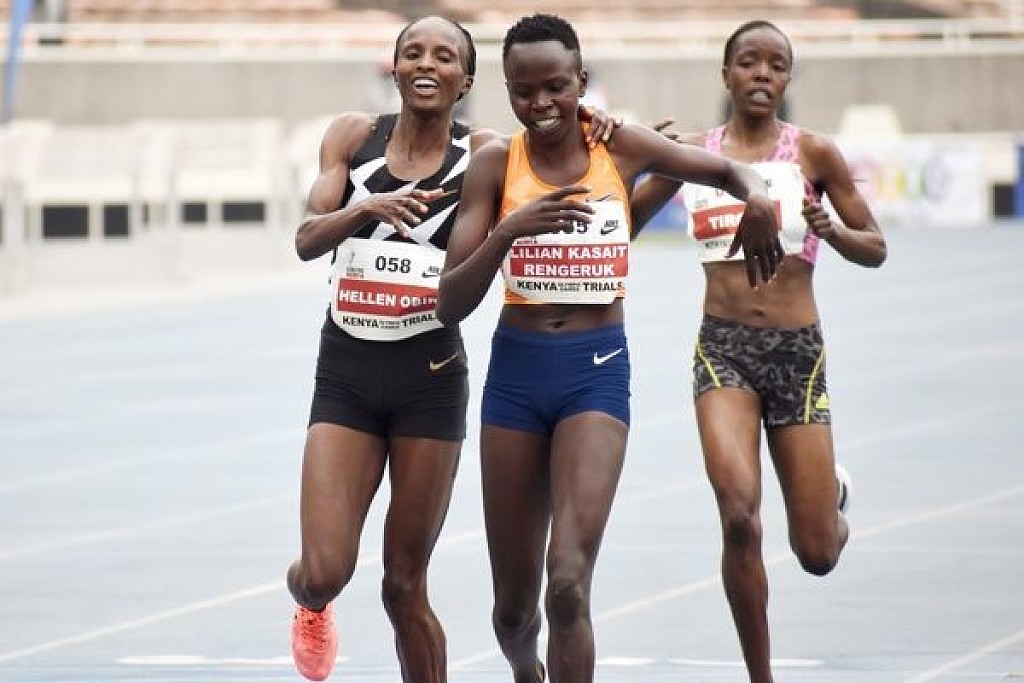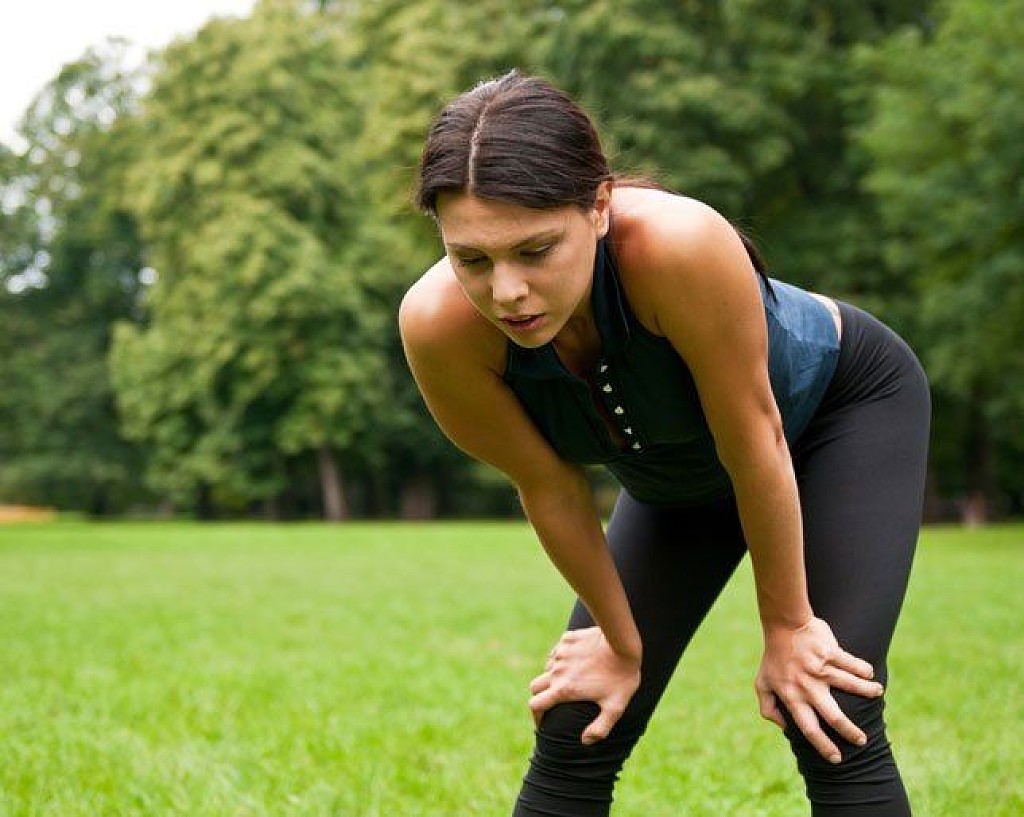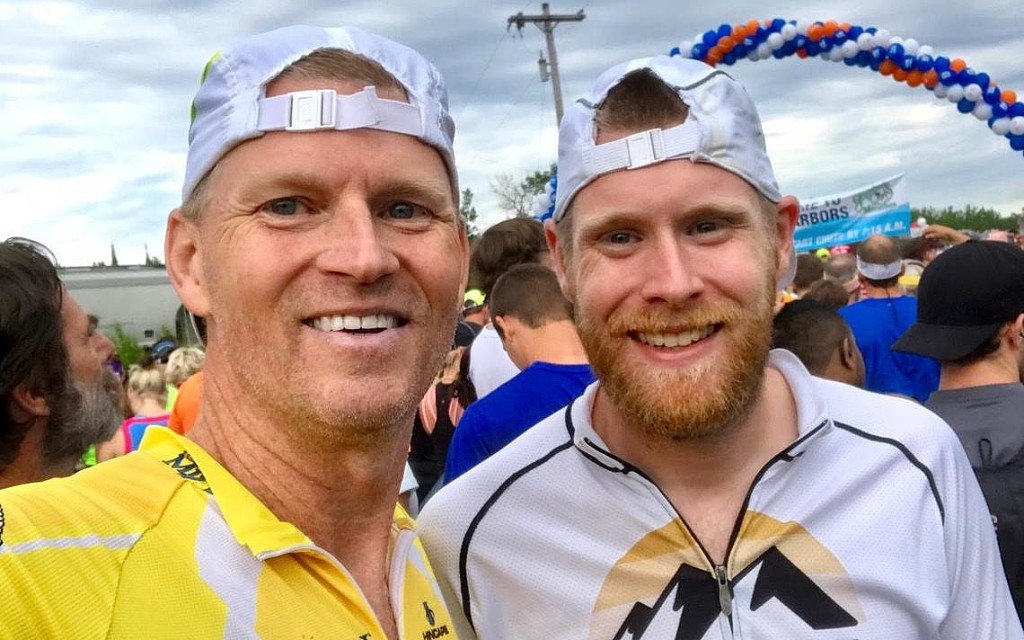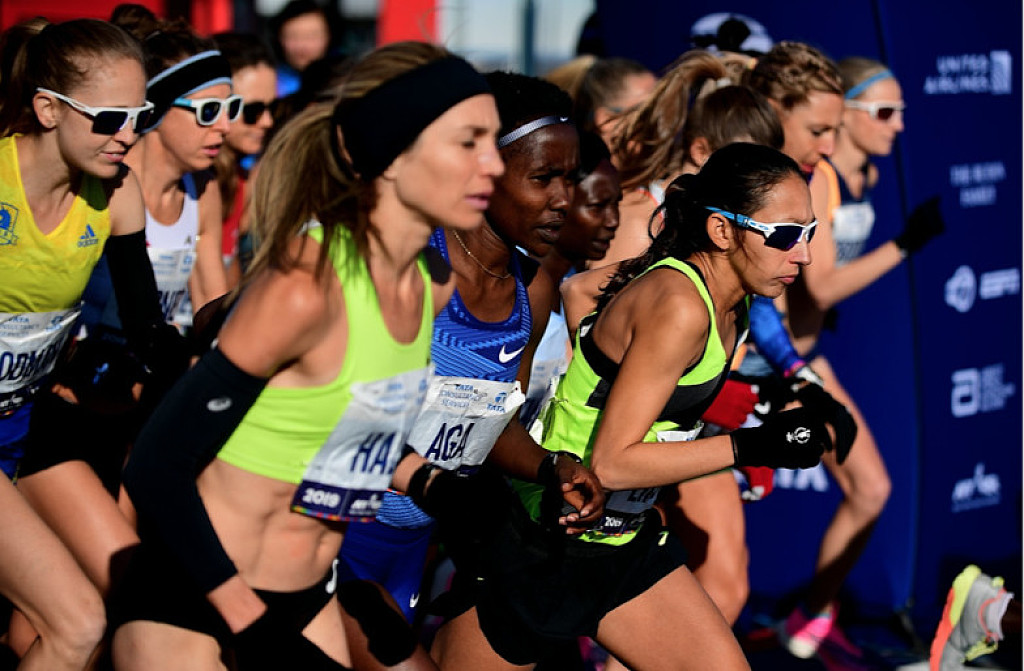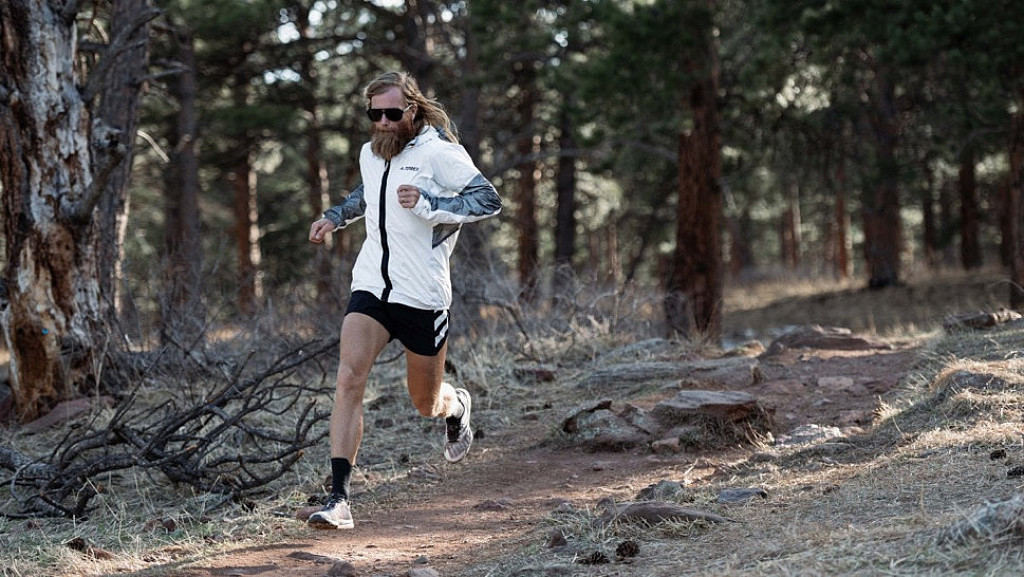Running News Daily
Running News Daily is edited by Bob Anderson in Mountain View, California USA and team in Thika Kenya, La Piedad Mexico, Bend Oregon, Chandler Arizona and Monforte da Beira Portugal. Send your news items to bob@mybestruns.com Advertising opportunities available. Over one million readers and growing. Train the Kenyan Way at KATA Running Retreat Kenya. (Kenyan Athletics Training Academy) in Thika Kenya. Opening in june 2024 KATA Running retreat Portugal. Learn more about Bob Anderson, MBR publisher and KATA director/owner, take a look at A Long Run the movie covering Bob's 50 race challenge.
Index to Daily Posts · Sign Up For Updates · Run The World Feed
Incorporating some walking into your easy runs can help prevent injuries and speed up recovery
The walk/run method is popular among beginners, but as we become stronger runners, many of us abandon the strategy altogether. This, of course, makes sense, since most people start a walk/run program with the goal of eventually running nonstop. What many runners don’t realize is that incorporating a walk/run into your training program can actually provide a number of benefits, regardless of your ability level.
Benefits of the run/walk
As we said, adding a walk/run into your program can be beneficial whether you’re training for your first 5K or your 10th marathon. Here’s why:
Prevent injuries
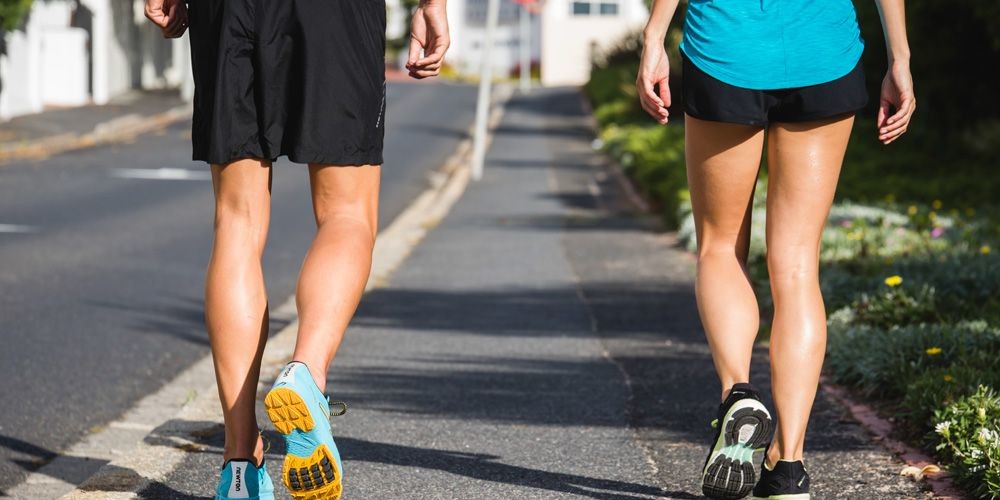
Running is a repetitive, high-impact activity that puts a lot of stress on your body. If you’re fairly injury-prone, or you’re trying to return to running after an injury, adding some walk breaks into your run will decrease the load on your body and allow you to go further than you otherwise would if you were to just run. This is particularly important for runners returning from injury because the affected area will be more sensitive and prone to re-injury.
Recover faster
The day after a hard workout, you might be sore or more tired than usual, and many runners in this situation will go out the next day and stubbornly do their scheduled miles despite how tired they are. What these runners are forgetting is that a recovery day is meant to help their bodies repair from the previous day’s workout, and this is only delaying their recovery. Adding some walking into your run, even if it’s only a minute or two every 10 to 15 minutes, can reduce the stress on your system and help you recover faster.
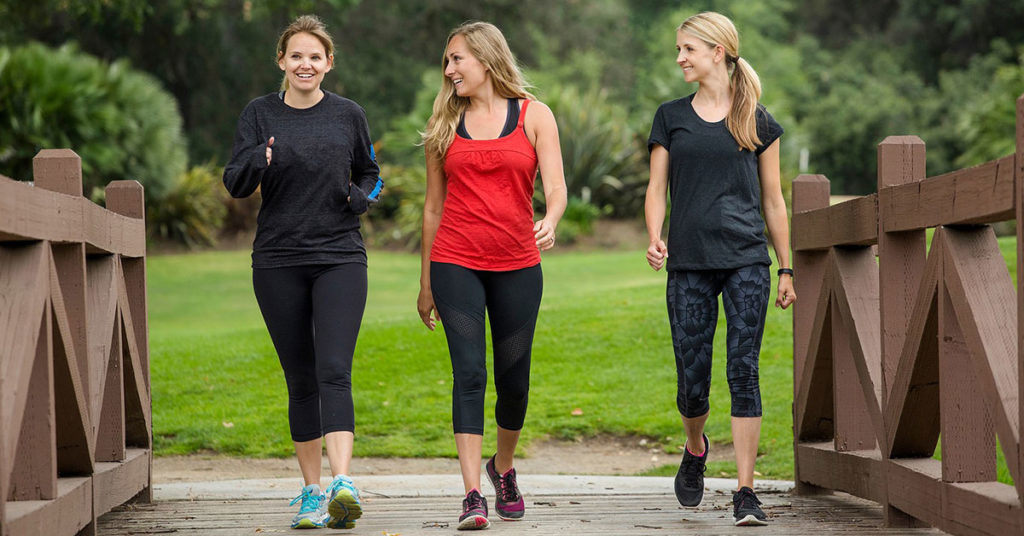
Increase mileage
If you’re looking at trying out a longer race distance (say you’re going from a 5K to a 10K, or maybe you’re jumping to the half-marathon or marathon), using the walk/run method can help you increase your mileage gradually while reducing your risk for injuries.
For many runners, it can seem like a hit to the ego to walk during a run, but when used correctly, it can make running more enjoyable, reduce the risk of injuries and actually improve performance. Give it a try on your next easy run and reap the rewards.
(06/23/2021) ⚡AMPby Running Magazine (Brittany Hambleton)
Three athletes set to make national sporting history at the Tokyo Olympics
In one month from now, when the Olympic cauldron is lit in Tokyo’s National Stadium, the first Games to be held in the midst of a global pandemic will get under way.
But that won’t be the only reason why history will be made in the Japanese capital.
As is the case at every Olympics, dozens of nations will converge on the track, field and roads in a bid for glory, not only for themselves but also for the nations they represent.
Many events will naturally be dominated by the powerhouses within the sport, but there are several disciplines where medals could be won by athletes from nations that have not yet made much of an impact on the Olympic stage.
If, like many sports fans, you enjoy rooting for the underdog at major events, here are three athletes who could make history for their country when they compete in Tokyo next month.
1. Lonah Chemtai Salpeter, marathon - Israel
Lonah Chemtai Salpeter has in recent years progressed to become one of the best distance runners in the world.
In 2018 she won the European 10,000m title, then went on to set national records for the half marathon (1:06:09) and marathon (2:17:45).
She competed at the 2016 Olympics in Rio but failed to finish the marathon. She then suffered a similar fate at the 2019 World Championships, having been in contention during the early stages.
But she will be buoyed by the fact that this year’s Olympics is being held in Japan, because last year she won the Tokyo Marathon in a Japanese all-comers’ record of 2:17:45.
Israel has never before won an Olympic medal in athletics. To date, their best result in an athletics discipline has been a fifth-place finish, achieved by triple jumper Hannah Knyazyeva-Minneko in 2016 and high jumper Konstantin Matusevich in 2000.
2. Joseph Fahnbulleh, 200m - Liberia
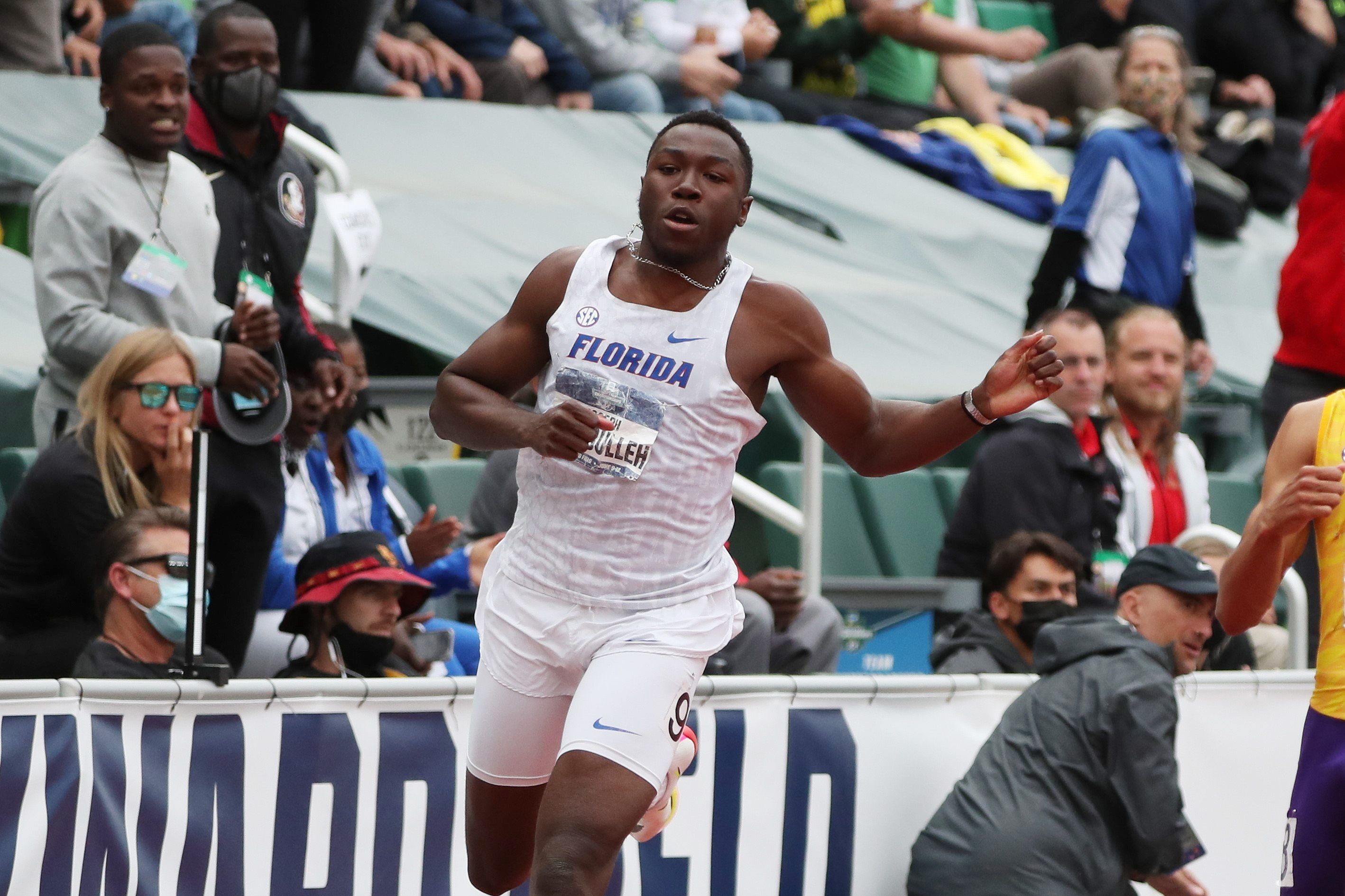
In the immediate aftermath of the recent NCAA Championships, videos of Joseph Fahnbulleh winning the men’s 200m went semi-viral as fans were stunned by the way he made up ground in the closing stages with his long and powerful stride.
What made his 19.91 victory all the more impressive is the fact he is still only 19 years of age.
Although he has been based in the US for most of his life, Fahnbulleh has Liberian citizenship and he recently announced he will represent them in Tokyo.
No athlete from Liberia has ever finished in the top eight in their event at the Olympics, let alone won a medal. The country’s best result to date was Jangy Addy’s 19th-place finish in the decathlon in 2008.
3. Amel Tuka, 800m - Bosnia & Herzegovina
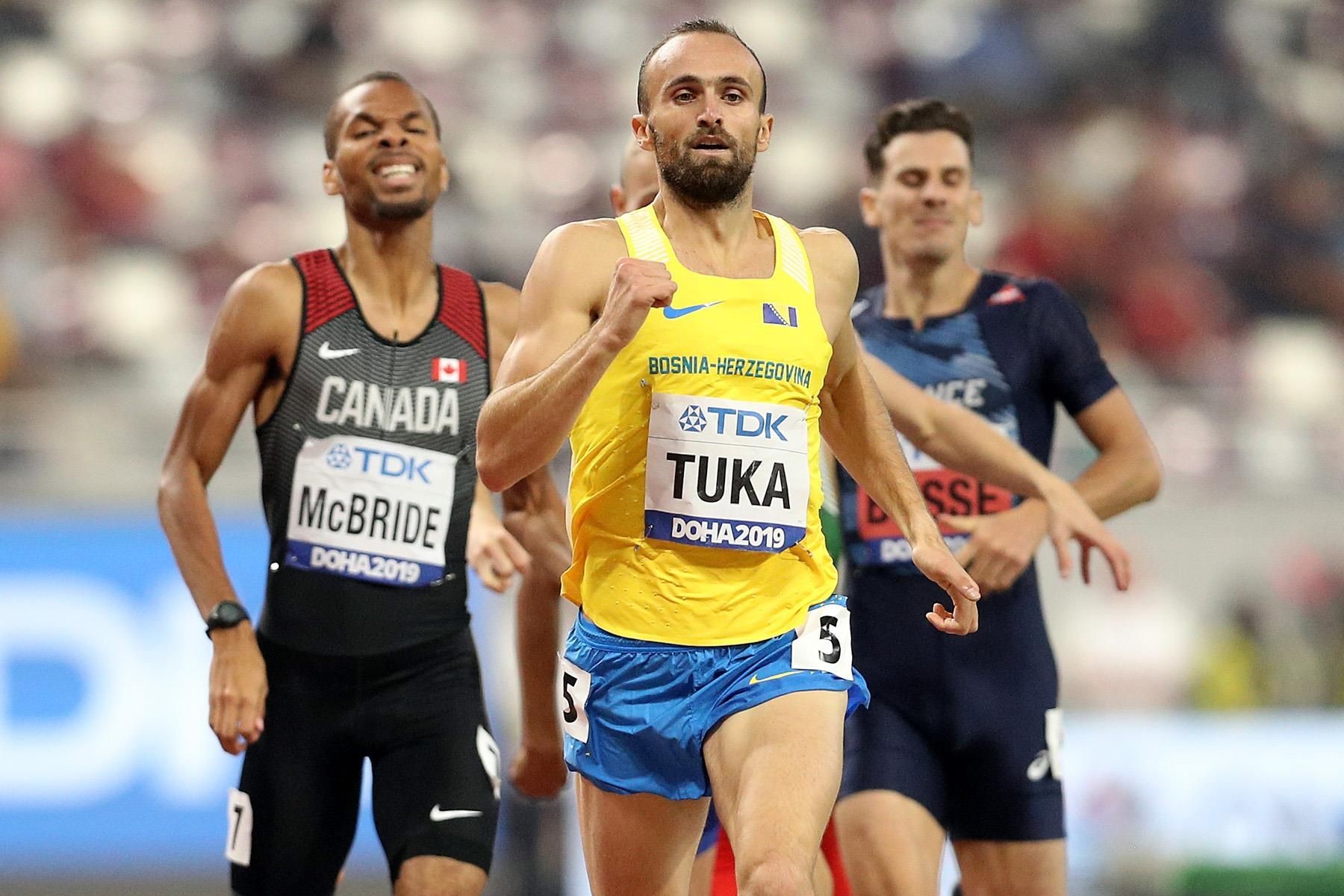
It was something of a shock when Amel Tuka missed out on the Olympic final in 2016.
Just one year prior, the 800m runner from Bosnia and Herzegovina had clocked a world-leading 1:42.51 before going on to take bronze at the World Championships in Beijing. In 2016 he had hoped to become the first person from his country to win an Olympic medal, but it wasn’t to be.
He once again featured on the podium in 2019, taking silver at the World Championships in Doha. A strong tactician who knows how to produce his best when it matters, Tuka could well be in medal contention again in Tokyo later this year.
(06/23/2021) ⚡AMPby World Athletics
Tokyo 2020 Olympic Games
Fifty-six years after having organized the Olympic Games, the Japanese capital will be hosting a Summer edition for the second time, originally scheduled from July 24 to August 9, 2020, the games were postponed due to coronavirus outbreak, the postponed Tokyo Olympics will be held from July 23 to August 8 in 2021, according to the International Olympic Committee decision. ...
more...Boston Marathon is planning on going back to “normal†in 2022
Boston Marathon runners will line up at the traditional start in Hopkinton on the third Monday in April next year, a return to normal after two straight years of races derailed and delayed by the coronavirus pandemic.
The Boston Athletic Association on Tuesday announced that the 126th Boston Marathon is scheduled to take place April 18, 2022. It will be the first race held on the traditional Patriot’s Day date since 2019.
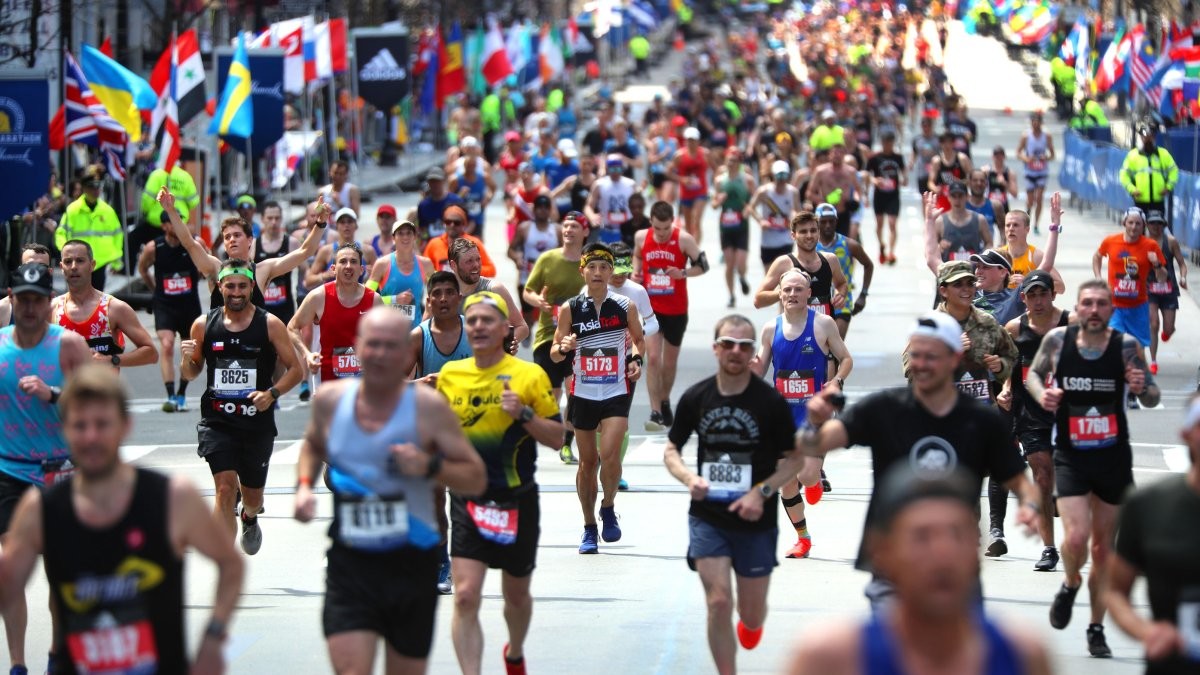
Last year’s in-person race was canceled, and the B.A.A. held a virtual run all around the world. This year’s in-person race has been moved to October with a smaller field size, along with a virtual run option as well.
But next year, the marathon will be back on Patriot’s Day in April.
“Athletes from around the world strive to earn a place on the Boston Marathon start line each and every year,” said Tom Grilk, B.A.A. president and CEO. “The return to racing on the third Monday in April 2022 will certainly be one of the most highly anticipated races in Boston Marathon history.
“Though we are in the initial planning stages for 2022, we hope the traditional race date will also be complemented by a more traditional field size,” he added.
The B.A.A. will use the same registration process for qualified runners as it used for the 2021 race, allowing any athlete who has achieved a currently valid Boston Marathon qualifying time to submit a registration application from Nov. 8 to Nov. 12, 2021, through the B.A.A.’s online platform, Athletes’ Village.
Registration is not first come, first served. Applications will be accepted until 5 p.m. on Nov. 12. The qualifying window began on Sept. 1, 2019, and will close at 5 p.m. on Nov. 12.
Additional registration information, including entry fees, will be announced in the coming months. Achieving one’s qualifying standard does not guarantee acceptance into the Boston Marathon due to field size limitations. Those who are fastest among the pool of applicants in their age and gender group will be accepted.
(06/22/2021) ⚡AMPBoston Marathon
Among the nation’s oldest athletic clubs, the B.A.A. was established in 1887, and, in 1896, more than half of the U.S. Olympic Team at the first modern games was composed of B.A.A. club members. The Olympic Games provided the inspiration for the first Boston Marathon, which culminated the B.A.A. Games on April 19, 1897. John J. McDermott emerged from a...
more...Elise Cranny Makes Her First Olympic Team, Wins 5,000 Meters
With a blistering last lap in 63.73 seconds, Elise Cranny of the Bowerman Track Club outkicked her teammate Karissa Schweizer and won the 5,000 meters in 15:27.81.
Schweizer was second in 15:28.11. Rachel Schneider, who trains in Flagstaff, Arizona, was third in 15:29.56. All three are making an Olympic team for the first time.
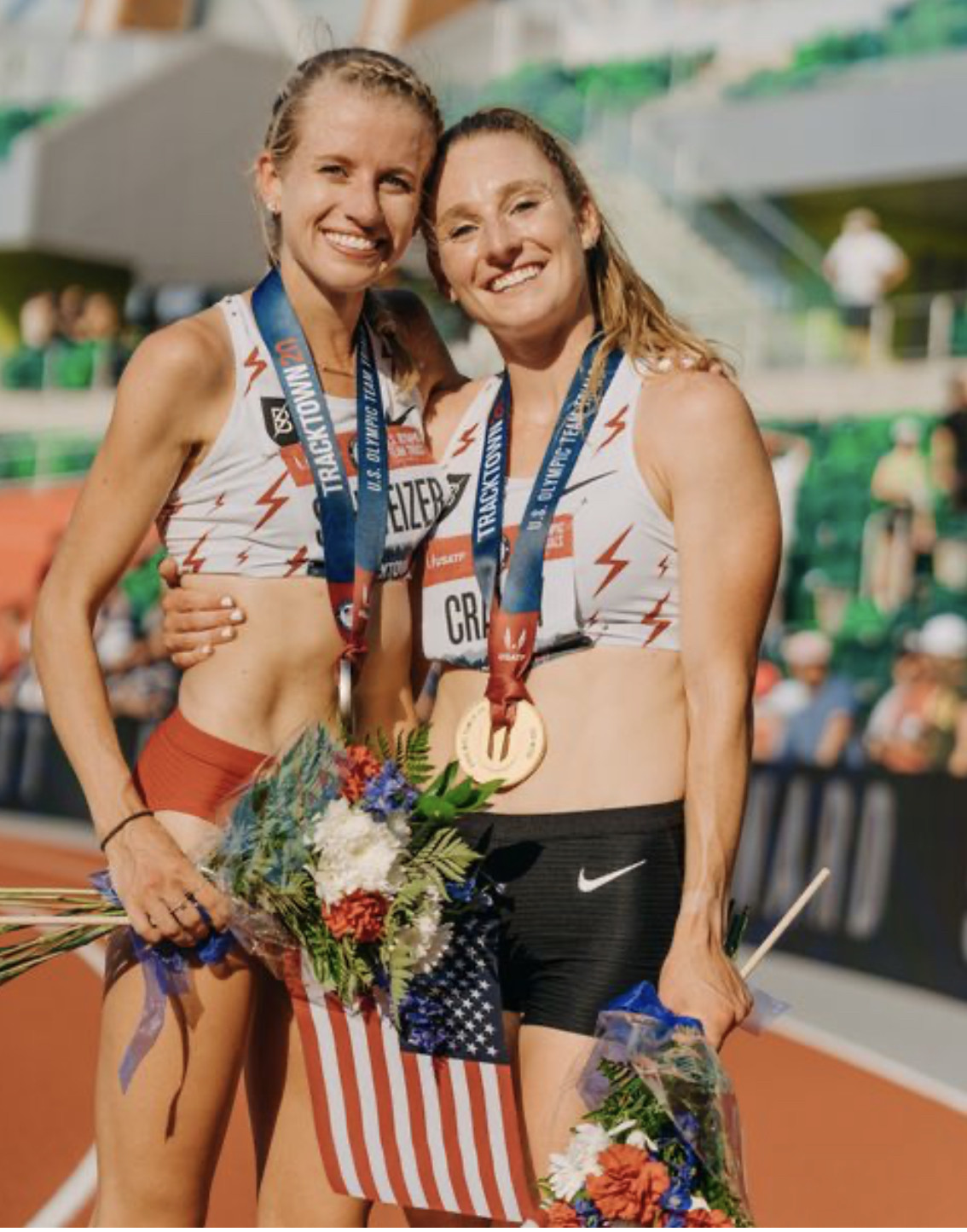
Abbey Cooper, who ran 15:07 in her preliminary heat on Friday, faster than the Olympic standard and her fastest time since 2015, finished fourth. She’ll be the Olympic alternate.
Given the warm weather in Eugene, Oregon—the temperature was 94 degrees—the race got off to a slow start. With a mile to go, the pace quickened considerably, shaking up the pack. With three laps remaining, the first four had separated themselves from the rest and there was no doubt the Olympic team would come from that group.
“It was pretty hot out there,” Cranny said. “It was a bit tactical and slow in the beginning.” The plan, she said, was to stay out of trouble and then “slowly squeeze it down.”
Schweizer’s take on the race plan: “With a mile to go, we were going to make it hurt,” she said.
Rachel Schneider looked around and realized four people were remaining and she had to beat only one of them. “We visualized this race quite a bit in a whole bunch of different scenarios,” she said. “I felt super confident I could go with whatever move, whenever it was made in the race.”
She downplayed the role of the weather: “It didn’t play a part at all,” she said. “Everyone is racing in the same conditions. During the warmup, I wore an ice vest. Outside of it, don’t worry about it.”
Cranny and Schweizer, who holds the American record in the 3,000 meters, are regular training partners of Shelby Houlihan. During 2020, Houlihan and Schweizer ran the two fastest American times ever for the 5,000 meters at an intrasquad race in Portland: Houlihan ran 14:23.92, the American record, and Schweizer ran 14:26.34.
On June 14, days before the start of the Trials, Houlihan announced she had tested positive for nandrolone, a banned substance, back in December. She subsequently appealed to the Court of Arbitration for Sport, which ruled against her. The ruling kept her out of the Olympic Trials.
Despite the distraction of the Houlihan test, the Bowerman Track Club has had a good meet so far. On the first night of competition, Woody Kincaid and Grant Fisher made the team in the men’s 10,000 meters.
Earlier in the day today, Sean McGorty, Cranny’s boyfriend, raced the preliminary heats of the men’s steeplechase. He had to stop midway through to adjust his shoes and fell into last place. But he made his way back up through the pack and was able to advance to the final on time.
Cranny, doing her warmup for the 5,000 meters, was too nervous to watch him race. At one point she looked out and saw him in last. Other teammates in the 5,000 meters, Gwen Jorgensen and Vanessa Fraser, came to tell her the good news when he had advanced to the final. Bowerman teammate Karissa Schweizer finished second, and Rachel Schneider was third.
(06/22/2021) ⚡AMPby Runner’s World (Sarah Lorge Butler)
Former Kansas track and field athlete Bryce Hoppel qualified for the 2020 Tokyo Olympics
Bruce Hoppel finished third in the men’s 800 meters with a time of 1:44.14 and secured a spot on the U.S. Olympic team for next month’s Olympics.
“I tried to give it everything I had,” Hoppel said in a post-race interview. “That wasn’t me out there. That was all my support, my family, my friends, my coaches, just everybody. I left it all out there. It’s incredible.”
While at Kansas, Hoppel dominated on the track, winning four Big 12 titles, including a sweep of the 800-meter title both indoors and outdoors during the 2019 season. Hoppel also collected five All-American honors and was a two-time National Champion. He also is the KU indoor school record holder in the 800 meters and the second-fastest in school history outdoors in the 800 meters.
Hoppel continued his success after leaving Kansas. He placed fourth at the 2019 IAAF World Indoor Championship in Doha, Qatar, and won the 2020 USA Indoor Championship. Also, in February, Hoppel set a new American record in the 1,000 meters at the New Balance Indoor Grand Prix in Boston.
The Tokyo Olympics will take place from Friday, July 23, to Sunday, August 8, 2021.
(06/22/2021) ⚡AMPTokyo 2020 Olympic Games
Fifty-six years after having organized the Olympic Games, the Japanese capital will be hosting a Summer edition for the second time, originally scheduled from July 24 to August 9, 2020, the games were postponed due to coronavirus outbreak, the postponed Tokyo Olympics will be held from July 23 to August 8 in 2021, according to the International Olympic Committee decision. ...
more...Murphy, Purrier St Pierre and Nilsen among the winners on day of surprises in Eugene
With mayhem all around on the fourth day of action at the US Olympic Trials, two-time world pole vault champion Sam Kendricks is relieved to be going to Tokyo. Two other winners of global titles – world 800m champion Donavan Brazier and 2011 world 1500m champion Jenny Simpson – will not be heading to the Games.
“A gold medal brings golden handcuffs,” Kendricks said. “Wherever we go somewhere it’s a world champion, and they expect a world champion’s effort. People follow in your wake when you’re ahead of the game.”
Clayton Murphy stayed ahead on Monday night (21) in Eugene.
He ran an evenly split world lead of 1:43.17 to win the men’s 800m, showing the form he had as 21-year-old to earn Olympic bronze in Rio in 2016. It was an emphatic response to those who were unsure he would ever recapture that.
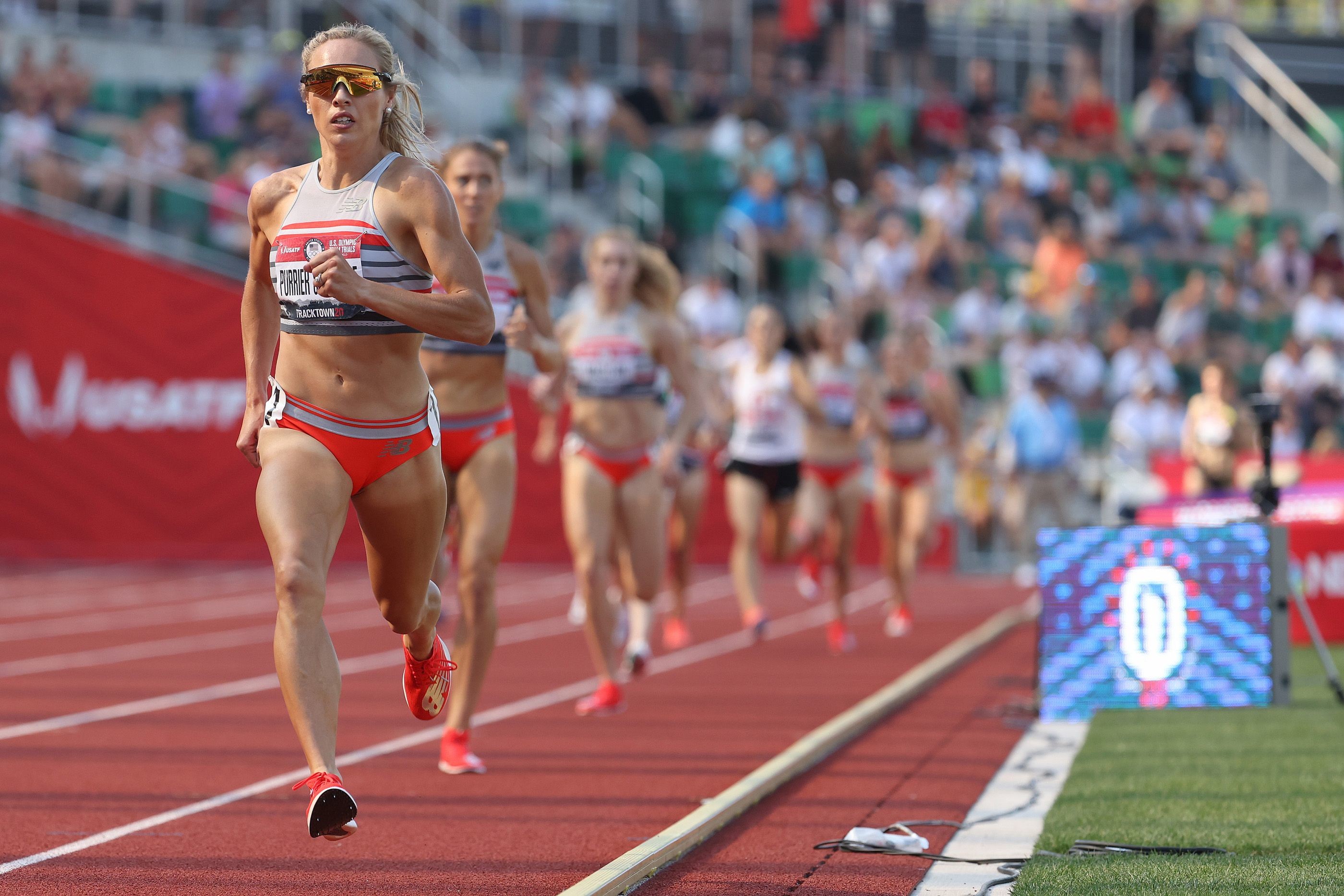
That 800m – plus a historic pole vault competition won by Chris Nilsen and a front-running 1500m by Elle Purrier St Pierre – were the highlights of day four ahead of two rest days.
Shockingly, Brazier faded to last in the 800m and will miss a second successive Olympics. He was a pre-trials favourite in 2016, at age 19, coming off a 1:43.55 and NCAA victory, but he failed to get out of the first round then.
This time, NCAA champion Isaiah Jewett bolted ahead and built a lead with an opening lap of 50.60. Brazier crossed the 400m in 51.00 and attempted to reduce that gap on the final backstretch.
“I think I made a move a little too early and paid the price for it in the last 200,” he said.
Murphy, fifth at the midpoint at 51.67, said afterwards that he executed a perfect plan. He caught and passed Jewett, covering the second lap in 51.50. He said he had a “pretty serious hamstring issue” a few days before the trials but overrode it with adrenaline. He also overrode pre-trials form charts leaving him out of the requisite top three.
“It is hard not to read the middle-distance preview,” he said. “I kind of just accept it. As long as I handle it the right way, it is only motivation.”
Jewett was second in a PB of 1:43.85 and Bryce Hoppel, fourth at the 2019 World Championships, finished third in 1:44.14. Brazier eased to the finish in 1:47.88.
USA is sending “a pretty damn good team” to Tokyo, Murphy asserted. Jewett and Hoppel now sit at fourth and seventh on the 2021 world list, respectively.
“I think this is the most special moment in our sport,” said Murphy. “It is the most pure way to pick a team. This is what all those workouts pay off.”
Murphy and Brazier are qualified to run in the 1500m, but both said they probably would not. Brazier did not elaborate but said he was not running at 100 percent.
Jewett said his night was not over. He had a 10-page paper due for a course at the University of Southern California because a teacher had not granted his request for an extension.
Nilsen, an 18-year-old at the 2016 trials, said his goal then was to have his photo taken with Kendricks. In 2021, his 5.90m vault was enough to beat Kendricks and KC Lightfoot, second and third at 5.85m.
Matt Ludwig and Jacob Wooten were fourth and fifth at 5.80m, making this the first national competition ever featuring five men over 5.80m and 11 over 5.70m. It was also the first US meet ever to have three over 5.85m.
“This’ll go down in history as the hardest team ever to make,” Kendricks said.
The team in the women’s 1500m was also hard to make. An early stumble startled Purrier St Pierre, who on the spot decided to push the pace and led all the way thereafter.
Her time of 3:58.03 broke a trials record of 3:58.92 that Mary Slaney held for 33 years. Cory McGee was second in 4:00.67 and Heather MacLean, Purrier St Pierre’s training partner, was third in 4:02.09 as the top three all ran PBs. Shannon Osika was less than a tenth behind in 4:02.18.
Purrier St Pierre grew up on a dairy farm in rural Vermont and runs on dirt roads with her dog. She was shaken by the bumping to start the race.
“I couldn’t believe I’d just been shoved off the track,” she said. “After that, I thought I’d just go for it.”
Simpson, 34, the 2016 Olympic bronze medallist, was aiming for a fourth Olympics but finished 10th in 4:07.76. Coincidentally, she was Purrier St Pierre’s roommate in Doha.
Simpson conceded it was “hard to believe” she had not made the team; she had been on every Olympic or World Championships team since 2007.
“The sport goes on without you,” she said. “You don’t make the Games, and the Games are fine and they go on without you.”
With temperatures soaring past 32C, Elise Cranny won the 5000m in 15:27.81. Karissa Schweizer was second in 15:28.11 and Rachel Schneider third in 15:29.56. Abbey Cooper, who met the Olympic standard by running 15:07.80 in the heats on Friday, was fourth in 15:31.05.
In the absence of the injured Christian Taylor, Will Claye took the triple jump with 17.21m (0.1m/s). Donald Scott was second at 17.18m and Chris Bernard third at 17.01m. “My sights have always been on the gold medal,” Claye said. "I want to win whether Christian is there or not. I feel for Christian. A year ago, I was going through the same thing.”
Curtis Thompson had the four longest throws of the competition and won the javelin with 82.78m.
Roy Jordan for World Athletics
(06/22/2021) ⚡AMPby World Athletics
Tokyo Marathon October 17 will only be open to residents of Japan
Organizers of the Tokyo Marathon have announced that the upcoming edition of their race, which is set for October 17, will only be open to residents of Japan. The country’s COVID-19 restrictions are still quite strict, and there is no word on when they might be eased, so organizers made the difficult decision to block any international runners from travelling to Japan and competing in the marathon. International athletes who were registered for the Tokyo Marathon will have their entries deferred until the 2023 event.
Earlier this year, Tokyo Marathon organizers set their race date, moving the event from its traditional late February or early March run date to the fall. The run wouldn’t have worked so early in the year due to the ongoing COVID-19 pandemic, but they hoped it would be able to go ahead later in 2021. At the moment, the race is still a go, but it will be a Japan-only event.
When organizers decided on the October race date, they also noted that the event capacity would be lowered to 25,000 runners from the usual field size of around 38,000. Nothing has been published regarding the race capacity in its new field format.
Japan has been able to host many big road and track races throughout the pandemic, but they’ve mostly been for runners already living within the country’s borders. The Tokyo Marathon may be the biggest Japanese race to bar international competitors, but it’s certainly not the first. The pandemic forced many popular races to only welcome citizens and residents of Japan, including last year’s Fukuoka International Marathon and the 2021 Lake Biwa, Osaka International Women’s and Nagoya Women’s marathons.
Unfortunately for anyone hoping to run in Tokyo, they will have to wait more than a year to do so, as international entries aren’t being deferred to 2022, but 2023.
(06/21/2021) ⚡AMPby Ben Snider-McGrath
Tokyo Marathon
The Tokyo Marathon is an annual marathon sporting event in Tokyo, the capital of Japan. It is an IAAF Gold Label marathon and one of the six World Marathon Majors. Sponsored by Tokyo Metro, the Tokyo Marathon is an annual event in Tokyo, the capital of Japan. It is an IAAF Gold Label marathon and one of the six World...
more...After setting a personal best of 2:02:37 to win the Milano Marathon in May, Titus Ekiru believes he can run under two hours
Titus Ekiru believes he can run under two hours at the upcoming Chicago and London marathons.
The 2019 African Games half marathon champion led a 1-2-3 Kenyan finish as he set a new course record, ahead of Reuben Kipyego (2:03:55) and Barnabas Kiptum (2:04:17) in second and third respectively.
"I've been working hard in training to improve on the weak aspects of my performance. So far, so good; I believe that running under two hours is possible with the way my training has worked out so far. We are discussing with the management to explore the possibility of running at the Chicago and London marathons, among other races in the future," Ekiru said.
If he achieves this target, he would become the second man to ever run a marathon under two hours after marathon world record holder Eliud Kipchoge timed 1:59:40 during the INEOS Challenge in Vienna, Austria.
Ekiru admitted that he had dreamt of representing the country at the upcoming Tokyo Olympics until these hopes were dashed when Athletics Kenya named Eliud Kipchoge, Lawrence Cherono, Vincent Kipchumba and Abel Kirui as Kenya's representatives in the road races.
"It was my desire and hope that I would have been selected to compete in the marathon. Now that the team has been named, there's nothing much to do but to focus on the future. I can't compete in the 10,000m because I have not been specialising in it for a while," he said.
(06/21/2021) ⚡AMPby Running Magazine
Bromell back to his best while Felix and Winkler make history in Eugene
Three years ago, it seemed implausible that Trayvon Bromell and Allyson Felix would represent the United States at a 2020 Olympic Games. Bromell was coping with a debilitating sequence of injuries, and Felix was coming off a difficult childbirth.
Now that it is the 2021 Olympics, they will be running for medals in Tokyo.
Bromell won the 100m in 9.80 (0.8m/s), and Felix made her fifth Olympic team during the USA Olympic Trials on Sunday night (20) in Eugene, Oregon.
The 25-year-old Bromell once thought his end had come. He left the Rio Olympics in a wheelchair after aggravating a heel injury.
He has had two achilles surgeries over the past five years, and in a span of three-and-a-half years ran three races. He was effectively out of athletics. He credited religious faith for turning around his life, on and off the track.
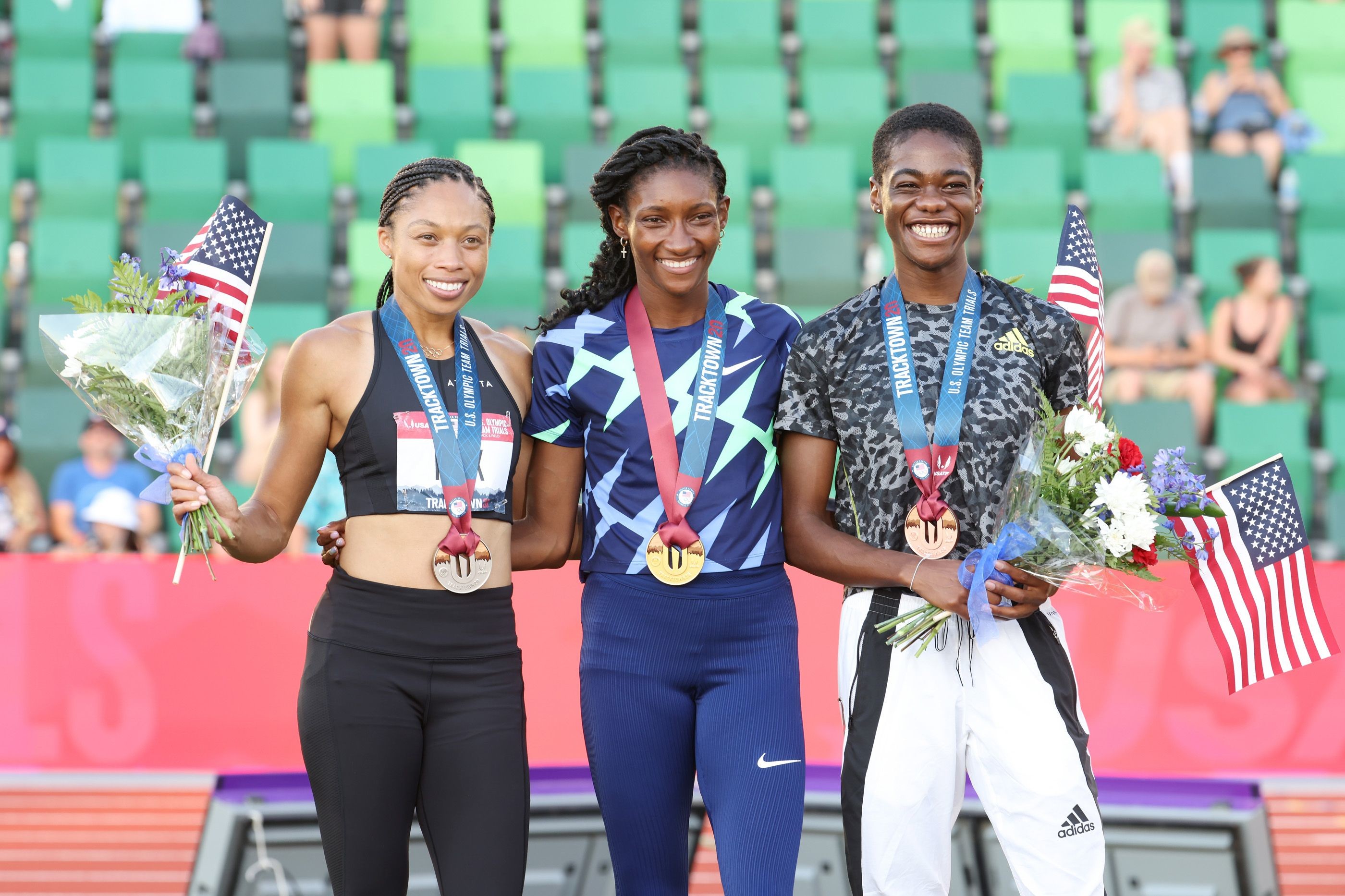
“When I went down in 2016, I realised I didn't know what was going on,” he said. “In 2018, I wondered if I wanted to live anymore. What resource am I not going to for this change?
“My mom told me to try God. Since devoting myself, things have changed.”
In a high-quality final, the top four men finished inside 9.90, and 9.91 – recorded by teenager Micah Williams of host University of Oregon – was only sufficient for fifth place. It was the fastest first five in trials history.
Ronnie Baker and Fred Kerley, the latter dropping down from the 400m, claimed the two other Olympic spots, finishing second and third respectively in 9.85 and 9.86. 200m specialist Kenny Bednarek was fourth in 9.89. World 200m champion Noah Lyles started poorly and was seventh in 10.05.
Following this victory and his world-leading 9.77 from earlier this month, Bromell will head to Tokyo as a gold-medal favourite.
“I feel with confidence sometimes comes complacency. And for me, I don't like to get complacent,” he said. “For me, I'm still going to go home and train as if I'm not being talked about at all.”
On a day celebrated as Father’s Day, the top two in the women’s 400m were both mothers.
Quenara Hayes – who became a mother in October 2018 and has this year returned to sub-50-second form – finished first in 49.78, just 0.06 shy of the PB she set when winning the 2017 US title.
Felix closed rapidly to clock 50.02. Third spot was taken in 50.03 by Wadeline Jonathas, who was fourth at the 2019 World Championships. Kendall Ellis clocked 50.10 for fourth place, narrowly missing a team spot by just 0.07.
“When your body is out for eight to nine months, plenty of nights I would cry,” said Felix. “I was trying to rush the process.”
Felix made the team, 17 years removed from winning a 200m silver medal in Athens in 2004. She gave birth to a daughter in 2018, and she was at Hayward Field to see her mother race.
“There has been so much that has gone into this,” Felix said, “and there were many times where I didn't think I would get to this moment.”
She said she was “absolutely sure” she would not try for Paris 2024.
(06/21/2021) ⚡AMPby World Athletics
World Athletics commits an extra US$1million prize money for athletes at World Athletics Championships
World Athletics today announced it was substantially increasing the prize money for athletes at its flagship world championships, starting with the World Athletics Championships Oregon22 next year.
US$2 million has been ringfenced from the fines paid by the Russian Athletics Federation for breaching the sport’s anti-doping rules, to go directly to athletes in the form of prize money at the WCH Oregon22 and at the WCH Budapest 23.
Speaking from the US Olympic Trials in Eugene, Oregon, World Athletics President Sebastian Coe said: “The last 18 months have been really tough for thousands of athletes who make their living from competing in events around the world. While we have focused on helping meetings around the world stage as many events as possible over this period – more than 600 events – we know many athletes had a very lean year last year and are still experiencing challenges this year.
“Last year we also set up an athlete fund, supported by some generous donations, to provide some financial relief to those athletes most in need. 193 athletes from 58 countries were granted up to US$3000 to go towards basic living costs such as food, accommodation and training expenses.”
World Athletics will fund the additional $1million per World Championships for the next two editions, with each of the 44 individual events receiving an additional US$23,000 of prize money at each championship.
At the most recent World Championships in Doha in 2019, US$7,530,000 in prize money was distributed to athletes who finished in the top eight of an event.
While the intention is to see the new funds go to as many athletes as possible in leading positions, the Athletes’ Commission and Competition Commission will make a recommendation to the World Athletics Council on how the funds will be allocated. The additional US$1 million in prize money will form part of the host city contract from 2025 onwards.
(06/21/2021) ⚡AMPby World Athletics
Mo Farah’s Manchester mission
Olympic champion hopes to beat the 10,000m qualifying standard for the Tokyo Games at an invitational race on the first day of the Müller British Athletics Championships
After shaking off the ankle problem which affected his performance at the Müller British 10,000m Championships and European Cup event at the University of Birmingham last week, Mo Farah will have another crack at the Olympic qualifying mark in a special invitational race on Friday June 25 at the Müller British Athletics Championships in Manchester.
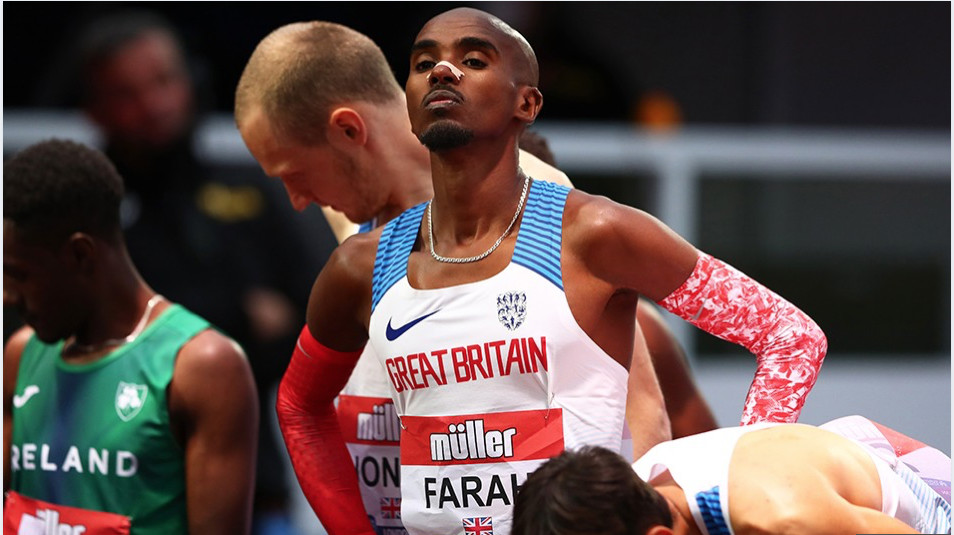
Farah clocked 27:50.64 in Birmingham on June 5 as he finished second Briton home behind Marc Scott and eighth overall in a race won by Morhad Amdouni of France. But after seeking treatment for the injury, the 38-year-old is going to Sportcity in Manchester next week to attack the 27:28.00 qualifying mark.
Farah insisted in Birmingham last week that he can still get into shape to defend his Olympic title in Tokyo and rumours are he was in excellent form up until the eve of the British trials and European Cup race but the edge was taken off his fitness in the final fortnight due to the injury and slight illness.
This invitational 10,000m race will kick off a busy three-day Olympic trials meeting and will evoke memories of classic 10,000m races on Friday night at the AAA Championships from yesteryear.
Most notably, for example, Dave Bedford set a world record of 27:30.8 at Crystal Palace in 1973. Ironically, Farah needs to run just 2.8 seconds quicker next Friday too, although it is unlikely to be easy and the veteran distance runner will rely on several pacemakers to help him in his quest.
(06/20/2021) ⚡AMPby Athletics Weekly
Richardson and Allman live up to expectations in Eugene
Sprinter Sha’Carri Richardson and discus thrower Valarie Allman won their respective events on the second day of action at the US Olympic Trials in Eugene on Saturday (19), booking their spots at what will be their first Olympic Games.
The 100m sprinters had to contend with changing winds throughout Saturday’s session. The breeze was on the athletes’ backs during the semi-finals, carrying Richardson to a swift 10.64 (2.6m/s) as she won her heat by 0.2 from Teahna Daniels. World Indoor Tour winner Javianne Oliver, Richardson’s training partner, won the other semifinal in a wind-assisted 10.83 (2.5m/s).
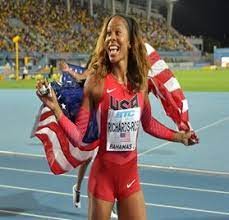
By the time of the final just under two hours later, the wind was blowing in the other direction. But despite the -1.0m/s headwind, Richardson was a clear winner in 10.86 from Oliver (10.99) and Daniels (11.03).
After the race, Richardson headed over to the stands and celebrated with her grandmother. “My grandmother embracing me is honestly great,” said Richardson. “She was always in my corner. She is my heart. She is my super woman. Being able to cross the finish line and run up the steps felt amazing after becoming an Olympian.”
Allman, like Richardson, was one of the other big favourites heading into the US Trials. She set out her stall in the qualifying round on Friday, throwing a meeting record of 70.01m – just 14 centimetres shy of the US record she set earlier this year. She came close to matching that in the final on Saturday, opening with 69.45m before improving to 69.92m in round two.
She rounded out her series with throws of 66.36m, 68.65m and 68.46m, sending a clear signal to her overseas opponents that she’ll be a force at the Olympics later this year. Micaela Hazlewood threw a PB of 62.54m to take second place, but she’ll have to wait and see if she’ll qualify through the world rankings. Third-placed Rachel Dincoff (60.21m) is in possession of a qualifying mark and so will be able to take up her place on the US team.
Scantling leads decathlon
Garrett Scantling has enjoyed one of his best ever starts to a decathlon and leads at the half-way stage with 4494 – almost 100 points up on his day-one score from earlier this year when he set his PB of 8476.
But in a high-quality and competitive contest, Kyle Garland (4424) and 2016 Olympian Zach Ziemek (4409) are close behind, setting up a potentially exciting finish for the second day of decathlon action.
Scantling started with a 100m PB of 10.53 and followed it with a wind-assisted 7.61m leap in the long jump, after which he took the lead. He maintained his position after winning the shot put with 15.91m, but dropped to third in the standings after the high jump as Garland (2.17m) and Ziemeck (2.14m) produced the best marks of that discipline and so moved up in the standings.
But Scantling produced a 48.86 run in the 400m, comfortably ahead of Garland (51.58) and Ziemek (50.89) to regain the lead at the end of the first day.
(06/20/2021) ⚡AMPby World Athletics
China punishing 27 officials after deadly ultramarathon
Runners everywhere were shocked last month when they learned on May 23 that 21 athletes had died of hypothermia when extreme weather hit the Huanghe Shilin Mountain Marathon in the northwestern province of Gansu, China. According to a report by CNBC, 27 government officials deemed responsible for the incident, which was one of the world’s deadliest sporting tragedies in recent history, have been punished.
The Gansu government opened a formal investigation soon after the tragedy occurred, and on Friday they announced that several government officials had been dismissed from their posts, including the head of Jingtai county, where the race was held. The mayor and the Communist Party chief of the city of Baiyin, the jurisdiction in which Jingtai belongs, were also dismissed, while several others received major “demerit ratings” and disciplinary warnings.

According to the investigators, the tragedy was a public safety incident, caused by extreme weather, high winds and cold temperatures, along with unprofessional organization and operation. Just over a week ago, China’s sport administration also announced that it was suspending all high-risk sports events that lack a supervisory body, established rules and clear safety standards, including mountain and desert trail sports, wingsuit flying and ultra-long distance running.
(06/20/2021) ⚡AMPby Running Magazine
Western States 100 preview: pre-race favourites
Women’s field - There are three former WSER champions entered in this year’s race: Gallagher, who won in 2019, 2016 winner (and 2019 third-place finisher) Kaci Lickteig and 2015 champ Magdalena Boulet. All three women are American, and they’ll be joined on the WSER start line by several of their high-profile compatriots. Brittany Peterson, the second-place finisher from 2019, will be in the race for just the second time in her career, along with Nicole Bitter, the seventh-place woman in 2019, which was also her WSER debut.
Pascall and Drew headline the international entries in the women’s field. Pascall, who hails from Great Britain, finished fourth in 2019, and she is a serious threat to take the win this year. Earlier in 2021, she won the Canyons 100K in California, and in 2020, she broke the Bob Graham Round FKT in her home country. She has also recorded two top-five finishes at the past two editions of the famed Ultra-Trail du Mont-Blanc. Pascall is in incredible form, and she’s a threat to run away with this year’s race, which would make her the first non-American woman to win the WSER title since Ellie Greenwood (who is British but lives in Canada) in 2012.
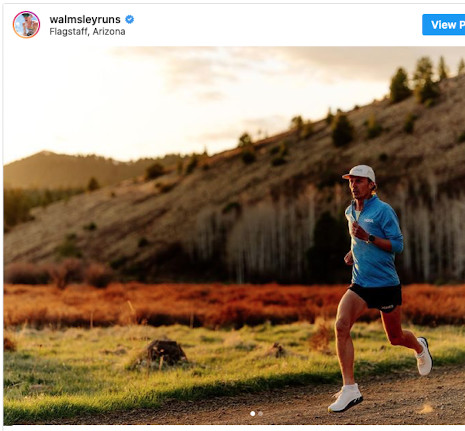
This will be Drew’s second WSER appearance, and she, too, has what it takes to improve on her result from 2019. She has several big wins to her name, including top finishes at the Chuckanut 50K and Canyons 100K in 2019. She has also represented Canada at the IAU Trail World Championships. B.C.’s Sarah Seads will also race in California, making her first WSER appearance.
When it comes to debut WSER runs, there are several big names to watch. New Zealand’s Ruth Croft is having a tremendous season, with a pair of big wins. Her first came at the Tarawera Ultra in Rotorua, New Zealand, where she won the overall title in the 102K race. A few months later, she was in action in Australia, where she won a 50K race in Katoomba, a town west of Sydney, at Ultra-Trail Australia.
France’s Audrey Tanguy is also running WSER for the first time. Tanguy has had a great year so far, first winning the Hoka One One Project Carbon X 2 100K event in Arizona in January and then following it up with a third-place finish at the Canyons 100K in April. She is also a two-time UTMB TDS winner (2018 and 2019).
Finally, there’s American ultrarunning star Camille Herron. The owner of multiple American and world records, Herron is another threat for the win at WSER. She has won the Comrades Marathon, multiple world championships and many other races around the world, and it shouldn’t be a surprise if she adds a top WSER finish to her resume.
Men’s field - The only WSER champion in the 2021 field is Walmsley, who has won the past two editions of the race. In 2018, he won in 14:30:04, and a year later, he set the course record with an incredible 14:09:28 run. This year, he has raced one ultramarathon, Hoka’s Project Carbon X 2, which he won in 6:09:26, coming extremely close to breaking the 100K world record of 6:09:14. That was several months ago, but if his fitness is anywhere close to where it was at that race, he should be able to lay down another historic WSER run.
Walmsley’s fellow American Jared Hazen, the 2019 runner-up, is also set to race this year. In 2019, Hazen ran a remarkable time of 14:26:46, which would have easily won him the WSER title if Walmsley hadn’t been in the race. He’ll be looking to take that final step onto the top of the podium this year.
A pair of Americans making their WSER debuts are Tollefson and Hayden Hawks. Tollefson has several big wins to his name in the past year alone, including titles at the 2020 Javelina Jundred 100 Miler and USATF 50-Mile Trail Championships. He has also recorded victories at the 120K Lavaredo Ultra-Trail race in Italy in 2019 and the 100K Ultra-Trail Australia in 2017, along with a pair of third-place finishes at UTMB in 2016 and 2017.
Hawks has won many races throughout his career, including the JFK 50-Miler in 2020. He set the course record of 5:18:40 at that race, beating Walmsley’s mark of 5:21:28 from 2016. The WSER course is twice as long as the JFK 50, but Hawks has proven he can match or better Walmsley’s efforts, so it will be interesting to see how he fares in California.
(06/20/2021) ⚡AMP
by Running Magazine
Shelby Houlihan will not compete at Trials after all
The U.S. Olympic track and field trials are set to start today, and American 1,500m and 5,000m record holder Shelby Houlihan will not be on the start line, after all. Mere hours after the USATF announced she would be permitted to compete, the U.S. Olympic and Paralympic Committee reversed the decision in an effort to remain in line with the Court of Arbitration for Sport’s (CAS) ruling to uphold her four-year ban.
Earlier this week, the track and field world learned that Houlihan had received a four-year ban after she tested positive for the steroid nandrolone. She protested vehemently that she had ever taken performance-enhancing drugs, blaming the positive test on contaminated meat in a burrito she had eaten 10 hours before being tested.
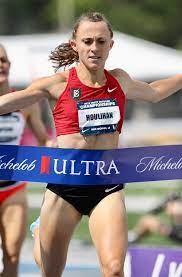
The reversal came after pushback from the international anti-doping community as well as several prominent elite runners, who believed a banned runner should not be permitted to compete at trials. The Athletics Integrity Unit (AIU), which runs the anti-doping program for World Athletics, released a statement Thursday saying that the USATF must respect and implement the decisions of the CAS. The Clean Sport Collective also published a petition against letting her compete, signed by a number of athletes, including Des Linden, Steph Bruce, Mary Cain, Emma Coburn, Mason Ferlic, Molly Seidel, Emily Sisson and retired Canadian pro runner Nicole Sifuentes.
Under normal circumstances, athletes who test positive for a banned substance first have a hearing before the AIU, but with the Olympic trials so close, Houlihan took her appeal straight to the CAS in Switzerland. The CAS upheld her ban, which leaves her with only one option: to appeal the CAS decision before a Swiss Federal tribunal. According to sources, however, this avenue is only for matters of procedure, while the decision itself is binding. Not only will Houlihan miss this year’s Olympics, but she will miss the 2024 Games also.
(06/19/2021) ⚡AMPby Running Magazine
The U.S. Track and Field Athletes Who Qualified for 2021 Olympics
The team representing the U.S. in Tokyo is a mix of veterans and first-timers.
The U.S. Olympic Track and Field Trials are taking place at Hayward Field in Eugene, Oregon, from June 18 through June 27, and the top three finishers in each event will represent the United States at the Olympic Games in Tokyo. Here’s a list of those who have already qualified and have met the Tokyo Olympic Standard.
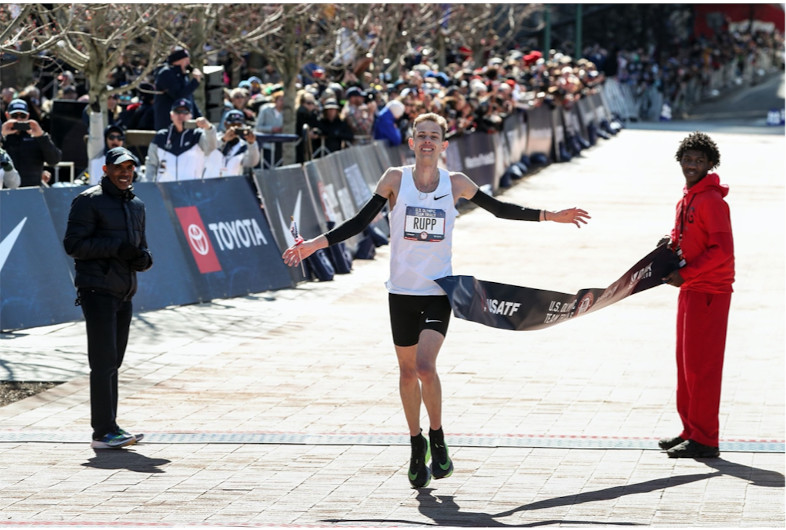
Aliphine Tuliamuk — Women’s Marathon
Qualified: First in 2:27:23
Olympic history: This will be Tuliamuk’s first Olympic appearance.
Molly Seidel — Women’s Marathon
Qualified: Second in 2:27:31
Olympic History: This will be Seidel’s first Olympic appearance.
Sally Kipyego — Women’s Marathon
Qualified: Third in 2:28:52
Olympic History: 2012 — Silver medal in the 5,000 meters.
Galen Rupp — Men’s Marathon
Qualified: First in 2:09:20
Olympic history: 2016 — Bronze medal in the marathon, fifth in 10,000 meters; 2012 — silver medal in 10,000 meters, seventh in 5,000 meters; 2008 — 13th in 10,000 meters.
Jake Riley — Men’s Marathon
Qualified: Second in 2:10:02

Olympic history: This will be Riley’s first Olympic appearance.
Abdi Abdirahman — Men’s Marathon
Qualified: Third in 2:10:03

Olympic history: 2012 — DNF in marathon; 2008 — 15th in 10,000 meters; 2004 — 15th in 10,000 meters; 2000 — 10th in 10,000 meters.
(06/19/2021) ⚡AMPby Runner’s World
Woody Kincaid Wins the Men’s 10,000 Meters at the Olympic Track and Field Trials
In the first track final of the U.S. Olympic Track & Field Trials, Woody Kincaid, Grant Fisher, and Joe Klecker earned spots on Team USA heading for Tokyo.
Kincaid, 28, finished in 27:53.62, by virtue of a blistering final 400 meters, which he covered in 53.47. His Bowerman Track Club teammate Fisher, 24, was less than a second behind in 27:54.29, and Klecker, also 24, of the new On Athletics Club in Boulder, ran 27:54.90.
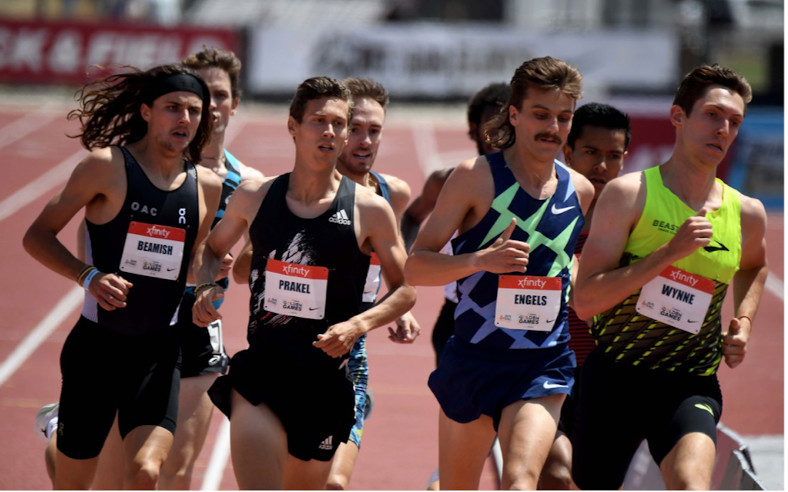
Ben True, 35, finished in hard-luck fourth place; he couldn’t match the closing kick of the three Olympians and crossed the line in 27:58.88. True, who has never made an Olympic team, will be the alternate.
The race opened up with a fast pace, because most of the field did not have the 27:28 Olympic qualifying standard they need—along with a top-three finish—to earn a trip to the Games. This race was the last chance for them to run the standard.
Conner Mantz of BYU, Robert Brandt of Georgetown, and Frank Lara of Roots Running ran up front for the first two miles, but by halfway, reached in 13:56, the pace slowed, leaving no hope for anyone without the standard to get onto the team. Lopez Lomong dropped out, grabbing his right leg, as did Eric Jenkins, leaving only five men with the standard in the field.
The big crowd in the early miles was distracting for Kincaid. “My confidence was the lowest 10 laps in, that’s when the doubts really crept in,” he said in a press conference after the race. But as the miles clicked off, the pace slowed, and he made his way to the front, he felt better. “With four laps to go, this is what I had practiced in my mind over and over. I’m going to get into third or fourth position, just like practice, and that’s what happened.”
Kincaid said his last lap was the easy part: “It’s just everything you’ve got,” he said. “Getting there, in a position to win, is the hard part.”
He had praise for his teammate, Fisher, whom he runs with every day. “It’s a shame that I like him so much, because I have to race him all the time,” Kincaid said.
Kincaid said he plans to race the 5,000 meters and if he makes the team in that event, he’ll do both the 10,000 meters and 5,000 meters at the Games.
Fisher was soaking in the moment. “I’ve dreamed about this moment, but even now it doesn’t feel real,” he said in the post-race press conference. “I don’t even know how to describe it, but I’m just so happy.”
Klecker, the third-place finisher, had his collegiate career at the University of Colorado shortened by the pandemic. “This means a lot,” he said. “I mean I had my NCAA career cut short. I never won an NCAA title, but making an Olympic team makes up for that.”
He is the son of Janis Klecker, a 1992 Olympian in the marathon for the U.S. Her advice? Candy. “She told me that the night before she made an Olympic team, she ate a Snickers bar, and I followed that to a tee and it worked out,” Klecker said.
True said he was turning his attention to the 5,000 meters later in the meet, but he has plenty of other things to look forward to. His wife is expecting their first child on July 15, and he’ll make his marathon debut this fall.
Galen Rupp, who already is representing the U.S. in the marathon, finished sixth in 27:59.43.
It is the first Olympics for Kincaid, Fisher, and Klecker. The event represents a changing of the guard—the top three are a complete turnover from the 2016 squad, when Rupp, Shadrack Kipchirchir, and Leonard Korir were the Americans who went to Rio in the event.
(06/19/2021) ⚡AMPby Runner’s World
Use Threshold Training to Run Faster, Longer
The primary purpose of training is to enable your body hold a faster pace for a longer time. The first step toward getting faster is building an aerobic base of easy miles and improving running economy through strides and short intervals. After you’ve developed a base, the best way to go faster for longer is through threshold training.
Mention threshold training in a group of coaches, and an Anchorman-like rumble will erupt in a minute or two. If you search threshold-training philosophy online, keywords like “tempo” and “steady state” seem to mean slightly different things to everyone. But there’s no need for things to escalate quickly into a brawl over slight disagreements on terminology, since the basic principles are universal.
What do we mean by threshold?
Contrary to conventional wisdom, lactate is a fuel source, not a boogeyman that forces you to slow down. However, it is associated with waste products that force you to slow down, so for most runners it’s a distinction without a difference. Lactate threshold (LT) is the tipping point when your body produces more lactate than it can use and waste products accumulate without being cleared.
Similar to LT, anaerobic threshold (AnT) measures the point at which your body starts burning glycogen rather than fat as its primary fuel source. AnT and LT are often close to one another, and most athletes can probably get by without differentiating them.
In lieu of lab testing, LT usually corresponds to an effort you could hold for about an hour, though it varies based on physiology, training background and the LT definition you prefer. It should feel somewhat hard, a seven or eight out of 10 on the perceived exertion scale, where you can talk in short sentences, but not sing.
You can calculate your LT heart rate (LTHR) by doing a 30-minute time trial. At 10 minutes, lap out your watch—the average heart rate for the final 20 minutes is your LTHR.
Why do we care about lactate threshold?
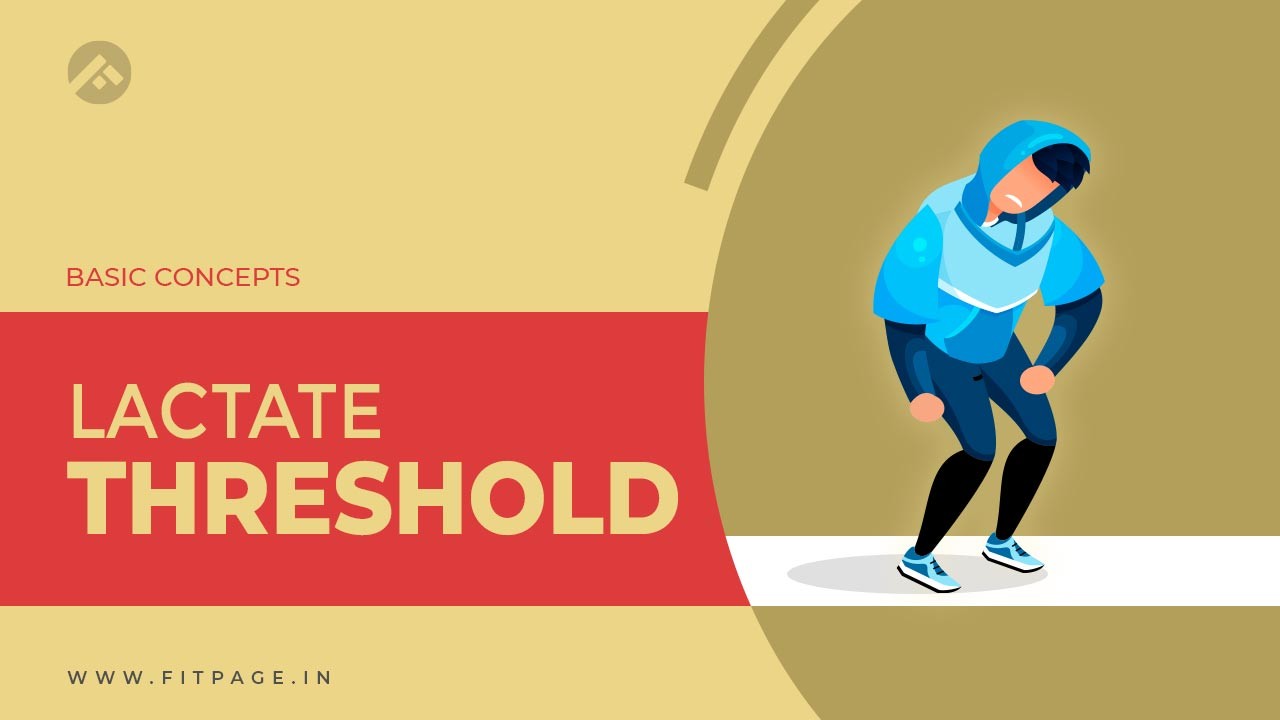
Lactate threshold is often the most important element in determining running success in long-distance races, even at races far longer than an hour. The power of LT likely comes from a few factors. First, it is trainable, meaning well-trained athletes will have higher LTs and will run faster in races (whereas VO2 max is less willing to budge). Second, exceeding LT results in relatively rapid onset of fatigue, so improving LT raises the “point of no return.” Finally, LT is usually associated with performance at lower levels of exertion like aerobic threshold and even more intense exertion levels, like VO2 max.
What matters is how fast you can run at your LT, or your velocity at LT (vLT). On trails, vLT gets a bit more complicated, mixing how fast you can run on flat ground with your ability on hills and technical terrain.
How can we improve vLT on trails?
High-volume aerobic training can improve LT the most. So before worrying too much about intricate workouts, build aerobic volume at “Zone two.” Zone two itself is subject to debate, but you can think of it as an aerobic intensity that is a five or six on the perceived exertion scale, or easy to easy-moderate exertion where you can comfortably hold a conversation. For my athletes, we use 81 to 89 percent of LTHR.
For most athletes, at least 80-percent of your training should be aerobic. Add fast strides and short intervals to aerobic training to improve running economy, and you are ready for intervals that directly target LT. The extent of aerobic training depends on your background and goals, but most athletes should spend at least a few weeks doing easy running before jumping into harder workouts.
Now is when “threshold” or “tempo” running comes in. Remember, tempo usually corresponds with the effort you could sustain for about an hour. It’s not a race—by training at LT, rather than going as fast as you can, you can elicit more improvement. The general principle is to run 20 to 45 minutes at LT over the course of a workout, broken up as needed, on terrain that suits your goals.
What are examples of LT workouts?
Within those general constraints—20 to 45 minutes at LT—LT workouts can take any form. You can do the LT workout in one tempo run, or over the course of intervals with half the recovery time or less (Coach Jack Daniels would call these “cruise intervals”). Here are five examples (do 20 minutes of easy running before and after each workout).
The Steady Freddie: Thirty minutes at LT on terrain similar to your race. This workout is hard, but not so taxing that you’ll need to be scraped off the trail with a spatula. You can also take a couple minutes of easy running recovery in the middle. This workout is simple and achievable, good for all levels.
The Cruisey Susie: Six to eight x 4 minutes at LT with two minutes of easy recovery. This “cruise interval” workout is an ideal intro to LT training, since the recovery periods make it comfortable. It has the benefit of making sure you are running fast at LT, since many trail runners will have biomechanical fatigue with sustained efforts that is lessened with shorter intervals. Don’t go too fast, even though you’ll be tempted to.
The Crooked Buzzsaw: Eight to 12 x 3 minutes uphill at LT with one minute of jog down recovery. For this workout, you need a long hill. This workout is relatively low stress, with reduced pounding, so is a great option for low volume runners or runners over 50.
Like Riding a Bike: Two x 20 minutes at LT with five minutes of easy recovery. This workout mimics the classic bike workout designed to improve power. Since the physiological principles are the same, it’s also one of the best run workouts, but comes with additional injury risk since 40 minutes at LT running involves lots of pounding on your legs. Only advanced runners should do the full workout.
Ladder to Heaven: 1/2/3/4/5/4/3/2/1 minutes at LT with one minute easy recovery. This workout is similar to the Cruisey Susie, but with some variation in interval length that keeps it fresh. Ladders are a great option to optimize time at LT while keeping the run interesting.
When are LT workouts most beneficial?
The goal is to train your body to go faster at LT, so it’s essential to do LT workouts rested and ready, providing enough recovery time afterward for adaptation. In general, do no more than two LT workouts each week. For trail runners, a great option is to embed a LT workout within a weekend long run. For example, the Crooked Buzzsaw (30 minutes at LT) can be added in the middle of a two- or three-hour run. Like all training, LT workouts have diminishing returns, so after four to six weeks, mix up your training, emphasizing more intense VO2 max efforts or longer aerobic threshold training.
Smooth is sustainable. Lactate-threshold training helps make your smooth pace faster, which means you’ll be able to sustain faster paces on race day.
(06/19/2021) ⚡AMP
by Trail Runner Magazine
Ron Hill turned the art of marathon running into a science and wrote the playbook for generations to come wrote Seb Coe
A tribute to Ron Hill. World Athletics is deeply saddened to hear that Britain’s Ron Hill, the 1969 European marathon champion, died on Sunday May 23 at the age of 82.
Aside from his major championship medals and four world records, Hill is best known for his dedication to athletics. He laid claim to the longest unbroken streak of running every day, a stretch that lasted 52 years and 39 days, from 1964 to 2017.
Born in Accrington in the north-west of England in September 1938, Hill first came to prominence in the early 1960s and made his international debut at the 1962 European Championships in Belgrade. He failed to finish the marathon there, however, and fared only slightly better at the 1964 Olympic Games in Tokyo, finishing a distant 18th in the 10,000m and 19th in the marathon.
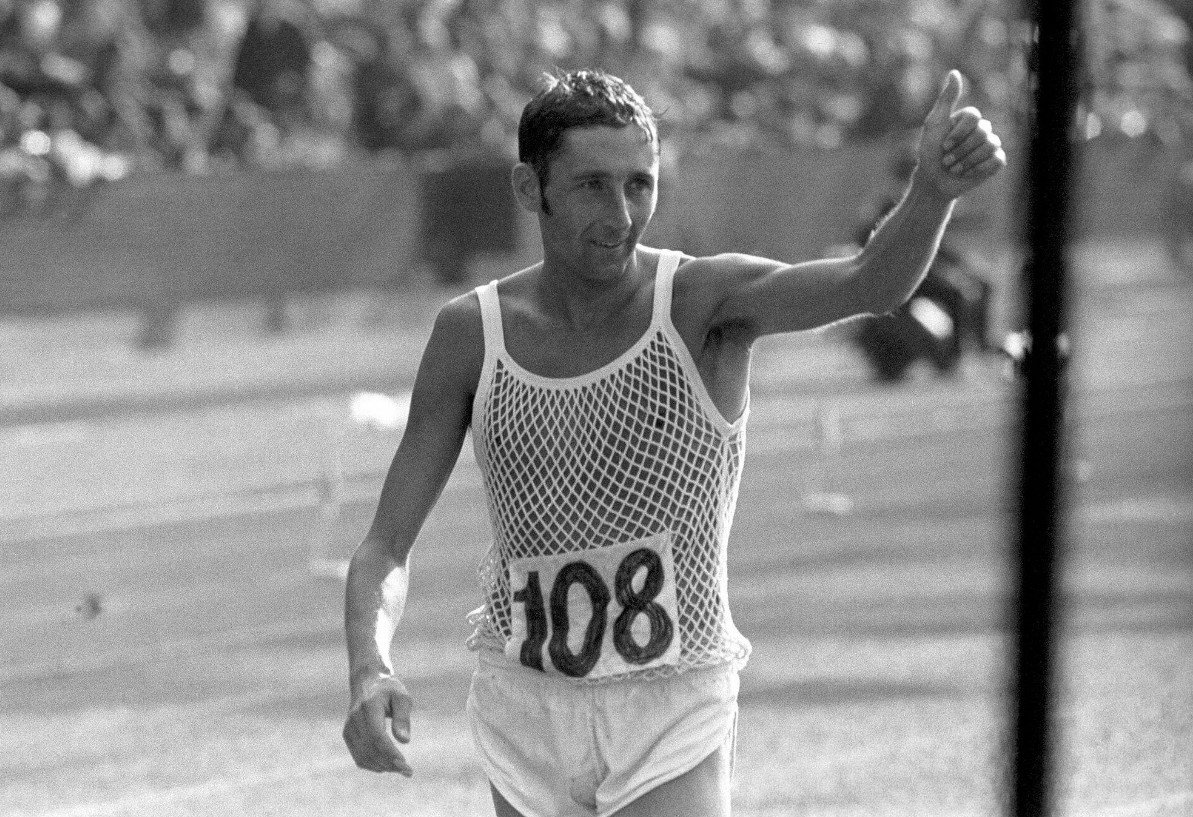
Hill rebounded one year later, though, and set the first world record of his career. Competing at the Leverhulme Park track in Bolton, Hill broke two of Emil Zatopek’s long-standing world records in one fell swoop, clocking 1:15:22.6 for 25,000m and passing through 15 miles en route in 1:12:48.2.
His championship performances started to improve in the late 1960s as he placed 12th in the marathon at the 1966 European Championships and seventh in the 10,000m at the 1968 Olympics, having been controversially overlooked for a place on the marathon team.
He set two more world records in 1968, both at 10 miles. In April he clocked 47:02.2 in Leicester to break Ron Clark’s record, passing through 10,000m in 29:09.4 and 15,000m in 43:54, an unofficial world best time.
Later that year, one month after his Olympic appearance, Hill attempted to break Gaston Roelants’ one hour world record of 20,784m. He fell slightly short of that target, covering 20,471m, but passed through 10 miles in a world record time of 46:44.0.
Though that was to be the last world record of his career, Hill became a big-time performer from that point onwards, winning big city marathons and landing major medals.
He won the European marathon title in Athens in 1969, then in 1970 he became the first British runner to win the Boston Marathon, smashing the course record by three minutes with 2:10:30. A few months later, at the Commonwealth Games in Edinburgh, he came the second man to break the 2:10 barrier for the marathon, winning gold in a European record of 2:09:28, having covered the final 10km in 29:24 (2:04 marathon pace).
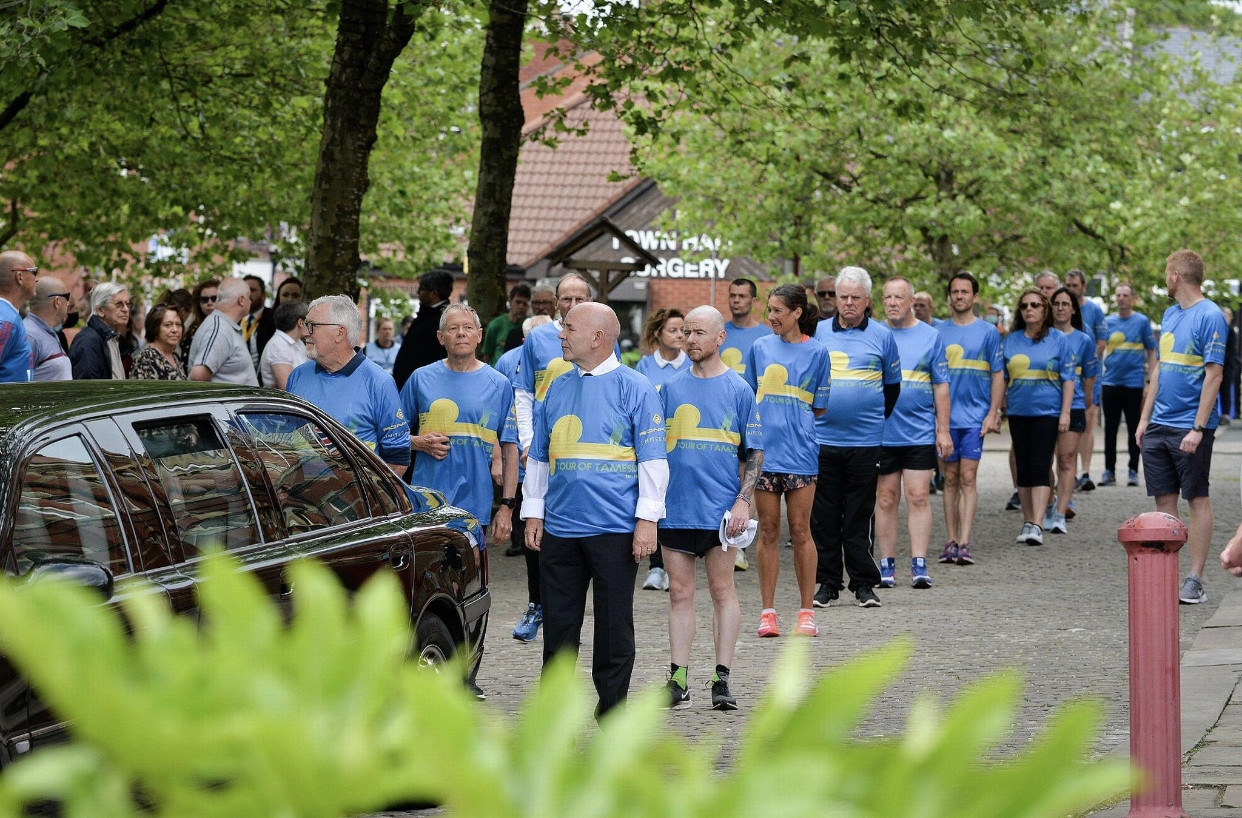
He went on to take bronze in the marathon at the 1971 European Championships before making his final Olympic appearance in 1972, placing sixth in the marathon – his highest ever finish at the Games.
Hill continued to produce world-class marathon times through the 1970s, including a 2:12:35 victory at the Debno Marathon in 1975 at the age of 36, ranking him eighth in the world that year. He finished fourth at the 1976 Olympic Trials, but went on to represent Britain at various masters championships.
Hill was ahead of his time with regards to training and he was one of the first elite athletes to use the Saltin-Hermansson diet – better known as the glycogen depletion diet or ‘carb-loading’ – which he credited as playing a big part in his success at the 1969 European Championships. Ever since, it has been adopted by millions of runners as a key part of marathon preparation.
Hill, who had a PhD in textile chemistry, often raced in breathable mesh vests to help keep cool. Towards the end of his elite career, he founded Ron Hill Sports and produced top-of-the-line running clothes. He also created the Ronhill and Hilly brands, both of which are still going strong today.
Hill’s streak of consecutive daily runs – which he defined as completing a distance of at least one mile at any pace – began on 20 December 1964 and lasted for more than 52 years. He even managed workouts after a car crash in 1993 when he broke his sternum, and after bunion surgery.
In December 2013 when his streak entered its 50th year, Hill’s total logged lifetime mileage stood at 158,628 miles. His streak ended on 30 January 2017 when he experienced chest pains during a run.
“I did everything I could to be the best in the world,” he said in 2019 in an interview with Inside The Games. “I couldn't train full-time, couldn't train at altitude, couldn't afford back-up support – I only ever had two massages in my life – and when I was injured I just had to run through it. I never made any money at it, but you can't take away the gold medals.”
World Athletics President Sebastian Coe paid tribute to Hill.
"Ron Hill turned the art of marathon running into a science and wrote the playbook for generations to come," said Coe. "He was a one-off. His contribution to the classic distance is immense."
(06/18/2021) ⚡AMPby Sebastian Coe (World Athletics)
What to Watch For in the U.S.A. Track & Field Olympic Trials
For months, they have trained in relative isolation. They have triple jumped in empty stadiums and chased qualifying standards on high school tracks. You may have heard this before, but the pandemic created challenges for American track and field athletes.
For those who managed to push through the long delay, a meet five years in the making has finally arrived: The U.S. Olympic track and field trials are set to start on Friday afternoon at the University of Oregon’s Hayward Field, a freshly renovated stadium that — barring something else unforeseen — will also host the world championships next year.
But first come the trials. As athletes from across the country bid to compete at the Tokyo Games this summer, here is a look at what to watch over the coming days:
What’s the schedule?
Glad you asked. It is a long meet — 10 days, with two rest days built in the middle — running from Friday through June 27. There are 40 events in all (20 for the women, 20 for the men), with preliminary rounds for most of them. On Friday, for example, there are preliminary rounds in events ranging from the women’s discus to the men’s 800 meters. There are also two finals scheduled for the first day, in the men’s shot put and the men’s 10,000. On Sunday, eight more champions will be crowned, including in the men’s 100. (More on that later.)
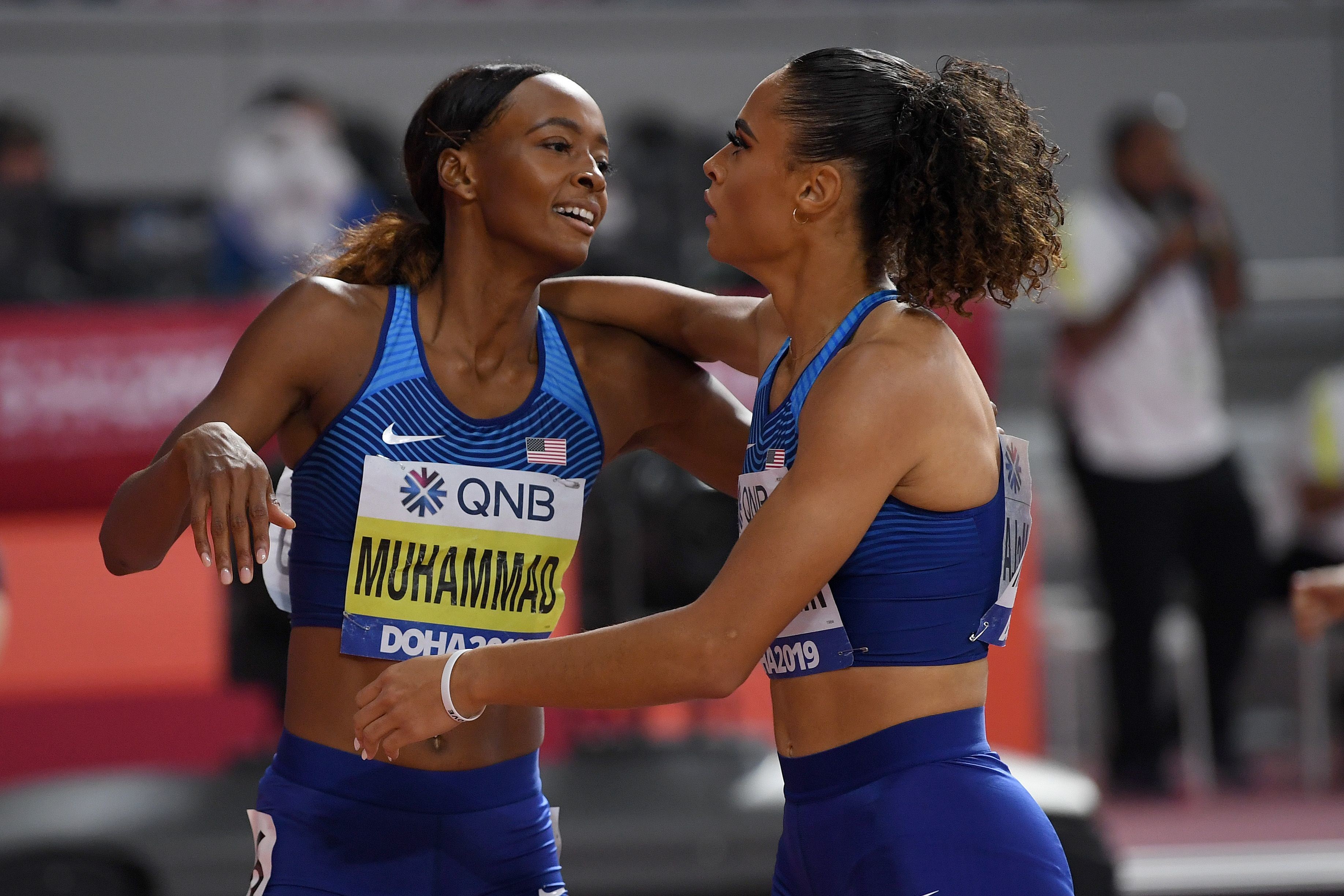
So who gets to go to the Olympics?
The top three finishers in each event qualify, provided they have reached the Olympic standard. If not, they have until July 1 to attain it.
Who are some of the most compelling athletes to watch?
Any list like this has to start with Allyson Felix, the nine-time Olympic medalist who is aiming to compete in her fifth and final Olympic Games. A onetime prodigy who is entered in the 200 and 400 meters, Felix, 35, long ago secured her place as one of the sport’s most revered and respected figures. She has advocated for gender equality since giving birth to her first child in 2018.
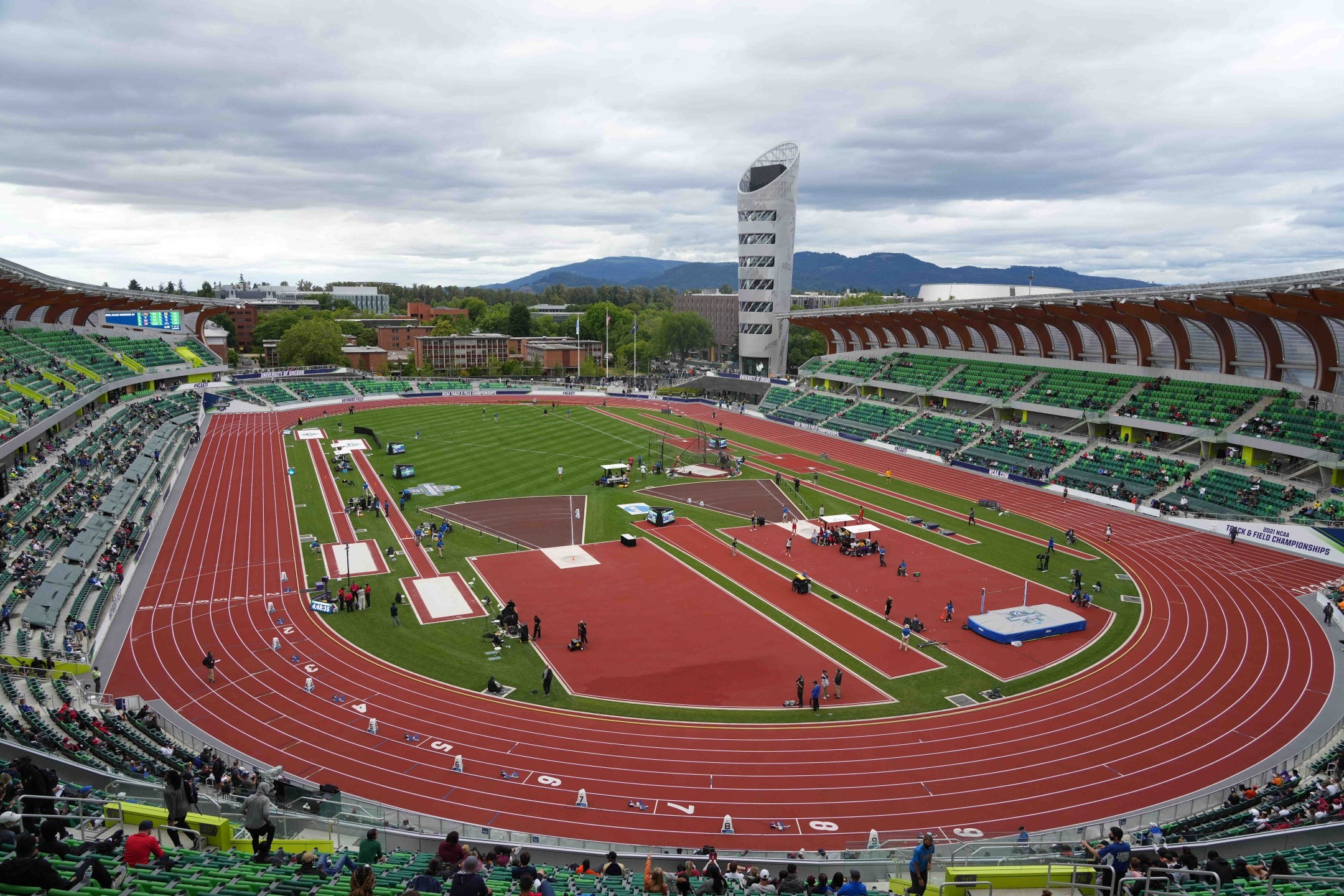
Felix’s retirement will leave a void among the American women, and Sha’Carri Richardsonseems prepared to help fill it. In April, she ran the sixth-fastest 100 in history. Richardson, just 21, is unapologetically brash while consistently coming through with fast times and big performances. She is easy to spot, too: Just look for her colorful hair.
In the women’s 1,500 meters, Elle Purrier St. Pierre is the favorite after a string of convincing victories this season. She grew up on a dairy farm in Vermont, where she would train by running to the Quebec border and back. Her sponsors include Cabot Cheese.
Donavan Brazier is the American record-holder and reigning world champion in the men’s 800. He seems determined after failing to qualify for the Olympics in 2016.
And Sam Kendricks, who has won back-to-back world men’s pole vault championships, is the heavy favorite in Oregon. His toughest competition figures to be in Tokyo, where Mondo Duplantis, who grew up in Louisianabut competes for Sweden, will be waiting. Duplantis, 21, already owns the world record but is seeking his first Olympic gold.
How about a few must-see events?
No, we didn’t forget about Noah Lyles, the world champion in the men’s 200 meters. Lyles wants to double in the 100 and 200 meters in Tokyo, and his 100-meter form has been coming along slowly. He will face a loaded 100-meter field in Eugene, Ore., headlined by the likes of Trayvon Bromell, who has run the fastest time in the world this year, and Justin Gatlin, the five-time Olympic medalist who has twice been suspended for doping. Americans have the six fastest 100-meter times in the world this year — and Lyles is not among them.
The field in the men’s 1,500 is also competitive. Matthew Centrowitz, the 2016 Olympic champion, was injured last year and benefited from the postponement. Craig Engels is the 2019 national champion, but he is equally renowned for his mullet. There is also a group of up-and-comers headlined by Cole Hocker, fresh off an N.C.A.A. title at Oregon, and Hobbs Kessler, the fastest high school miler ever.
The most anticipated showdown, though, could materialize in the women’s 400-meter hurdles. At the 2019 world championships, Dalilah Muhammad, 31, had to break her own world record to outrun Sydney McLaughlin, one of the sport’s rising stars. Muhammad, the Olympic champion in Rio, has been working in recent weeks to return to form after injuring her hamstring. McLaughlin, 21, spent much of the spring fine-tuning her speed and technique while competing in the 100-meter hurdles. If both athletes are healthy, their final — held on the final day of the meet — should be a highlight.
Who’s missing?
The trials got a harsh dose of reality this week when Shelby Houlihan, the American record-holder in the women’s 1,500 meters, was suspended from competing for four years after she had tested positive for an anabolic steroid. Houlihan has maintained her innocence, claiming she ate tainted pork from a food truck. For about eight hours Thursday, it seemed that Houlihan might still be able to run while she appealed the ban, but ultimately the U.S. Olympic & Paralympic Committee stepped in and said that she could not participate in the trials.
Speaking of suspensions, that deep field in the men’s 100 meters is missing an important name: Christian Coleman, who won the 2019 world championship under a cloud of suspicion, and was subsequently suspended for missing a series of drug tests.
Also absent will be Christian Taylor, the two-time Olympic champion in the men’s triple jump. Taylor ruptured his Achilles’ tendon at a meet last month and underwent surgery. He has vowed to make a comeback in time for next year’s world championships.
On the bright side, several American runners will not be at the trials — but only because they have already punched their tickets for Tokyo. We are referring, of course, to the marathoners, whose trials were staged all the way back in the prepandemic era, in February 2020. Galen Rupp, Jacob Riley and the seemingly ageless Abdi Abdirahman, 44,qualified for the men, while Aliphine Tuliamuk, Molly Seidel and Sally Kipyegomade the women’s team. (Rupp, a two-time Olympic medalist, is expected to compete in the 10,000 on Friday, though he told OregonLive.com last month that he would treat the race as a rigorous training run and appears to have no intention of running the track event in Tokyo.)
Is it on television?
NBC and NBCSN will provide live daily coverage of the meet.
(06/18/2021) ⚡AMPby Scott Cacciola (NY Times)
We miss the old Hayward Field stadium but the new $270 million stadium is amazing
After much anticipation, the newly renovated Hayward Field finally opened for business this spring, and athletes and track fans alike were in awe at the jaw-dropping $270 million dollar facility. Unless you’ve been fortunate enough to visit the stadium, however, you’ve likely only gotten to see it from the outside.
The inside of the stadium features a 270m oval track with a 140m straight for sprints. 23 feet below ground is the area known as the Vault where field event athletes can train during the winter months, which includes a pole vault pit, long jump pit, and a netted section for all the throws. To refuel after their workouts, athletes can head to the Waffle Shop (a tribute to the waffles shoe developed by Bill Bowerman), where they can get healthy snacks and meals or rehydrate at the Gatorade machines, and can even attend cooking classes to help them stay healthy when they’re at home.

Another unique aspect of the facility is Razor Bill’s Barbershop, where athletes can get their hair done, or even get their nails, hands and feet taken care of at the manicure/pedicure station. Finally, the state-of-the-art team lounge is a place where athletes can relax and hang out, and features ping pong tables and basketball nets where they can have some fun and unwind.
What many will notice above all else throughout the tour is the artwork featured in every room of the facility, which pays homage to Ducks and to the program’s history. This new stadium is a far cry from the historic Hayward Field the track world came to know and love, but the new facility rivals that major stadiums found in Europe and around the world.
(06/18/2021) ⚡AMPGeoffrey Kamworor ran the fastest time for 10000m in history at altitude
The 10000m race at the Kenyan Olympic Trials was one amazing event. The Kenyan Tokyo Olympic Trials happening June 17 to June 19 were moved from the Kipchoge Keino Stadium in Eldoret, to Moi International Sports Centre (MISC), Kasarani. Kasarani is located approximately 10 kilometres outside of Nairobi.
Athletics Kenya (AK) announced via press release that the changes are needed to test systems and requirements in readiness for the World Athletics Under-20 Championships which are planned for Aug. 17 to Aug. 22.
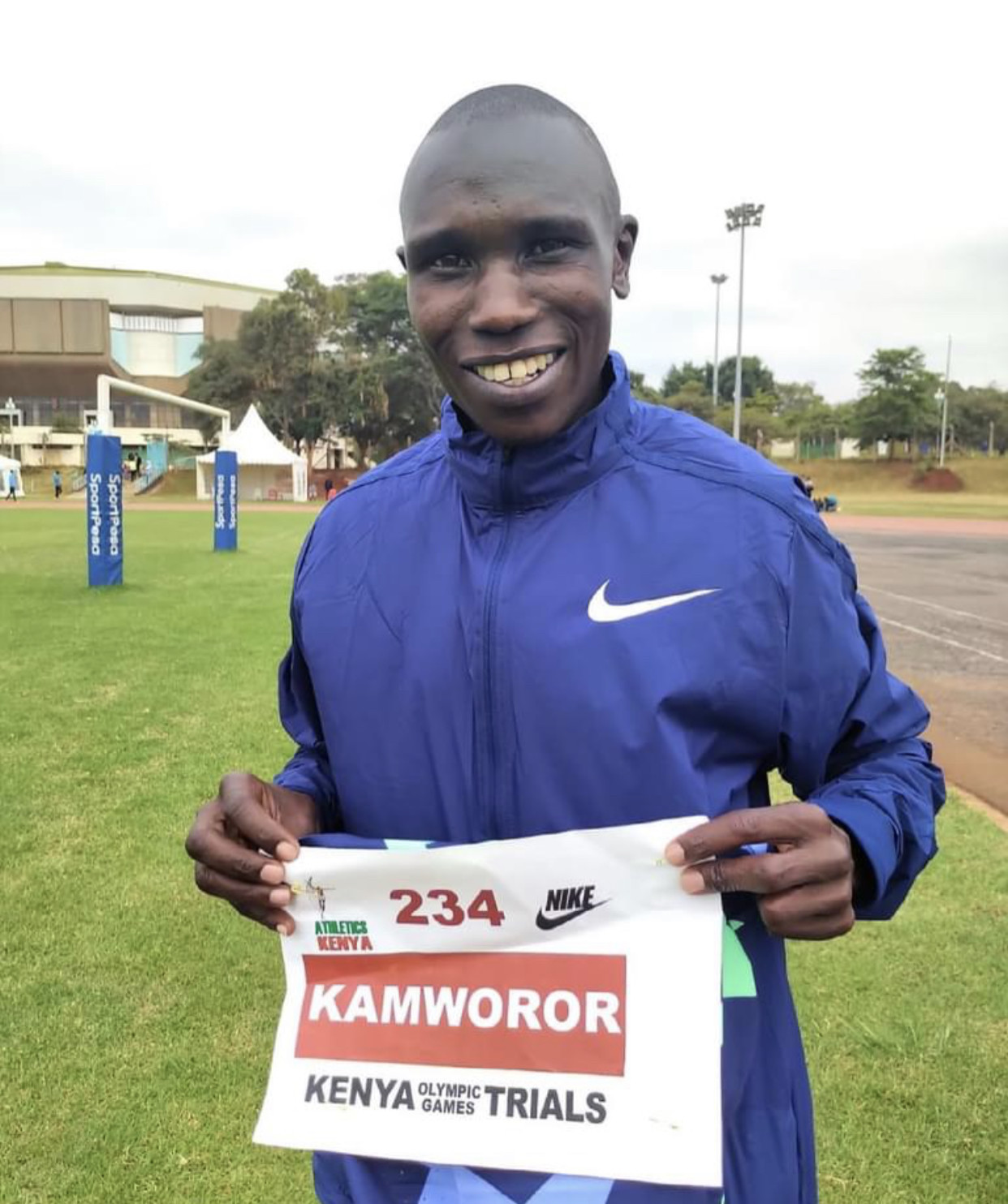
Geoffrey Kamworor clocked 27:01 for 10000m in the Kenyan Olympic Trials today. No one has run faster at altitude.
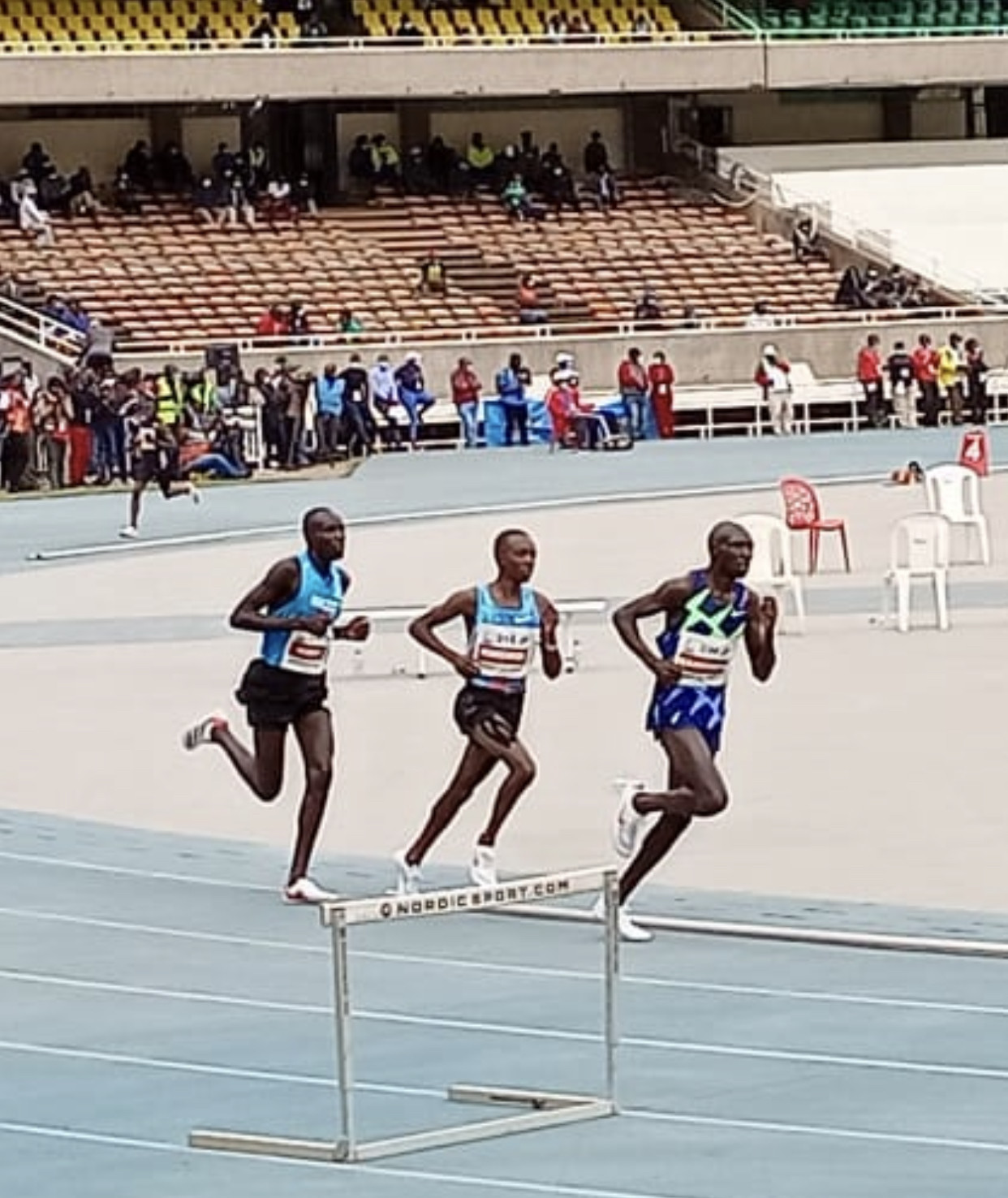
"I'm really happy to have qualified for the Olympics by running the fastest time in history in altitude. Now, we’re building on towards the bigger goal ahead," says Geoffrey Kamworor.
The altitude at the stadium is 1865 meters or 6118 feet.
Rodgers Kwemoi was second in a very fast 27:05.51 and Weldon Kipkirui Langat was third clocking 27:24.73. Ronex lead from the start but dropped out at 7k.
Geoffrey and Kwemoi were behind, when Geoffrey decided to break, Kwemoi resisted but with two laps to go Geoffrey made his big break and widen the gap winning by just over four seconds.
(06/18/2021) ⚡AMPSarah Lancaster was born to run but she also excelled in tennis and basketball too
If you’ve spent early mornings on the trails near downtown Austin, Texas you’ve probably crossed paths with Sarah Lancaster — 5 feet, 8 inches of mostly limbs and ponytail, casually eating up miles faster than you could drive on the Hike and Bike Trail, or sprinting so fast around the Austin High track off Lady Bird Lake that her male training partners have to tag each other in for pacing duty.
Lancaster is not just the fastest runner in Austin. She's one of the fastest women in the entire country, and she's competing at the U.S. Olympic Trials in Eugene, Ore., on Friday in both the 1,500- and 5,000-meter runs.
Her personal bests of 4 minutes, 5.55 seconds and 15:13.56 are only a few seconds off the Olympic standards of 4:04.20 and 15:10, meaning she can make this summer's Tokyo Olympics team if she can shave a few seconds off her best times and place in the top three.
Texas legend Trey Hardee, a 2012 Olympic silver medalist in the decathlon, recently declared Lancaster the best athlete in Longhorns history on Twitter, although that actually has as much to do with her pedigree as a dual-sport athlete at UT in tennis and basketball as it does her running resume.
At 33 years old, Lancaster is nearly 15 years behind most of her competitors in terms of specific training for distance running. She works full-time as an attorney in Austin, but nearly everyone who has run with her or coached her agrees: the former tennis ace possesses an unbeatable work ethic and killer instinct that makes her a natural on the track, no matter how late she found the sport.

Tennis beginnings
Lancaster grew up in San Antonio playing every sport offered, but quickly found herself drawn to tennis and basketball. She started taking tennis lessons when she was six years old and was competing in statewide tournaments by the time she was 11.
Lancaster's mother, Kelly, says Sarah was competitive "in everything. It wasn't necessarily sports," and that she inadvertently stoked the fire a few times when Sarah drew a tough opponent during a travel tournament.
“I would say, ‘Oh gosh, you play so-and-so today, I just hope you get a point,’” Kelly Lancaster said. “Because maybe it was one of the top girls in Texas. She’s commented that I’d pack up our bags to check out of the hotel because I knew she was playing somebody (who was a top seed). And you can always go check back in, but if you don’t check out by 10 or 11, then you have to pay for a whole ‘nother day.
“She said, ‘I’d see mom packing up the bags and think, ‘Obviously, she doesn’t think I’m gonna win today, so I’m gonna show her!' I really didn’t do it for that reason. I was thinking, ‘We’re done, I’m tired, we’re going home.’ Little things like that, I guess, motivated her a little bit to prove me wrong.”
Lancaster played tennis, basketball and ran track during her freshman year at Alamo Heights High School before deciding to enroll in a tennis academy that her coach established more than 200 miles away in Conroe. The academy is no longer in existence, but at the time was affiliated with John Roddick, the older brother of tennis star Andy Roddick.
“I was 15 at the time and, looking back at it, I can’t believe my parents let me do that,” Lancaster said.
A typical day at the tennis academy included two hours of practice in the morning, home school sessions for five to six hours, and another afternoon practice session that could last anywhere from two to three hours. There were about five other female boarders, more young men, and a number of local kids from the area who drove in for practice every day.
“We had a good time,” Lancaster said. “It was definitely not your normal high school experience. ... We were at tournaments a lot, we would go to the movies or just normal things like that ... (but) you’re there to play tennis and you’re there to get good, you’re not there to be partying and having fun.”
Lancaster thrived in the environment, improving her national and state rankings to become one of the best players in Texas.
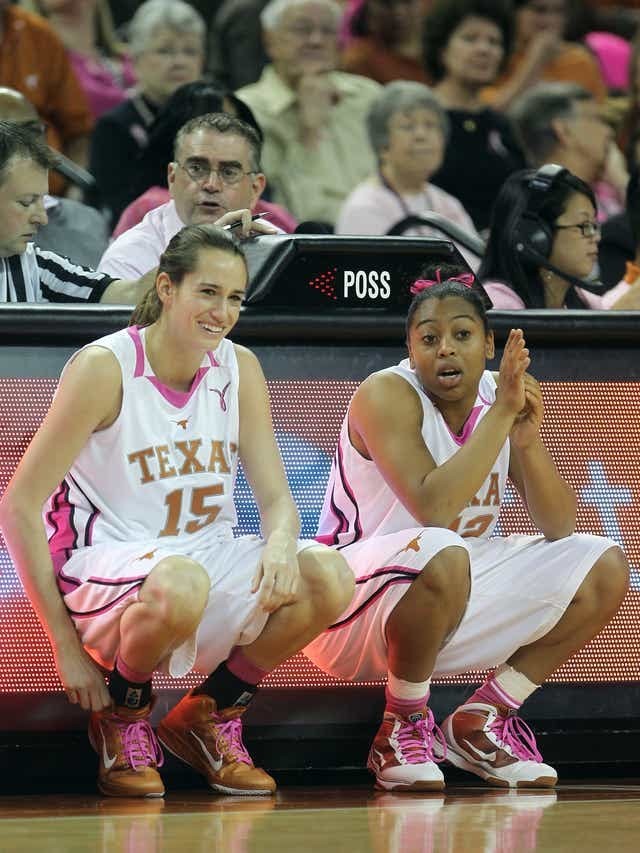
“For me, it was — I want to go and I want to get as good as I can and see what I can do,” she said of her motivation to attend the tennis academy. “Maybe a little part of me thought I was going to play professionally one day, but I think the focus for me was more on college ... making sure I was going to be recruited.”
Lancaster committed to Texas — "hands down my first choice" — but then suffered a stress fracture in her back and had to take a few months off from tennis. She moved back home and re-enrolled at Alamo Heights, where her old friends convinced her to play basketball again.
It was an easy sell. After all, she was already the best player when she was only a freshman.
"I talked to the UT tennis coach," Lancaster said. "'Hey, you know, I'd kind of like to play basketball. I think it would be fun for me and it might be good for me, coming back from this injury, to do a different sport.'" And she was agreeable to it as long as I taped my ankles for every practice or game."
The move was eerily prescient for her career at Texas. Also prescient — she ran a few track races (she said her best time was a 58-second 400 meters as a freshman).
Texas fight
Given her experience living away from home at the tennis academy, Lancaster’s transition to college and NCAA athletics was pretty seamless. The Texas women’s tennis team, which recently captured its third national championship, was solidly ranked within the top 10 to 20 programs in the nation during her years there, and as a senior in 2010, she helped the Longhorns to the Sweet 16 round of the NCAA Tournament while totaling a 25-8 singles record, including an 11-0 mark in the Big 12.
“She is one of the best competitors I ever coached,” former UT women’s tennis coach Patty Fendick-McCain said in a text message. “She was the most solid player I ever coached at her position and when the chips were down, I always knew she would come through. She didn’t care what line she played, but that she would get a ‘W’ and contribute to the team.”
Of her own heroics on the court, Lancaster says simply that her personal highlight of her college tennis career was “probably the fact that we beat A&M every time we played them.”
Bored over the summer after her senior year and with one extra semester of school to complete, Lancaster and one of her tennis teammates filmed a video of her doing a trick layup shot. They sent it to their coach, who forwarded the video to the women’s basketball coach at the time, Gail Goestenkors.
To Lancaster’s surprise, Goestenkors told her to go play some pick-up games that summer with the team.
"I went and played with them over the summer, and it was really just pick-up games, coaches couldn't come," Lancaster said. "I didn't really feel like I was completely in over my head, you know — I wasn't like, 'Oh, I'm better than any of these people that have been playing their whole lives and have been recruited to play at the University of Texas,' (but) I felt like I could hold my own."
Sight unseen, based on positive feedback from the players on the team, Lancaster was invited to officially join the roster in the fall.
"None of the coaches had ever seen me play and they basically told me that they would let me play on the team, which was a little bit terrifying,” she said. “The first practice, I was like, please do not miss a layup, please do not miss a layup.
"I think part of it was, the team was really young, there were six or seven freshmen. There was really only one other senior at the time on the team and I think they were just kind of like, 'Sarah knows how to be a student-athlete, she can help these freshmen.' And I guess they confirmed with some other people that I wasn't a terrible basketball player."
Lancaster stepped into the leadership role naturally, had fun at practice and was fine with getting less minutes as the season went on. Her personal highlight from her basketball career didn’t even take place in the Big 12.
"My only basketball highlight is in seventh grade, when I scored 46 points in a game," she said with a straight face.
'That’s just not something you see every day'
Paras Shah remembers the first time Lancaster showed up to a casual evening workout with RAW Running a few years ago. She made it up Wilke Road — a notoriously brutal 300-meter, 10.8% grade hill in the Barton Hills neighborhood — for all eight repeats, just a few strides behind Shah and the other former NCAA Division I male runners in the group.
"I asked her where she ran in college and she said she didn’t," said Shah, who ran at LSU. "(I thought) that’s obviously not possible. I just didn’t believe her.”
Lancaster was always naturally fast.
In mile time trials throughout her athletic career, she’d routinely clock in just under 5:30.
"Every running drill we did, Sarah was fastest and had the best endurance," Fendick-McCain said. "Her attitude was to leave blood on the court if necessary. She had better endurance than any other player I ever coached or that she played against. If it was a test of wills and endurance, she would always find a way to win."
When Lancaster started law school, she played in various recreational leagues and just had fun ("law school was the most free time I've ever had in my life," she said) while casually completing her first half-marathon. But a few years into the workforce, she happened to meet UT club running coach Kyle Higdon, a UT graduate student, and she asked him to train her to break five minutes in the mile.
"I just felt like that would be a cool thing to say I could do," she said. "And I had actually talked to multiple guys who told me that they tried to do it and couldn't do it. So I was, you know, even more motivated to try."
With light mileage (20-25 miles per week) and a few basic workouts under her belt, she clocked 4:46 in her first 1,500 meter race — the equivalent of a 5:07 mile. By the end of the spring, she had improved to about 4:30 for the 1,500, an incredible time for a brand new runner, albeit one who was 28.
As she watched the Rio Olympics that summer, she wondered: Could she qualify for the 2020 Olympic Trials?
“I had no concept of what a good time was,” she said.
The idea of the Trials wasn’t quite a solidified goal at that point — just a little bug in her head that popped up every now and then. With Higdon finishing his studies and moving on with his career, Lancaster evaluated her group running options, which, in Austin, are mostly marathon training groups that meet in the wee hours of the morning, or more casual after-work clubs.
She chose the latter, and started showing up to RAW. That’s where she met Shah, who helps organize the annual Schrader 1600 every May for high school runners and members of the community.
At the 2018 event, with about two years of casual training under her belt, Lancaster ran 4:37.55 for 1,600 meters. The girl who kicked the boys’ butts at RAW workouts every Tuesday was legit.
Mike Kurvath remembers the race very vividly. Then 28, the Rochester Institute of Technology (RIT) track alum ran 4:17 in his section. At the time, he was thinking of moving on from running competitively.
"I remember that very specifically, because in the final 200 meters, she elbowed her way through a couple of high schoolers and it was a really strong move," Kurvath said. "That’s just not something you see every day.
"I was thinking that I was going to be done with running. After I saw that race ... it was actually quite inspiring. After a couple weeks of training with Sarah, you knew the potential was there. It gave me a second chance at my own running."
Kevin Kimball, a UT track alum, offered to help train her.
"Kevin was like, 'you could definitely run the Olympic Trials qualifying time,'" Lancaster said. “In the back of my mind, I had always thought I could … I haven't really been doing that much training and I can already run this fast, like, why can't I run, you know, sub-4:10 in the 1,500? I mean, looking back, that is kind of crazy to think about, but it probably benefited me that I had no real knowledge of running because I didn't see any limitations for myself.”
To make the 2021 Olympic Trials, the qualifying time in the 1,500 meters was 4:06, the equivalent of a 4:25 mile and 4:24 1,600 — a full 13 seconds faster than she had just run.
"Kevin was like, 'I think you can do it,' and I was like, 'all right, well, I'll give it a go.'"
2021 Olympic Trials
Lancaster definitely falls into the camp of athletes who benefited from having an extra pandemic year to train in preparation for the Olympic Trials.
She struggled with injuries in 2019 but regained form in early 2020, running an impressive 15:56 in a 5K time trial at the beginning of the pandemic. That made her consider switching events. She improved her time to 15:34 in December, then ran her Olympic Trials qualifying marks in a two-week period in May.
The major change she made in that six-month period was working with 1996 Olympian Juli Benson. The longtime coach has mentored some of the world’s best distance runners, including Jenny Simpson, whom she guided to a gold medal in the 1,500 at the 2011 World Championships.
"I was very taken aback," Benson said when Lancaster reached out to her. "That’s how unusual it is. I’ve been in the sport for a very long time and her story is really unique.
"I was certainly curious, but it was fairly late into the Olympic year to take on a new athlete who was trying to qualify for the Trials, but her story was so unique and her approach and perspective so intriguing that I definitely wanted to take up the challenge and she’s proven to be remarkable at every turn.
"She can handle everything I throw at her and it’s been really fun. It’s so rare and unique and surprising and refreshing and all of those adjectives, but she is an incredible athlete, I’ll say that."
For the Trials, Lancaster decided to focus on the 1,500, where she's the 14th seed, but also declared in the 5,000, where she's the 17th seed, as a backup plan in case she were to fall or otherwise not advance from her preliminary race. The first round of both races are Friday; the finals are on Monday.
Kurvath, who recently clocked his own personal best of 14:34 in the 5,000, said he knows Lancaster is capable of breaking the 15-minute barrier because they do all of their workouts together.
"I’ve seen it. I’ve seen the workouts, I’ve done the workouts," he said. "She’s been there with me and I just ran 14:34."
Benson thinks Lancaster is just tapping the surface of what she can do in the sport.
"The other thing that's really, really fascinating about Sarah — she has got the most incredible race instincts," Benson said. "She races as if she's been on a world-class stage for seven or eight years. Her instincts are brilliant. ... I think she really loves to compete and it’s really no more complicated than that. Yes, she has interesting genetics, yes, she has really interesting talent, but I think she keeps it really simple and just wants to go out and see how many people she can beat.”
Lancaster isn’t sure if she’ll keep racing after this year. The World Athletics Championships are hosted by the United States next year, which presents a unique opportunity. She’s engaged to be married this fall. She’ll be 34 next year. For right now, it’s all about soaking in the realization of a long-awaited dream.
And no, she’s not totally sure where her affinity for middle-distance running comes from, either.
"Tennis is an individual sport," she said. "It’s a high-pressure situation, you know you’re out there playing someone and you can only look at yourself (for) the outcome. You can’t blame anyone else. I think that translates to running. It’s you out there.
"I think I’ve always just wanted to win, I’ve always wanted to compete well and that’s just kind of ingrained in me. So I don’t know if I have a better answer for you than that.”
(06/18/2021) ⚡AMPby Johanna Gretschel
Well known Kenyan coach Joseph K Ngure joins the Kenyan Athletics Training Academy
Joseph K. Ngure has joined the Kenyan Athletics Training Academy staff as Director of Education and Race Director.
"He comes with lots of experience," says Bob Anderson (pictured with Joseph) managing director of the Academy in Thika. "He is a senior coach and AK certified official. He has been a school teacher and most recently was the head coach at Run2gether. He also brought Mountain Running to Kenya."
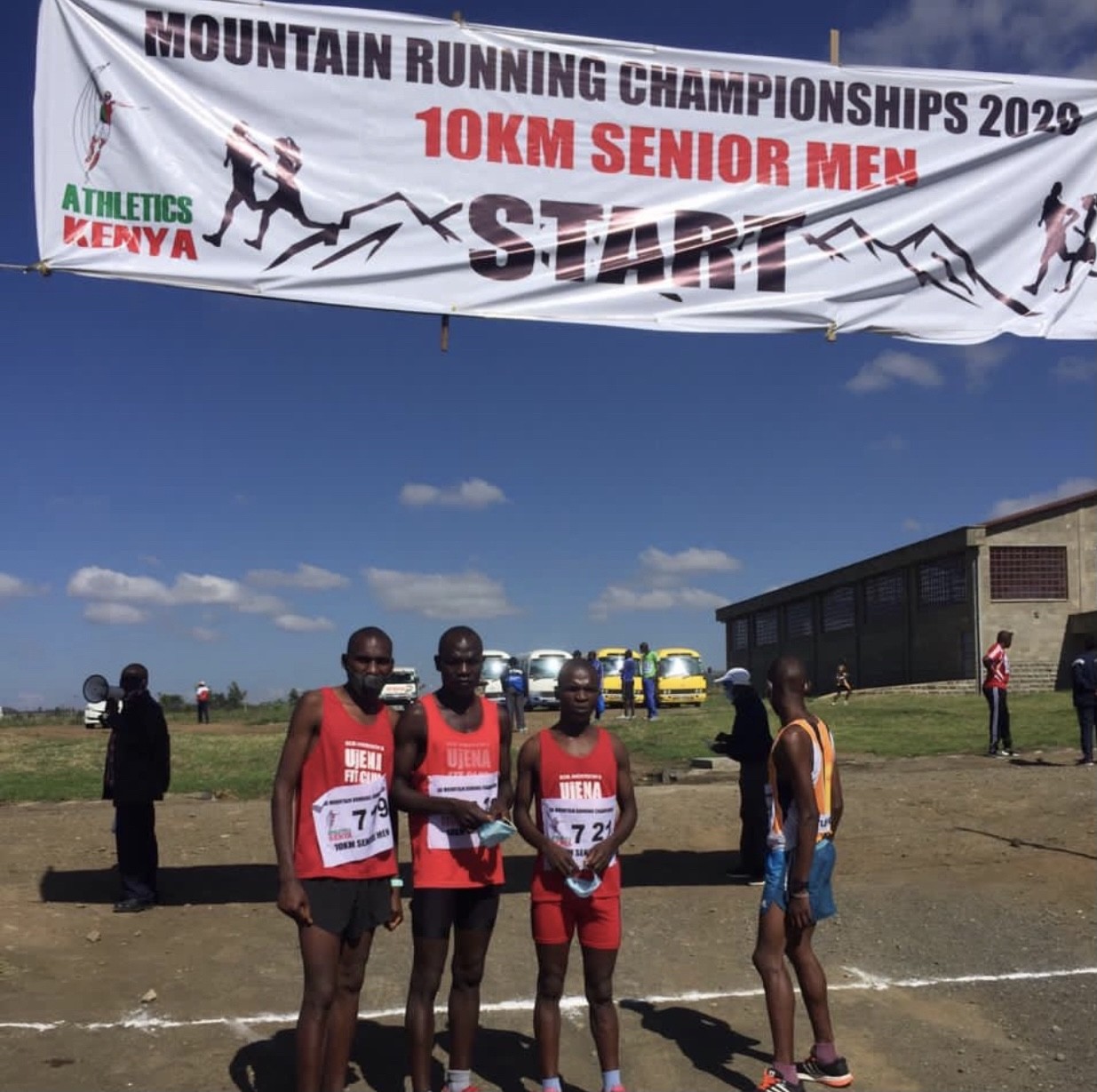
The Kenyan Athletics Training Academy is a unique facility offering training, education and for those living there an excellent meal plan and a pleasant atmosphere so athletes can focus on their running.
The staff and staff-athletes at the Academy welcome other athletes interested in improving, setting new PR's and hopefully winning races. The top athlete currently training at the Academy is Joel Maina, a 1:00:40 half marathoner.
The cost for a shared room is just 10k KES per week for a Kenyan Citizen. Or just $29US per night for non-citizens. Private rooms are also available.

"I met Joseph during our trip in January 2020 to Kenya," says Bob Anderson. "I found him to be very personable and knowledgeable. He was working as head coach for the Run2gether camp at the time."
Joseph left Run2gether earlier this year and contacted Bob Anderson about wanting to join his staff at the unique new project he had going in Thika.
Joseph took the job and says: “I have been involved in athletics on different levels and have learnt a lot. With the evolution and the dynamism in the sport, new approaches and professionalism need to be injected in order to move to the next level.
“I will work with the staff at our Kenyan Athletics Training Academy and offer expertise in competition organisaton, lias with grassroots and national federations to make sure the objectives of the Academy are achieved.”
Several unique and standard races are being planned along with time trials.
Joseph continued, “With the state-of-the-art facility in Thika new talents in the neighboring regions and elite runners will get wholestic training in preparation for local and international competitions
"I wish to lay strong tradition and culture of discipline, team work and integrity in accordance with World Athletics, Athletics Keny and AIU. More so inject the spirit of sportsmanship and respect to the sport and to the individual.”
The Academy is unofficially open now and the official opening date is September 1. A grand opening along with a race is being planned.
(06/17/2021) ⚡AMPRengeruk and Obiri claim Tokyo 5000m places at Kenyan Championships
Lilian Kasait Rengeruk and Hellen Obiri secured their Tokyo Olympic Games places by finishing in the top two of a women's 5000m final which saw four women dip under 15 minutes at the Kenyan Championships in Nairobi on Thursday (17).
On the first day of action at the Kasarani Stadium, the session got under way with Rengeruk running 14:52.18 for victory as a total of seven athletes finished under the Olympic qualifying standard of 15:10.00.
A group of eight had remained together until the pack approached the final lap, when five athletes – led by Rengeruk and Obiri – started to move away. Rengeruk picked up the pace with Obiri in pursuit, but the 2017 world cross country bronze medallist managed to hold off two-time world 5000m champion Obiri down the home straight. Obiri finished second in 14:52.51.
Two-time world 10,000m bronze medallist Agnes Tirop was just behind them, clocking 14:53.91, and world 5000m silver medallist Margaret Chelimo Kipkemboi also went sub-15:00 with 14:58.61 to finish fourth. World U20 champion Beatrice Chebet was fifth in 15:01.86.
“I didn’t expect to win. I thank God for victory and good health,” Rengeruk told Athletics Kenya. “The race was tactical. I didn’t have many races (in the lead-up) but my preparation was uninterrupted. My wish is to work as a team in Tokyo to ensure we deliver podium finishes.”
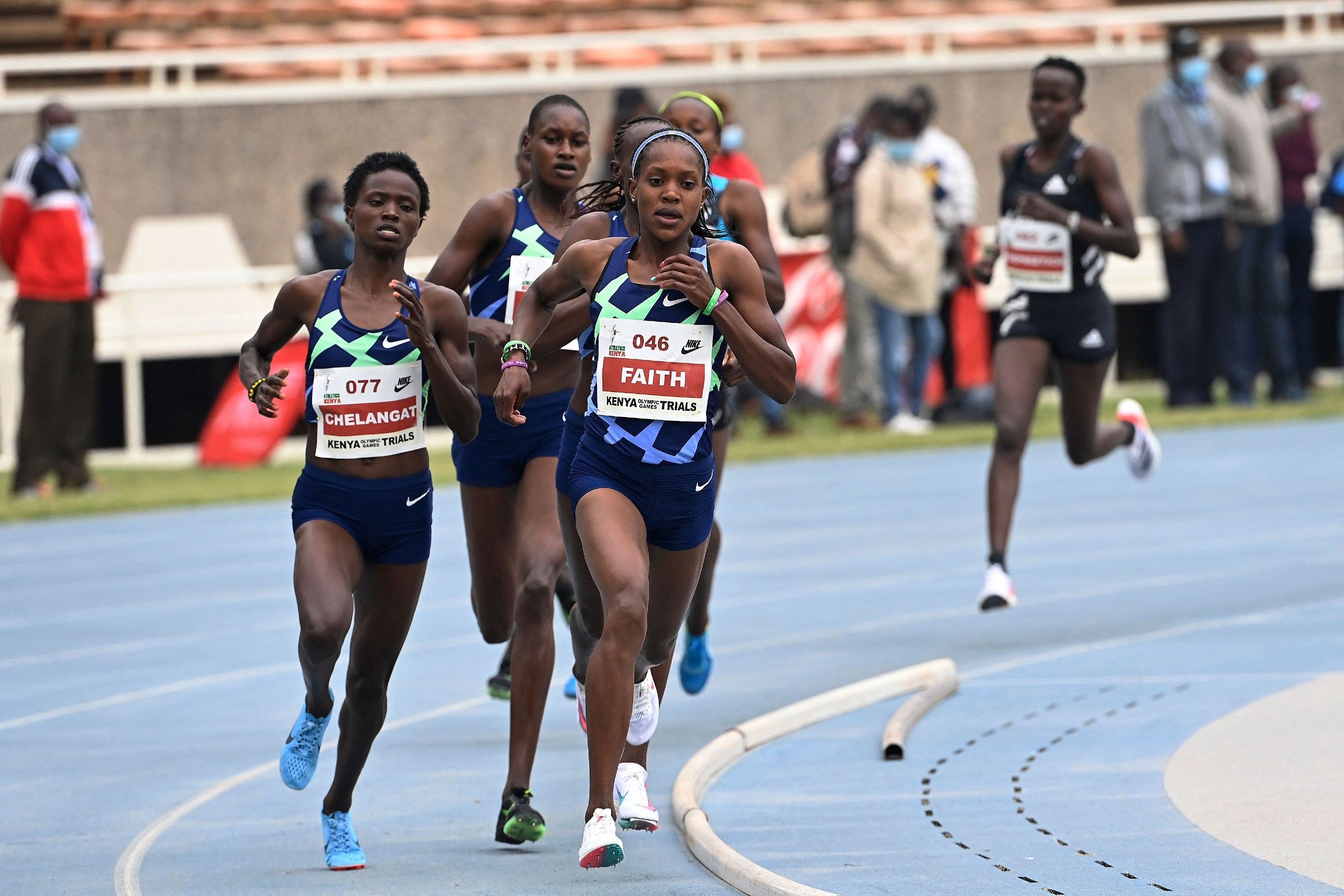
Joining her in Japan will be Obiri, who made her half marathon debut with a 1:04:51 performance in Istanbul in April and in Nairobi explained how she may switch her focus to road races after this year.
“I’m satisfied with my second place finish, what matters most was to finish in the top two,” she said. “I will go back and work hard in training to ensure I do well in Tokyo.”
Kipyegon wins 1500m
Faith Kipyegon remains on track for an Olympic title defence as she comfortably won the 1500m trials race in 4:02.10, with African champion Winny Chebet also claiming a team place thanks to her runner-up finish and Edinah Jebitok placing third.
Faith Kipyegon on her way to 1500m victory at the Kenyan Championships (© AFP / Getty Images)
“My focus is to defend my Olympic title in Tokyo,” said Kipyegon, also the 2017 world gold medallist. “It was a really good race here, which I really wanted to win. I know I will meet many good athletes in Tokyo but I have prepared really well.”
The men’s 100m saw Ferdinand Omanyala improve on the Kenyan record with a time of 10.02 (1.5m/s), with Mark Otieno second in 10.05 to also achieve the Olympic qualifying time.
(06/17/2021) ⚡AMPby World Athletics
Tokyo 2020 Olympic Games
Fifty-six years after having organized the Olympic Games, the Japanese capital will be hosting a Summer edition for the second time, originally scheduled from July 24 to August 9, 2020, the games were postponed due to coronavirus outbreak, the postponed Tokyo Olympics will be held from July 23 to August 8 in 2021, according to the International Olympic Committee decision. ...
more...Whoop Data Shows These 2 Simple Habits Can Speed Up Recovery After a Tough Run
Two specific modalities had the biggest effects on important recovery metrics for WHOOP users.
Over the past few years, many athletes have ditched the go-go-go mentality for one that prioritizes recovering just as hard as you train. Without recovery, runners now know, your body can’t adapt to the work you’re putting in. But while other aspects of training—splits, volume, intensity—are more easily measured, there hasn’t really been a clear way to determine how all that time shivering in an ice bath or rubbing CBD balms into sore muscles is actually affecting your body’s recovery.
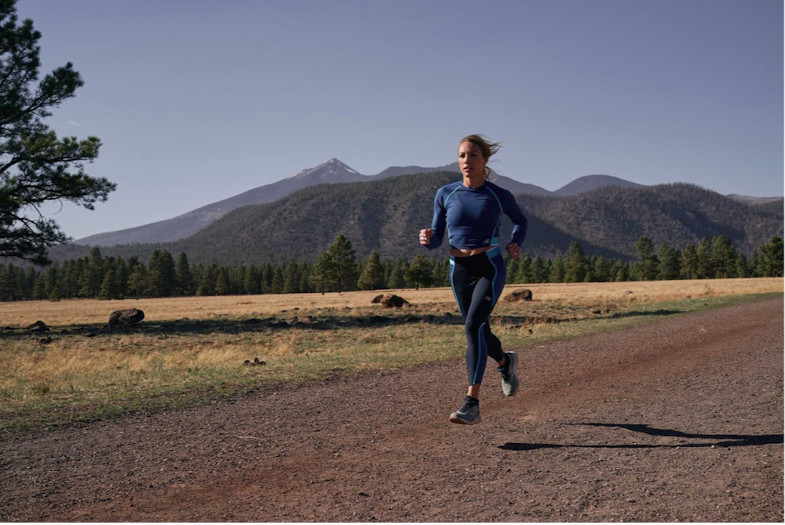
Now, though, there’s some insight from Whoop, the activity tracker that quantifies recovery. Whoop researchers analyzed data from members who recorded 30 or more runs between February 1, 2021 to April 30, 2021 in the Whoop Journal, a customizable feature that allows members to log more than 40 specific behaviors that may impact performance on a daily basis. They looked at over 450,000 entries across 18 different practices and substances, from acupuncture and cryotherapy to CBD and magnesium, to determine which ones have the biggest effect on recovery.
The researchers found that melatonin use resulted in the largest average improvement on recovery scores, heart rate variability (HRV) and resting heart rate (RHR). Thirty-two percent of runners recorded using melatonin, making it the second highest recorded recovery modality after stretching.
Melatonin is a naturally produced hormone that tells your body when it’s time to hit the sheets. For those struggling with sleep, it’s become a popular supplement, too. But “a relationship and causal effect are two different things,” says W. Christopher Winter, M.D., president of Charlottesville Neurology and Sleep Medicine and author of The Sleep Solution.
Melatonin doesn’t actually put you to sleep, 2019 research published in the journal Frontiers in Endocrinology confirmed; it’s more about subtly shifting your circadian rhythm, or internal clock, so your body knows its time for bed—which may make you fall asleep easier. For example, melatonin reduced the amount of time it took people with sleep disorders to fall asleep by an average of seven minutes in a 2013 meta-analysis published in Plos One.
There’s also the placebo effect: “Sleeping pills, in general, tend to alleviate anxiety about sleep,” says Winter. “We can’t underestimate the power of belief when it comes to sleep quality.” That ritual aspect of taking a melatonin supplement every night may make you feel like you’re doing something to promote a better night of shuteye—which can actually lead to more Zzz’s. 

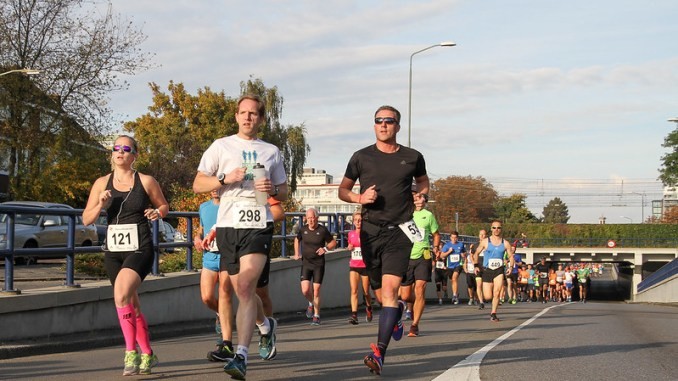
Considering that experts say sleep may actually be the single most important factor in exercise recovery, according to research from the International Journal of Sports Medicine, incorporating any habits that help your body better prepare for a good night’s sleep is worthwhile.
When it comes to practices, breathwork resulted in the second highest average impact on increased recovery scores and increased heart rate variability (HRV) and also reduced resting heart rate (RHR), two key indicators of recovery state. Approximately 17 percent of runners logged breathwork as a recovery modality at a frequency of about 6.4 times per month.
Frankly, more runners should be doing this more often, especially because it is so easy and accessible to do. Breathwork is a type of active mediation, explains Ally Mazerolle, a lead breathwork teacher at mindfulness studio Open. “The active part is that you’re really focusing on your breath, which helps your mind focus,” she says.
This kind of practice is so important for runners because if running puts your body in a stress (or fight or flight) response, “breathwork stimulates your parasympathetic nervous system, relaxing the heart rate and signaling the body that it’s time to rest and digest and recover,” says Mazerolle. And that recovery period is when your body rebuilds and repairs itself from the stress of exercise.
If you spike the nervous system with a workout then go straight into meetings or other high-stress scenarios, your body never has a chance to relax—or recover. And piling on cumulative fatigue like that is a recipe for overtraining or burning out.
Don’t be intimidated by the idea of adding another element to your training regimen. Breathwork can easily be incorporated during your cooldown stretching, says Mazerolle. It can be as simple as taking 10 to 15 slow inhales through your nose followed by slow exhales through your mouth, or something more intentional like box breathing, where you inhale for four counts, hold your breath for four counts, exhale for four counts, and hold there for four counts, then repeat.
It’s as easy as that—and the proof will be in your fitness tracker metrics or your next performance.
(06/17/2021) ⚡AMPby Runner’s World
Reasons why you might feel nauseated at the end of a run
Feeling like throwing up after running—or actually doing it—is not fun, nor is it uncommon. Nausea or vomiting during or after a run can happen for a few different reasons.
Most of the time, while unpleasant, it's not serious, and it's usually something you can manage. If you get nauseous after running while training for a race, consider it an opportunity to determine the cause and fix it before the event.
Reasons Why You Feel Sick to Your Stomach
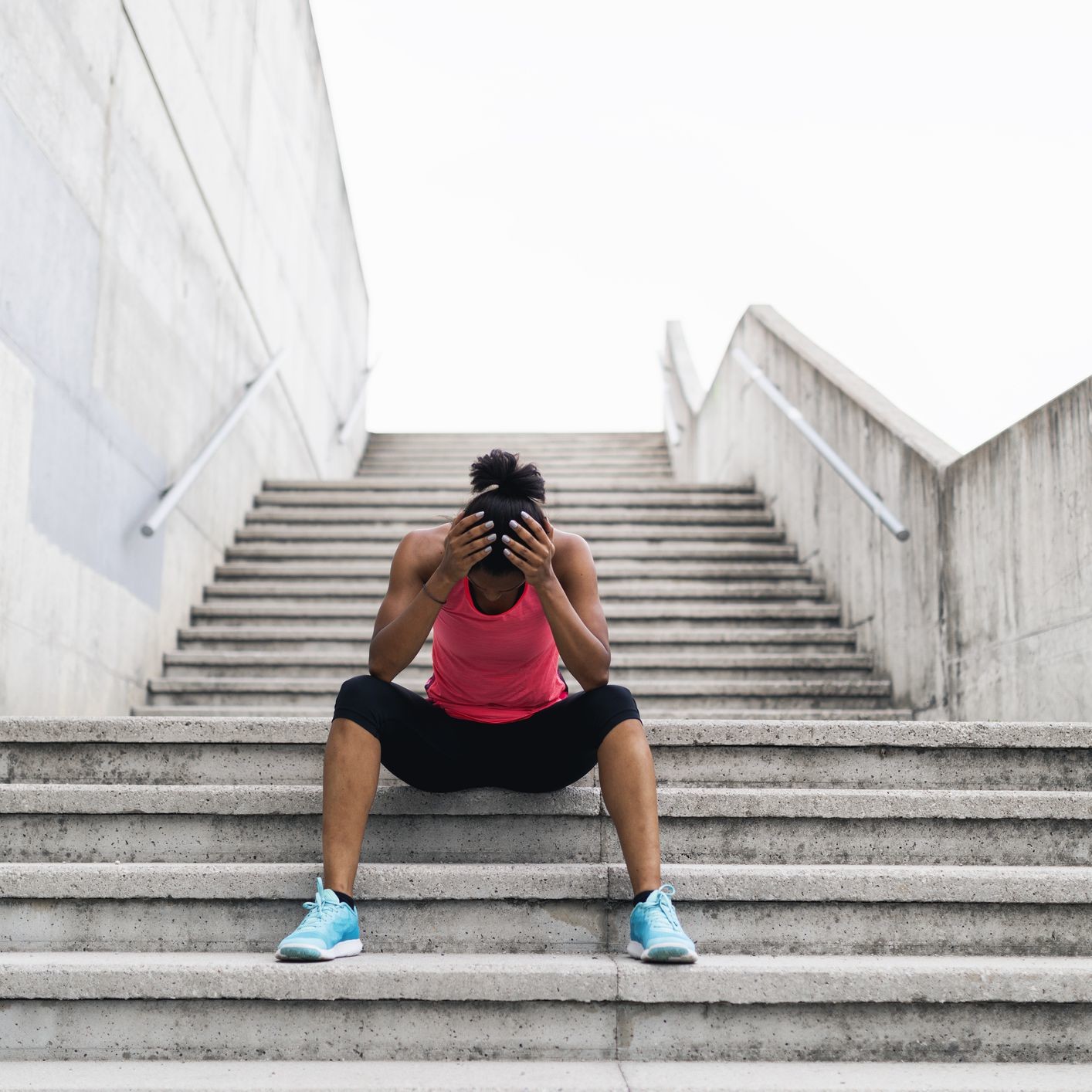
Even if you usually have an iron stomach, intense exercise can reduce the flow of blood to your digestive system. The result is that queasy feeling, especially when paired with these common causes of post-run nausea.
Pre-Run Meal Timing

If you ate less than an hour before your run, that's too close to your workout and it's possible that you'll feel nauseous and even throw up whatever you ate. It's OK to have a light, healthy snack about 90 minutes before your run.
Try to eat something that is easily digestible, such as toast with peanut butter or a banana. If you eat something that takes longer to digest, like fatty or fried foods, you should wait at least 2 hours before running.
Dehydration
Nausea is also an early symptom of dehydration. Be sure to drink water before your run. You should be fully hydrated before you start running. While running, obey your thirst and drink when you are feeling thirsty.
In general, that means about 6 to 8 ounces of fluid for runners running faster than an 8-minute per mile pace, and 4 to 6 ounces of fluid every 20 minutes for those running slower than that. But also be aware that drinking too much water can also cause nausea.
During longer workouts of 90 minutes or more, some of your fluid intake should include an electrolyte sports drink to replace lost sodium and other minerals. And don't forget to rehydrate with water or a sports drink after your run, too. If your urine is dark yellow after your run, you're dehydrated and need to keep rehydrating. Aim for urine the color of light lemonade.
Some runners don't drink during their runs because they don't have access to water if they're running outdoors. An easy solution to that problem is to run with a hand-held water bottle or belt carrier made specifically for runners. If you really don't like to carry water with you, plan your route so that you have access to water fountains or a strategically placed water bottle.
Hot Weather
Use caution when the conditions are extremely hot and humid. Even if you attempt to stay hydrated when running in those conditions, you could still be at risk for nausea, dehydration, and other heat-related illnesses. Run indoors or reduce the distance or intensity of your workout to help you stay safe when running in the heat.
Your Sports Drink or Energy Gel
If you've consumed a sports drink or energy gel product while running, your nausea could be a reaction to the food or beverage. Some runners find that their stomachs are sensitive to sugary sports drinks or energy gels. This is often the case if you combine a drink and a gel. Together, they provide too much sugar for your stomach to handle.
To mitigate this issue, try making your own rehydration drink by adding 4 tablespoons of lemon juice, a couple of pinches of salt, and 2 tablespoons of honey to 16 ounces of water. Instead of energy gels, try dried fruit, nuts, or honey (which is available in portable Honey Stinger packets).
Overdoing It
Another possible cause of nausea during or after running is that you simply ran too hard and overexerted yourself. You may also feel more tired than usual, or moody and irritable, or slow to catch your breath. This feeling can be a sign that you are lacking some fitness for the pace you were running.
Avoid this problem by making sure you're warmed up before starting an intense run, and running at a pace that you're ready for. (Tip: During a distance run, you should be able to hold a conversation while running.) Always increase your pace, distance, or time slowly and gradually—and never all three at once.
What to Do When Nausea Strikes
If you feel like you might throw up after a run, sip some water very slowly, in case you are dehydrated. If heat is a likely culprit, make sure you get into an air-conditioned space as soon as possible to cool off.
Whatever the suspected cause may be, don't force yourself to continue running (although you should not skip your cool-down, as it may help you feel better). Just rest. If you're still feeling sick or throwing up after several hours, you may want to consult a healthcare professional.
If your post-run nausea was short-lived, and you feel pretty confident that you know what caused it, you should be able to run again within a day or two. If your nausea was due to overexertion, scale back your intensity and be sure to warm up and cool down adequately.
If you think your pre-run meal or on-the-go nutrition was the culprit, experiment to see what foods and what timing work better for you. It's always better to experiment when you are training so that you will be comfortable during a race, if you have one planned. Consider adding notes on nutrition to your training log so you can look for patterns and keep track of successes and failures.
(06/16/2021) ⚡AMPby Christine Luff
Missouri man returns for another ‘Grandma’s Double,’ running the course twice in one day
The first 25-26 miles are “the easy ones,” said Eric Strand, 60. “Then you have the benefit of aid stations, the crowd and fellow runners to commiserate with on the way back. It’s a fun way to get a training run in.”
Before runners hit the starting line, before volunteers set up aid stations and before the sun rises, Eric Strand is running Grandma’s Marathon.
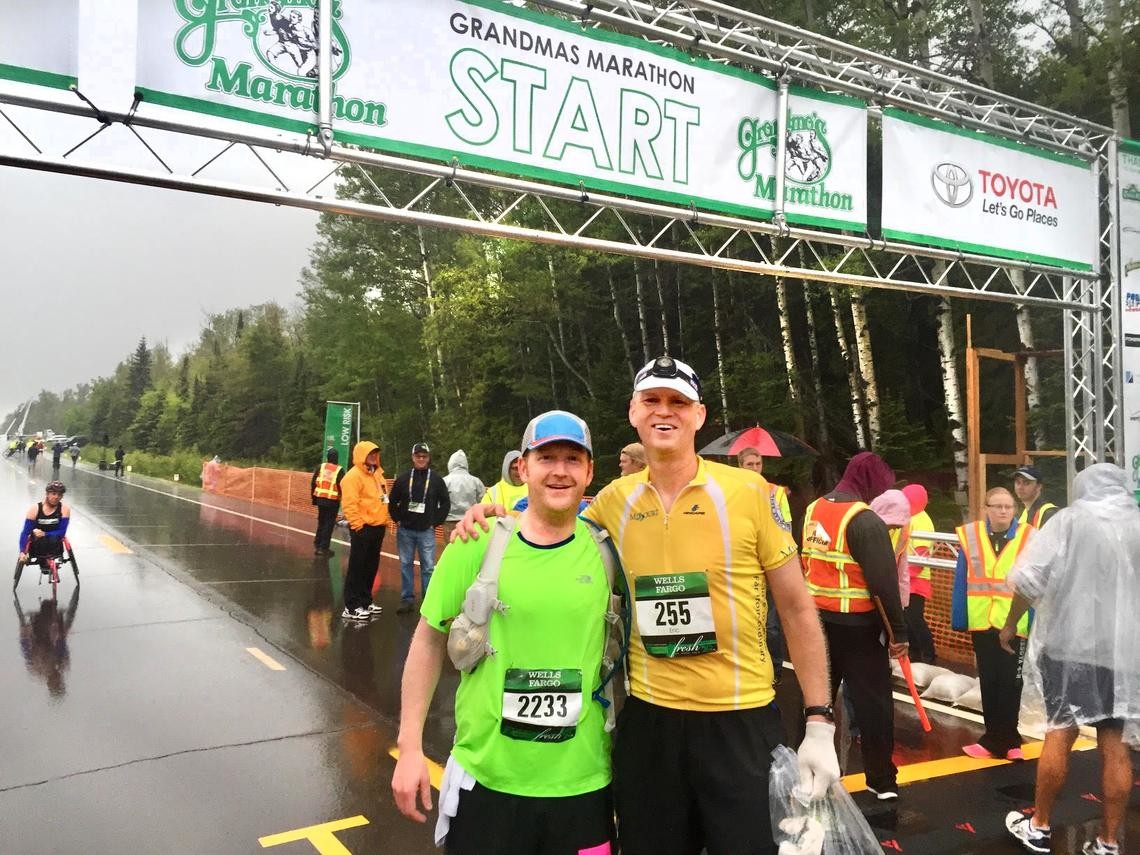
Backwards. And then back again.
The “Grandma’s Double” is a long-running tradition for Strand.
About 3 a.m. on race day, his wife drops him off in Canal Park. He runs 26.2 miles to Two Harbors — and joins the other marathoners for Round 2.
The first 25-26 miles are “the easy ones,” said Strand, 60. “Then you have the benefit of aid stations, the crowd and fellow runners to commiserate with on the way back. It’s a fun way to get a training run in.”
It started as a way to prepare for the 100-mile Leadville Trail ultramarathon. Grandma’s landed on a weekend that Strand needed to get in a 50-mile run. Instead of spreading it out, he decided to pack it into one day.

“It was very interesting running the course backwards, especially when the bars had people filing out. You had an interesting crowd," Strand said in a 2012 News Tribune story.
Strand gets to see things other marathoners don’t: the race course waking up and volunteers getting ready, and some of the aid station captains are there every year.
He has heard his fair share from passersby about going the wrong way, and it happens even more now.
“They've all learned their lines,” he said with a laugh.
The Missouri man, formerly of St. Paul, grew up hearing about Grandma’s, but on New Year’s Eve before his 40th birthday, he registered for it.
He trained for six months and made every mistake.
“There’s euphoria. You hit new distance markers … you get this in your mind that you are invincible. The next day, you wake up, and you have plantar fasciitis or shin splints or your knee hurts, and you very quickly realize you aren't,” Strand said.
But you slow down, heal up, maybe bike for a while and you get back to running, he added.
Strand recalled the end of his first Grandma’s Marathon: “As I was enjoying the runner’s high, my kids reminded me that there were three 70-year-olds that beat me that day. It brought me down to earth; they’re really good at doing that.”
Strand said tying training into a race is one way to make it fun. He averages about 2,500 miles a year; that’s typically 7 miles a day, but sometimes, it’s 100 miles at a time.
Strand ran his first five Grandma’s Doubles solo, save for one year with Ben McCaux. Since then, he has been joined by his son, Zach.
They’ve tackled the Double three times; they ran their first father-son Leadville 100 in 2017.
In a 2017 video of the latter, the pair are seen trekking across Colorado terrain.
“Zach’s doing great,” Eric Strand says into the camera. “He’s fun to run with. As long as he keeps his fueling and hydration in good shape, he’s down for a buckle.”
They have tallied 25 marathons and ultramarathons together.
“He’s better than me now, which he’s quick to point out,” he said.
During training, Strand mostly listens to audiobooks, but, if he needs motivation, there’s Britney Spears and Miley Cyrus — music his kids listened to when they were teens.
As for his powerhouse song, that’s Eminem’s “Lose Yourself.”
He doesn’t listen to anything during races; he likes to interact with others.
His race-day eats were pretty standard: Gatorade and gels; but for ultramarathons, his wife brings him a cheeseburger at mile 50.
Saturday will be his 22nd Grandma’s Marathon — his 10th Grandma’s Double — and there’s no end in sight.
There’s a cadence to the year — the Boston Marathon in April, Leadville in August, Chicago in October, a mix of others — but June will always be Duluth.
“There will be a day when I won’t be able to do this,” Strand said, “but it’s not today, and hopefully won’t be for a long time. I hope to enjoy it as long as I can.”
(06/16/2021) ⚡AMPby Melinda Lavine
Grandmas Marathon
Grandma's Marathon began in 1977 when a group of local runners planned a scenic road race from Two Harbors to Duluth, Minnesota. There were just 150 participants that year, but organizers knew they had discovered something special. The marathon received its name from the Duluth-based group of famous Grandma's restaurants, its first major sponsor. The level of sponsorship with the...
more...Seven questions runners are tired of hearing
You can’t understand the sport of running unless you’re personally into it. No one who doesn’t run can wrap their head around training, racing and the other aspects of running, and because of that, non-runners sometimes ask silly questions. Some of these questions are more common than others, and you might hear the same few over and over again. Here are seven of those questions that runners everywhere are tired of hearing.
1. Why do you run?
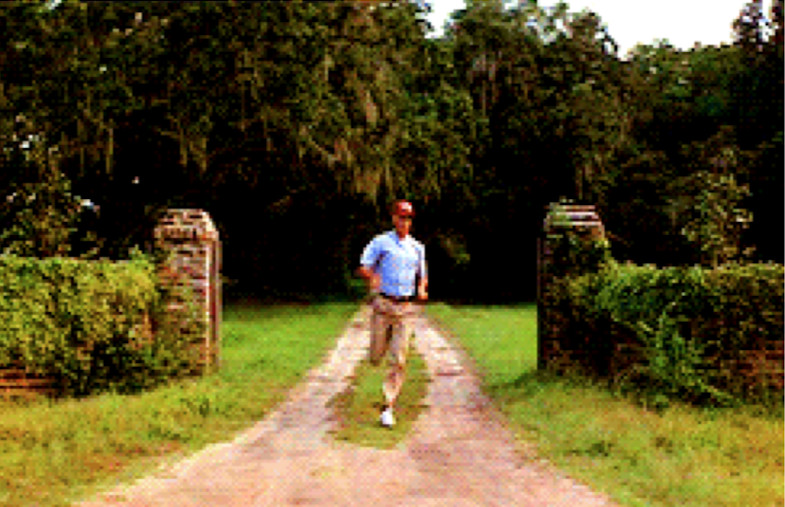
This isn’t some deep question — the person asking it isn’t looking to hear about the joy you get from running. Instead, they have no idea why anyone would waste their time going for a run, and if you tell them that you enjoy it and find it fun, they’ll scoff at you. Odds are at least one person has asked you this before, and it’s likely that some runners have heard it multiple times.
2. Did you win your race?
Some people go to races with the sole purpose of winning, but most of us will never get the chance to break the tape at a race. Non-runners don’t know this, and many of them will ask if you got the win at your most recent competition. If someone asks you this, kindly explain that, no, you didn’t win, but you race for much more than standing on the podium.
3. Could you make the Olympics?

This might seem like a joke, but depending on how clueless your friends are, they could think you have a chance at making the Olympics. If you actually are an Olympic hopeful, that’s pretty cool — good luck with qualifying. Most of us, though, don’t have a shot at the Games, but some of our friends might think, “Well, I know you’re pretty fast, so I assumed you could make it.”
4. Do you ever wear normal clothes?
As runners, many of us wear running gear wherever we go. Whether we’re sporting short-shorts, bright running shoes or any other part of a race uniform, we’re just happy in those clothes. The answer is yes, we do wear other clothes, but we prefer athletic wear.
5. Do you want to race?
Some non-runners feel the need to challenge runners they meet to a race. Since you’re probably wearing your running gear already, you’re ready to race, so that’s good, but it can be annoying when someone randomly challenges you and says, “I bet I can beat you.”
6. Don’t you get bored?
Sure, sometimes we can get bored, but we love running, so the few instances of boredom we might face are well worth it in the end.
7. Have you run a marathon?
This question is asked by a lot of people, non-runners and runners alike. The marathon is viewed as the race, and everyone wants to know if you’ve run one. If you have, that’s great, but if not, don’t feel like you’re any less of an athlete because of it. You’re a runner, not a marathoner, so be proud of the races you do run and don’t worry about the marathon unless you choose to register for one.
(06/16/2021) ⚡AMPby Running Magazine
The study confirmed that eating pork might induce some false accusations of the abuse of nandrolone in anti-doping.
What is nandrolone? As defined by the National Library of Medicine, nandrolone is a synthetic, anabolic steroid analog of testosterone.
The NIH states nandrolone can be used for testosterone replacement therapy to increase nitrogen retention and fat-free muscle mass.
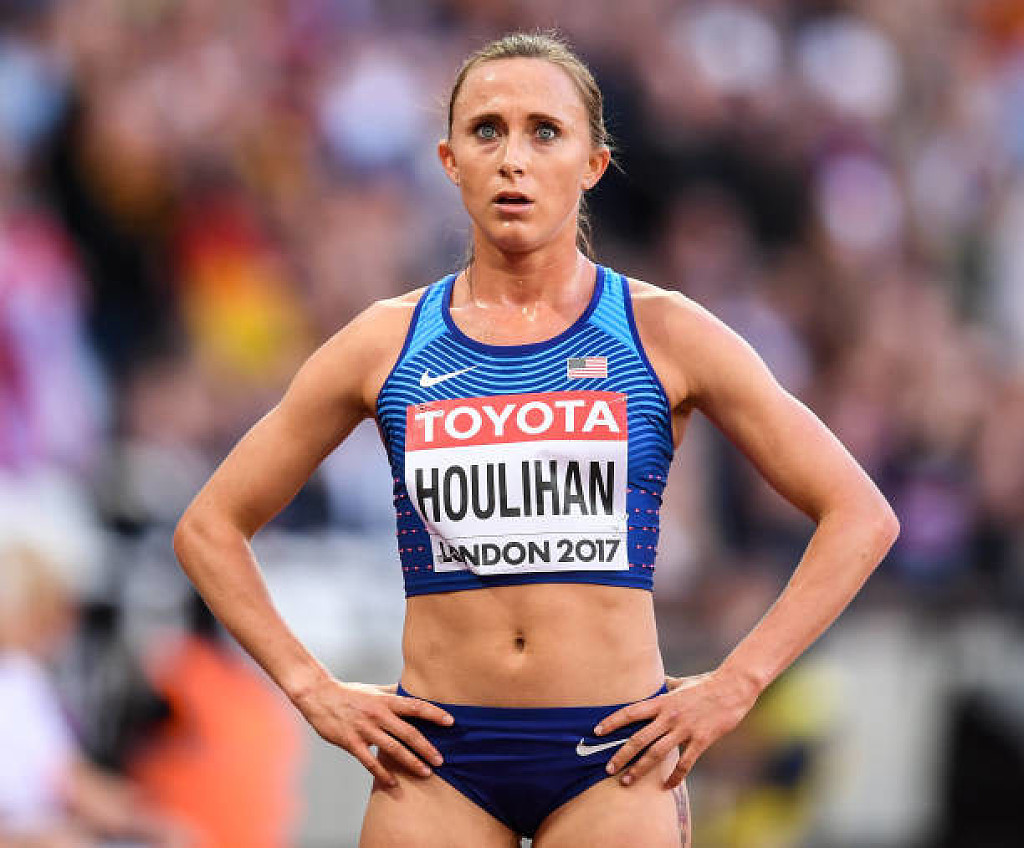
In bodybuilders, the use of androgenic-anabolic steroids to increase muscle mass is common.
Nandrolone decanoate is one of the most popular misused androgenic-anabolic steroids, although the effects on body composition are equivocal.
The use of androgenic-anabolic steroids, such as nandrolone, is common in bodybuildersCredit: Getty
Is it found in pork?
A study by the National Library of Medicine revealed that the consumption of pork can cause irregularly high levels of nandrolone.
Then NLM conducted a study using the urine of three male volunteers who consumed 310 grams of pork, which could be the meat, liver, heart and kidney.
According to the study, the three individuals delivered urine samples before and during 24 hours after meal intake.
Nearly 10 hours after the participants ate pork, the report showed high levels of nandrolone.
The consumption of pork can cause a high level of nandrolone within a 24-hour period of consumptionCredit: Getty
"19-NA and 19-NE concentrations in urine reached 3.1 to 7.5 microg/L nearby 10 hours after boar tissue consumption," the NLM reported in their study.
The study confirmed that eating pork might induce some false accusations of the abuse of nandrolone in anti-doping.
What did Shelby Houlihan say caused the high level of nandrolone?
In an Instagram post announcing her suspension, Houlihan claimed she had “never even heard of nandrolone” and blamed a contaminated pork burrito she ate 10 hours before the positive test in January.
Houlihan insisted that ingesting the anabolic steroid must have inadvertently come from eating a burrito “from an authentic Mexican food truck that serves pig offal near my house in Beaverton, Oregon” 10 hours before a 6am drugs test last December.
(06/15/2021) ⚡AMPRace walking mixed team to debut at Paris 2024 Olympics
A race walking mixed team event is set to make its Olympic debut at Paris 2024, following confirmation from the International Olympic Committee (IOC) Executive Board that it will be the mixed-gender contest added to the athletics programme.
The IOC Executive Board previously decided that the number of athletics events should stay at 48 for Paris - which led to the men's 50-kilometre race walk being dropped in favour of a mixed-gender event in the quest for gender equality.
World Athletics and the IOC have agreed that this will be a race walking event, although the competition format - including the distance and the number of athletes in each team - has not been chosen yet.
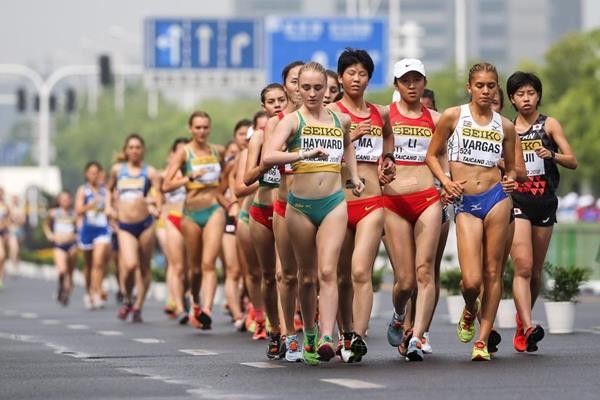
A proposal for the format is due to be presented to the IOC Executive Board in December.
The Executive Board has also approved World Sailing's proposal to scrap the mixed kiteboarding event and instead have men's and women's contests.
This was World Sailing's first alternative option in place of mixed offshore, which was removed from the programme after concerns were raised by the IOC.
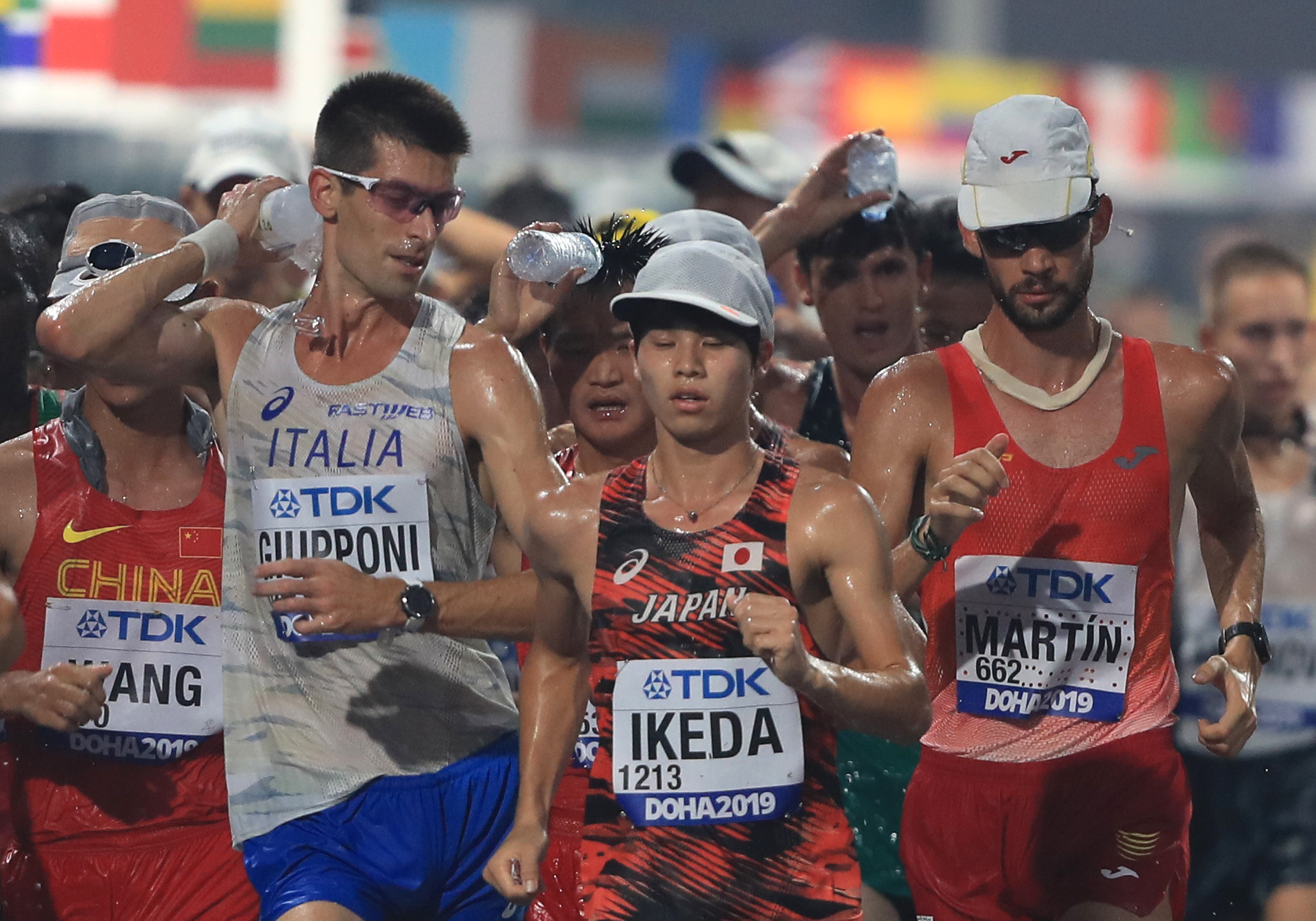
These included additional broadcasting costs and the field-of-play security.
Sailing will maintain 10 medal events, with kiteboading - set for an Olympic debut at Paris 2024 - now accounting for two of them.
Additionally, the IOC Executive Board approved the new competition format for modern pentathlon, which is set to be based in one venue.
As proposed by the International Modern Pentathlon Union, this 90-minute competition begins with riding, followed by the fencing bonus round and swimming, before closing with the laser-run.
Breaks of between five and 15 minutes will occur between each discipline.
The equestrian leg lasts 20 minutes, followed by 15 minutes of fencing, 10 minutes of swimming and 15 minutes for the laser-run.
The Paris 2024 Olympics, scheduled to take place from July 26 to August 11, will be the first fully gender-balanced Games, with exactly 50 per cent male and female participation, says the IOC.
(06/15/2021) ⚡AMP
by Michael Houston
Paris 2024 Olympic Games
For this historic event, the City of Light is thinking big! Visitors will be able to watch events at top sporting venues in Paris and the Paris region, as well as at emblematic monuments in the capital visited by several millions of tourists each year. The promise of exceptional moments to experience in an exceptional setting! A great way to...
more...Shelby Houlihan says she ate a pork burrito before her drug test and this is why she tested positive.
Olympic runner Shelby Houlihan said she has been banned from the sport for four years following a positive test for anabolic steroids that she attributes to eating a pork burrito.
Houlihan said she was devastated to learn of the suspension from the Athletics Integrity Unit (AIU), an independent body that combats doping, after she tested positive for nandrolone.
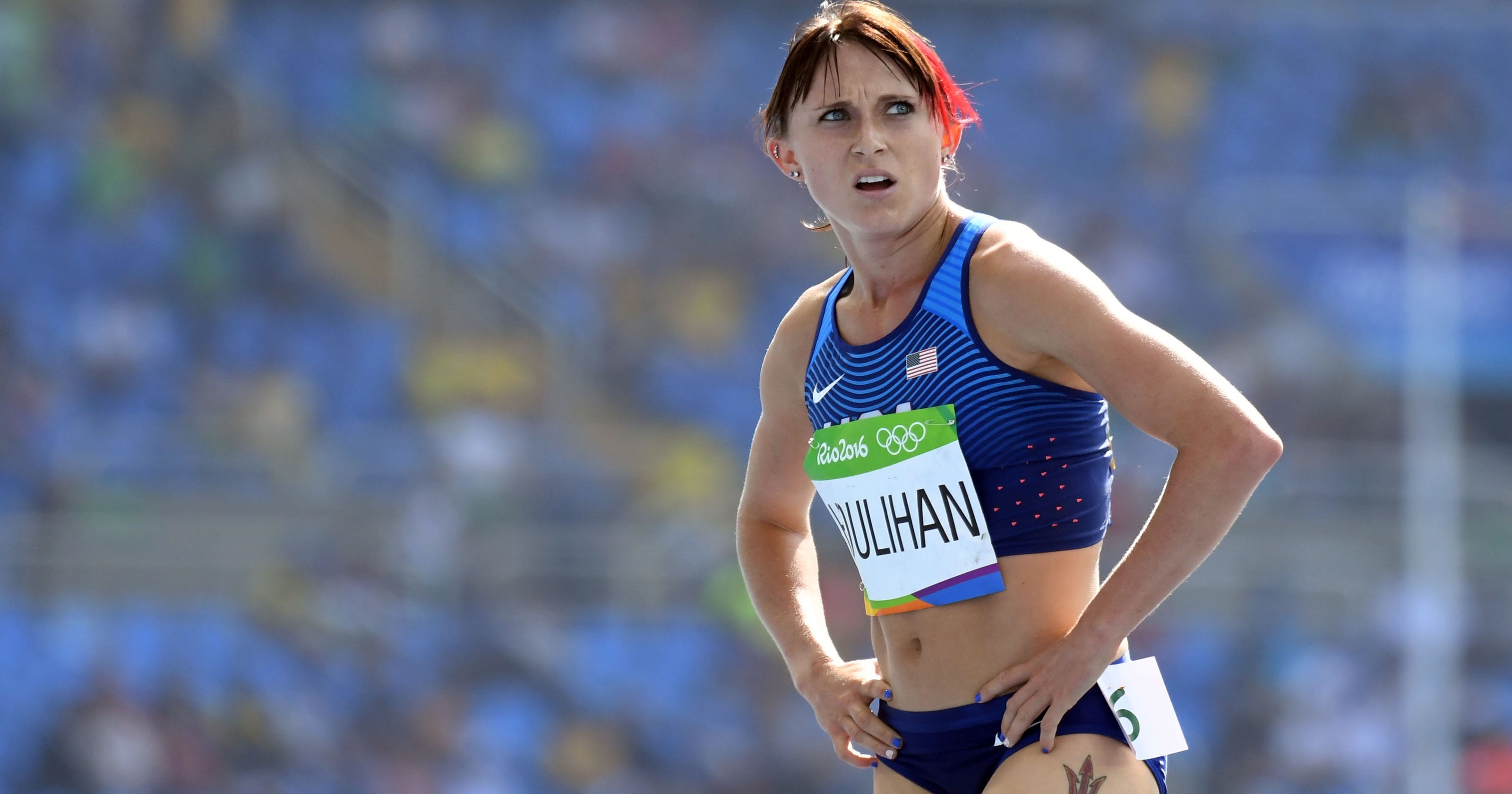
Houlihan said in a post on Instagram Monday that a burrito she ate before the test contained pig organ meat, or offal, which she said can lead to a positive test for nandrolone. A study funded by the World Anti-Doping Agency (WADA) found trace amounts of nandrolone can be found in that kind of meat and warned about the possibility of a false positive.
The ban will prevent the 28-year-old from competing in upcoming US Olympic Trials and the Tokyo Olympic Games. Doping accusations and investigations have led to multiple bans of athletes and even entire countries from competing, including a two-year ban on Russia from the Court of Arbitration for Sport (CAS).
The runner said she received an email from AIU on January 14, 2021, informing her that a drug test she took December 15, 2020, returned positive for nandrolone.
"When I got that email, I had to read it over about ten times and google what it was that I had just tested positive for," she said in the post. "I had never even heard of nandrolone."
(06/15/2021) ⚡AMPSifan Hassan will turn her attention to the mile in Gateshead
Sifan Hassan will test her speed once again when she races the mile at the Muller British Grand Prix – a Wanda Diamond League meeting – at Gateshead International Stadium on 13 July.
The world 1500m and 10,000m champion holds the world mile record with 4:12.33 and last weekend set a world record for 10,000m with 29:06.82 at the World Athletics Continental Tour Gold meeting in Hengelo, although it survived only two days before being beaten by Letesenbet Gidey of Ethiopia.
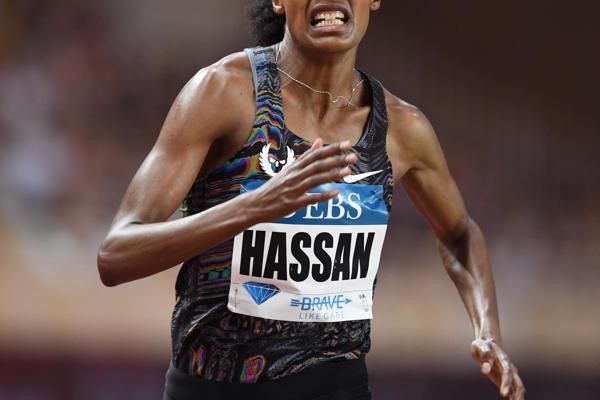
The Dutch athlete is clearly in form to challenge her world mile record if conditions are good in Gateshead. In addition to her 10,000m world record in Hengelo, she beat Olympic 1500m champion Faith Kipyegon of Kenya and European champion Laura Muir of Britain over 1500m at the Diamond League in Florence on Thursday night, clocking 3:53.63.
“I’ve raced several times in the past at events in the UK – at the Anniversary Games in London, meetings in Birmingham and Glasgow and of course the 2017 World Championships and 2018 World Indoor Championships. There is always a warm welcome, a great atmosphere and the fans have good knowledge of the sport,” said Hassan.
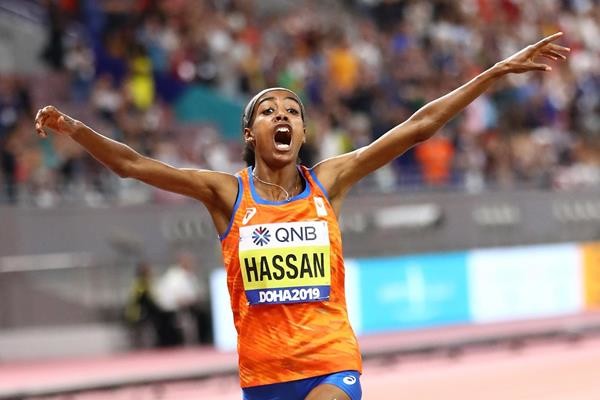
“Running over one mile in Gateshead on 13 July gives me a chance to test my speed ahead of the Olympic Games. Maybe I can run a good time too although much will depend on the weather. Hopefully it will be warmer and drier than it was for the Diamond League in Gateshead last month!”
Gateshead staged the first Wanda Diamond League event of 2021 after it was moved from Rabat in Morocco to the North East of England and now the same venue will host the seventh Diamond League of the season after it was moved from its original home of London.
(06/15/2021) ⚡AMPby World Athletics
American record holder Shelby Houlihan receives four-year ban week before Olympic track trials
Accomplished distance runner Shelby Houlihan was handed a four-year ban exactly one week before the start of U.S. Olympic Track and Field Trials.
Houlihan was considered an Olympic medal contender entering this year. The 2016 Olympian holds American records in both the 1500m and 5000m. In 2018, she became the second woman ever to win both distances at the U.S. outdoor championships.
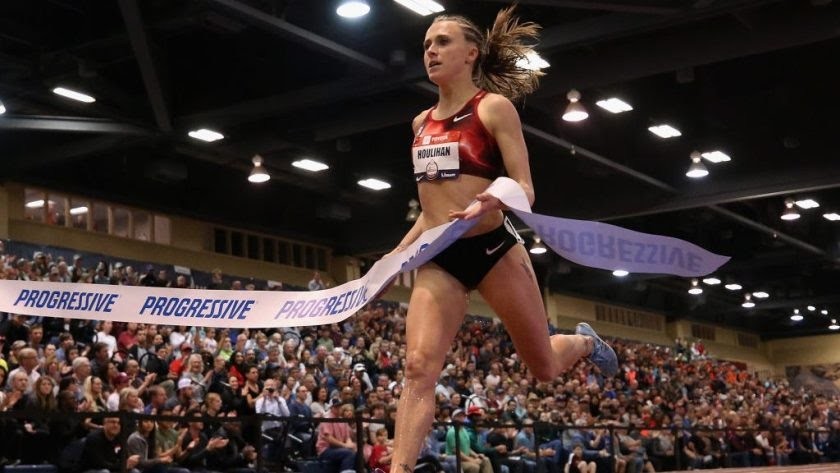
Houlihan placed fourth in the 1500m at the 2019 World Championships.
The 28-year-old had not competed yet this year, which was explained on Monday evening.
Houlihan tested positive for nandrolone in an out-of-competition urine test administered by the World Anti-Doping Agency on Dec. 15, 2020.
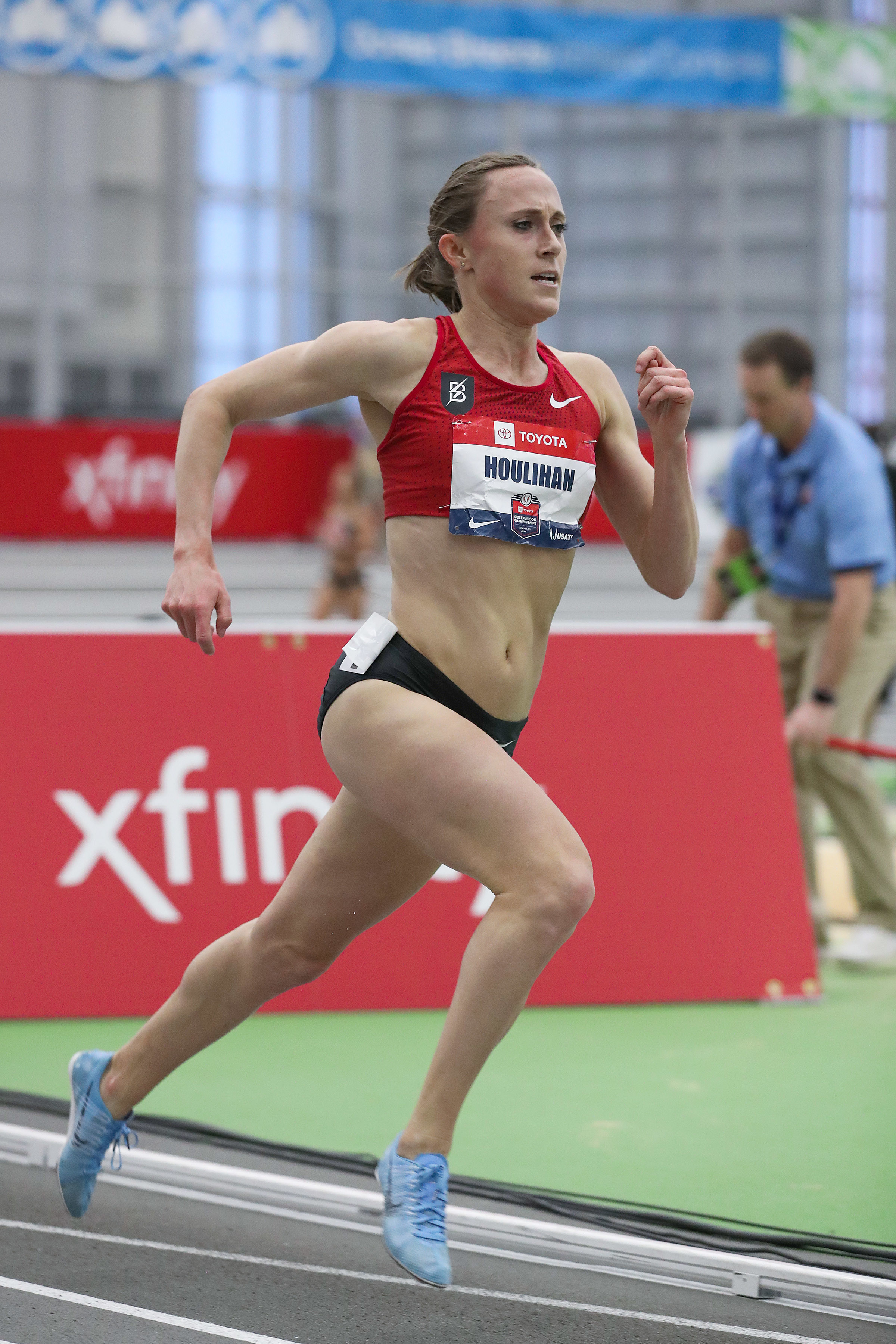
Nandrogen is an androgen and anabolic steroid known to increase muscle mass.
In a virtual press conference, well-known sports attorney and founder of Global Sports Advocates Paul Greene walked reporters through Houlihan’s case, alongside Houlihan and Bowerman Track Club coaches Jerry Schumacher and Shalane Flanagan, an Olympic silver medalist in the 10,000m.
“Shelby is an innocent athlete,” Greene declared. “What happened to her is entirely unjust.”
“I don’t have the words to articulate the depth of sadness I feel for you,” head coach Schumacher said in his statement.
After being notified of the positive test in January, Houlihan created a food log of everything she had consumed the week prior to the test.
Her team believes the result came from a pork burrito Houlihan purchased at a food truck near her home in Beaverton, Oregon, and ate the night before the 6 a.m. test.
It has been noted in WADA documents that consumption of meat, specifically pig offal, can lead to the presence of nandrolone.
Greene explained that Houlihan initially received a provisional suspension of more than three months, which caused them to opt for a single hearing before the Court of Arbitration for Sport.
In the interim, Houlihan had a hair sample tested and passed a polygraph test in an effort to prove her innocence. Greene hired a private investigator and former WADA scientist to help prove their case as well. He pushed for the sample to be tested at a second lab to no avail.
According to Greene, Houlihan has been tested approximately 100 times since 2016 and has never tested positive or missed a test in that time.
The CAS hearing was held the first week of June, with the final ruling of a four-year ban delivered on Friday, June 11. That would take Houlihan out of the running of the Paris 2024 Olympics as well; she said she is currently unsure of what her future holds.
“I feel completely devastated, lost, broken, angry, confused and betrayed by the very sport that I loved and poured myself into just to see how good I was,” Houlihan said as she fought back tears. “I want to be very clear: I’ve never taken any performance-enhancing substances and that includes the one of which I have been accused. … I do this sport because I love it, I have so much fun doing it and it’s always the best part of my day.
“This sport means everything to me. I believe doping and cheating is weak. … I would never disrespect the sport, my competitors, my teammates, my coaches, my family and my fans this way. I love the sport too much. …
“I’ve always wanted to stand at the top of an Olympic podium with a gold medal around my neck, knowing I did that, and now I am not sure that will ever happen.”
Greene is considering an appeal to the Swiss federal tribunal.
(06/15/2021) ⚡AMPGrandma’s Marathon founder Scott Keenan has published a new book documenting his journey of bringing the event from just 150 runners in 1977 to one of the most respected road race in USA
My Journey to Grandma’s Marathon: History and Heroes focuses on the people involved in bringing Grandma’s Marathon to prominence, ranging from early champions like Garry Bjorklund and Dick Beardsley to longtime journalists who covered the race like Kevin Pates.
Keenan, who spoke about his book on the “Gearing Up for Grandma’s” podcast, admitted the writing process came with challenges, but he thought it necessary to chronicle the evolution of the event and recognize lots of the people responsible.
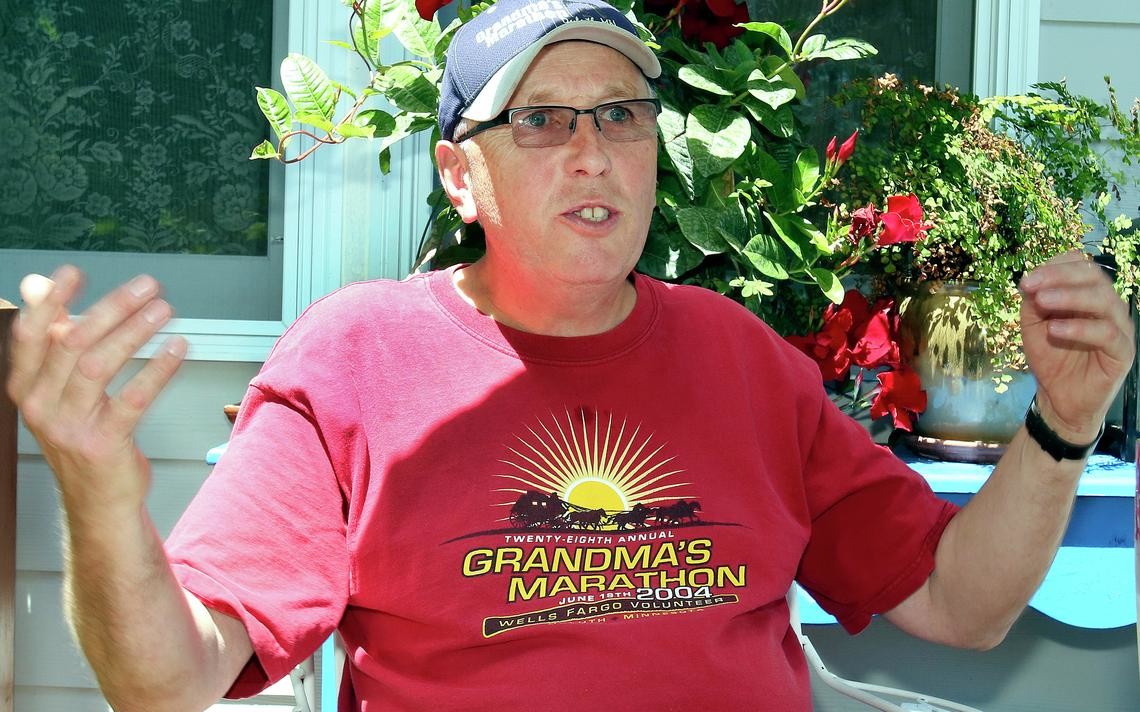
“We had to do something special back then. We had to invite the world to Grandma’s Marathon, and we did,” he said. “We had the great race course, the great location, we just needed the organization to put on a good race. It was very important to me to try and take running to a new level in the Duluth area, and I’m so proud of what’s been built with Grandma’s Marathon.”
The full “Gearing Up for Grandma’s” video podcast featuring Keenan will debut as part of the virtual 2021 Essentia Health Fitness Expo at 2:00 p.m. on Thursday, June 17.
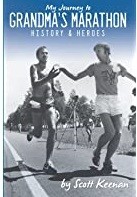
During Keenan’s tenure, Grandma’s Marathon grew to be one of the largest marathons in the country and now welcomes more than 20,000 runners to Duluth and the surrounding region each year. The race also played host to nine national championships, something he points to as one of his proudest moments during his time with the race.
The book costs $17.99 and can be bought online at scottkeenanbooks.com. A portion of all proceeds will go to benefit the Young Athletes Foundation (YAF), which is the charitable piece of Grandma’s Marathon that provides money and resources to local youth organizations to help keep the area’s kids active and healthy.
Keenan, who served as the race’s executive director for 37 years before retiring in 2013, will also be selling and signing copies of his new book during this year’s in-person Essentia Health Fitness Expo on race weekend. He will be available from 10:00 a.m. to 9:00 p.m. on Friday, June 18 in Pioneer Hall at the Duluth Entertainment Convention Center (DECC).
(06/15/2021) ⚡AMPby Running USA
Grandmas Marathon
Grandma's Marathon began in 1977 when a group of local runners planned a scenic road race from Two Harbors to Duluth, Minnesota. There were just 150 participants that year, but organizers knew they had discovered something special. The marathon received its name from the Duluth-based group of famous Grandma's restaurants, its first major sponsor. The level of sponsorship with the...
more...Sebastian Coe's monumental 800 meters
June 10, 1981 remains a red-letter day in the long history of 800m running, for it was in Florence late that night that Sebastian Coe lowered his own world record from 1:42.33 to 1:41.73. Every world record is special, marking as it does an advance on anything previously achieved, but Coe's run was extra-special. That time would not be bettered for 16 long years, itself a record in the annals of the men's 800m event.
When strongly-built Alberto Juantorena won the 1976 Olympic title in a world record 1:43.50 it was widely thought that here was the man to revolutionize two-lap running. And yet, for all his speed (44.26 400m) and power, the Cuban succeeded only in clipping another few hundredths off the record with 1:43.44 at the 1977 Universiade. Instead it was the slight figure of Coe who has gone down in history as the athlete who, like Germany's Rudolf Harbig in 1939 and New Zealand's Peter Snell in 1962, pushed back the frontiers of 800m performance.
It was in 1979 that Britain's Coe established himself as one of the all-time greats of middle distance running when in the space of 41 days he shattered three world records. He started with 1:42.33 in Oslo on July 5, and was as shocked as everyone else by his time. After clocking his fastest 400m of 46.87 at the AAA Championships he returned to Oslo for the star-studded Dubai Golden Mile on July 17. Despite being practically a novice at the distance with a best time of 3:57.67, he moved into the lead shortly before the three-quarter mark (2:53.4) and then proceeded to cover the final quarter in 55.6. He had run 3:48.95, again astonished when told he had broken New Zealander John Walker's world record of 3:49.4. As he related later: "When I looked back twice in the final straight it was fear, it was panic, not pain, that I was feeling. I certainly wasn't in the slightest distress at the finish."
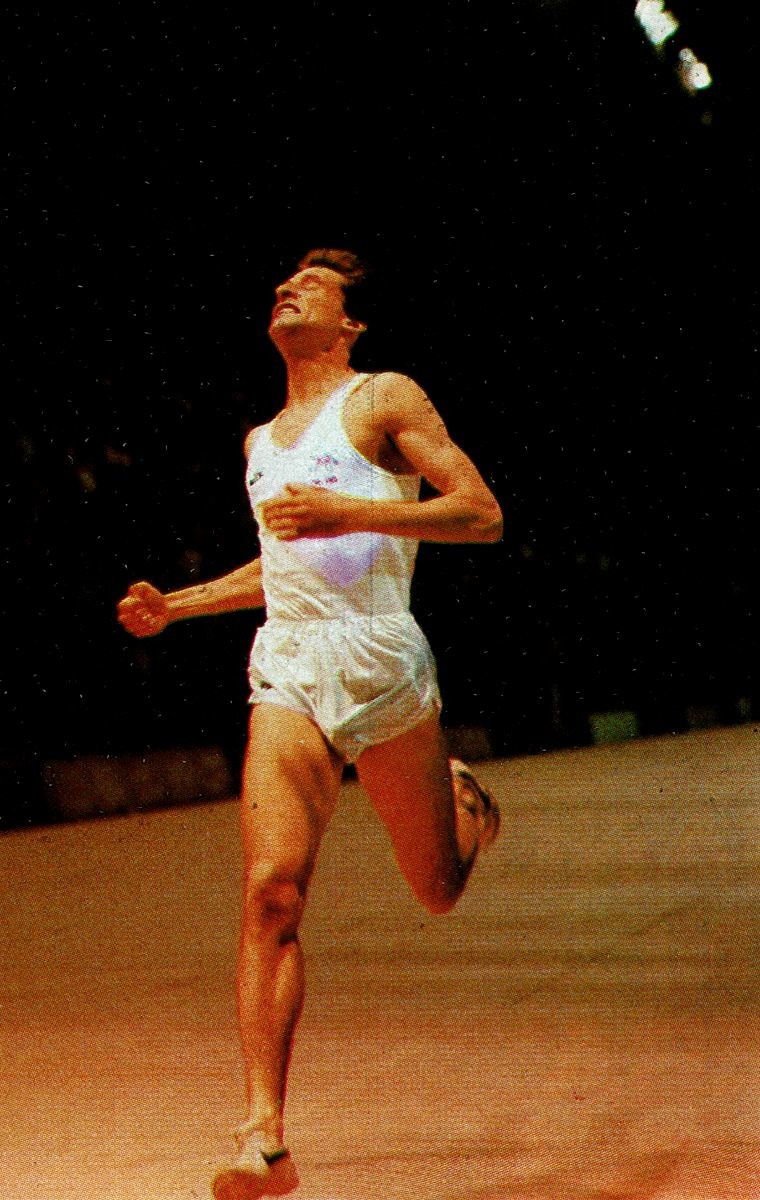
Record number three came about in Zurich on August 15. The target this time was the 3:32.16 1500m by Tanzania's Filbert Bayi. Elated by the knowledge that he had never been faster, having been timed at 45.5 for a 400m relay leg 10 days earlier, Coe shot off at a potentially suicidal pace by clinging to the pacemaker, sweeping through the opening 200m in 25.9 and 400m in 54.3. Before 800m (1:53.19) had been covered, Coe was on his own, nearly 20m ahead of the field. Instead of easing back on the third lap he covered that in 56.3 for 2:49.5 at 1200m and at the finish – almost five seconds clear – his time was a hard earned 3:32.03.
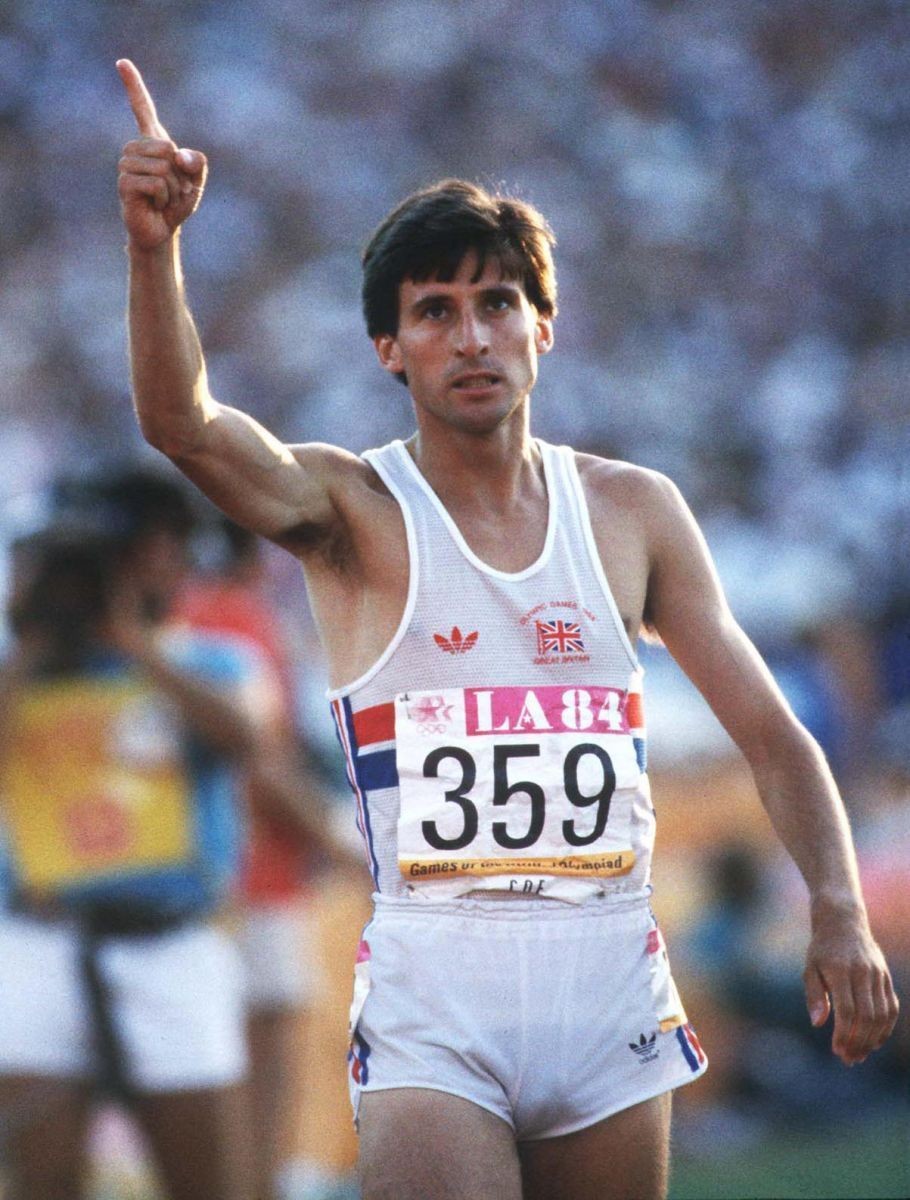
Coe's athletic immortality was sealed in 1980 when he triumphed in the Olympic 1500m in Moscow to make up for his 'disastrous' run in the 800m (a mere silver medal behind Steve Ovett) after adding to his portfolio of world records by covering 1000m in 2:13.40 in his first ever race at the distance.
And so to 1981. With no major title to aim for, the emphasis was on achieving spectacular 'one-off' performances. Asked how he had prepared during the winter, Coe replied: "My training mileage is slightly down but there's been more accent on speedwork. I'm going back to basics, trying to improve my 400m speed." That approach hadn't diminished his endurance, though, for he opened his indoor season by winning the UK 3000m title in a personal best of 7:55.2. Two weeks later he smashed the world indoor 800m record with 1:46.0. "I knew I was fit, but not that fit," he enthused.
A 46.9 400m and 46.3 relay leg on May 4 confirmed his speed was at a high level, and before his fateful appearance in Florence he won the Yorkshire county 800m title on May 17, in 1:46.5, an invitation 800m at Crystal Palace on June 3, in 1:44.06 followed two hours later with a 45.8 relay split from virtually a standing start, and as a final tune-up a 46.6 relay leg at Gateshead on 7 June. He traveled to Florence not expecting anything too special ... around 1:43/1:44.
His 800m race in Florence got under way after 11pm. Kenya's 19-year-old Billy Konchellah, then a 45.38 400m performer who would go on to become world 800m champion in 1987 and 1991, acted as pacemaker. In his slipstream Coe reached 200m in 24.5 and 400m in 49.7 and was perfectly set up for a super-fast time. Sensing Konchellah was about to flag, Coe forged ahead by 450m and after 200m splits of 24.5 and 25.2 he covered the next half-lap in a daring 25.3 for a remarkable 600m time of 1:15.0 – precisely 1:40 pace for the full distance. Inevitably he slowed towards the end but still managed a final 200m of a little under 26.7.
Coe's immediate post-race response: "I'm very happy about the result, but it was terrible waiting the 10 minutes for the official result. It's getting under 1:42 that is the great thing for me. It was as hard a race as I have run for a long time. In the last 30 meters I was beginning to tie up but apart from that there was no problem."
Coe went through that 1981 season undefeated, collecting further world records at 1000m (2:12.18) and mile (3:48.53 and 3:47.33). Other glittering performances would follow, notably a second Olympic 1500m triumph in 1984, but as a testimony to the quality of that 800m exploit in Florence note that even now, 40 years on, only two men have gone faster: David Rudisha of Kenya and Wilson Kipketer of Denmark.
(06/15/2021) ⚡AMPby World Athletics
Gene Dykes breaks M70 50K world record clocking 3:56:43, breaking the previous record by nearly 19 minutes
On a sunny Sunday in East Islip, NY, Gene Dykes broke the M70 50K world record at the USATF national 50K road championships, crossing the finish line in 3:56:43. He beat the previous record of 4:15:55, set by Germany’s Wilhelm Hofmann in 1997, by nearly 19 minutes.
This is the third world record Dykes can add to his resume, along with his M70 100-mile and 24-hour records. While his time has yet to be ratified, this is an incredible accomplishment for the already-decorated ultrarunner. To make his run even more impressive, he completed another 50K trail race only two weeks prior to his record-breaking run, and it’s been barely one month since he ran 152 miles (245 kilometres) at the Cocodona 250 in Arizona.
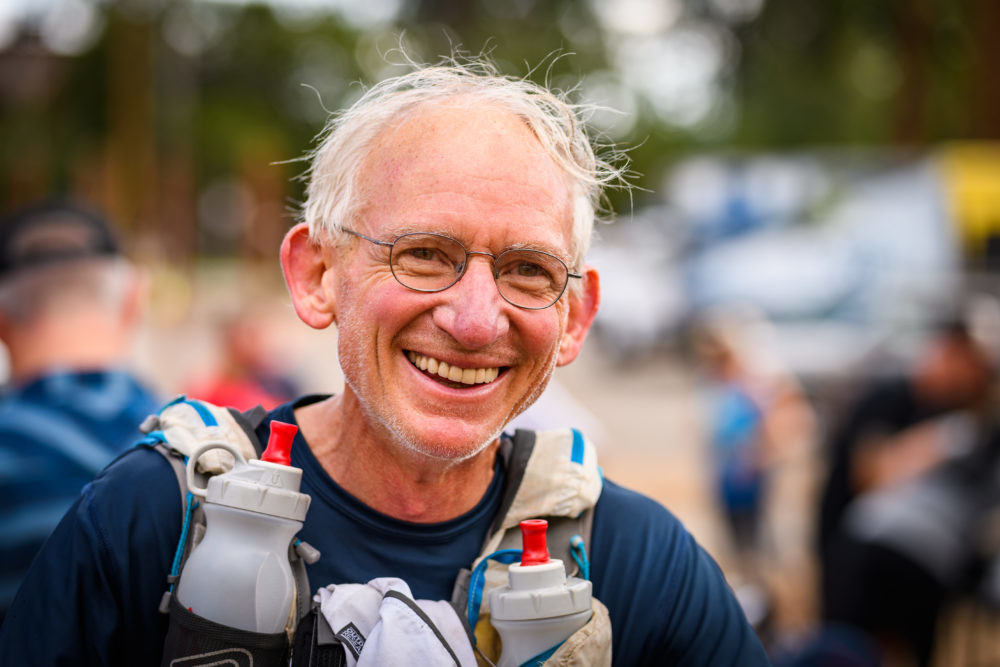
According to Dykes, the weather for Sunday’s race in Caumsett State Park was sunny, moderately windy, and not too hot, with temperatures hovering in the low 20s (Celsius) for most of the event. In a brief conversation with him after the race, he told Canadian Running (in a half-joking, half-serious manner) that he credits Canada’s late Ed Whitlock, one of the most decorated masters runners who ever lived, with his new 50K record.
“Thank you, Ed Whitlock, for never running a 50K,” he says.
Dykes is still aiming to take down Whitlock’s M70 marathon world record of 2:54:48, which he will attempt to do at this year’s London Marathon on October 3.
(06/14/2021) ⚡AMPby Running Magazine
Marathon great Wakiihuri ecstatic after receiving award from Japan
The Seoul Olympics marathon silver medalist was conferred “the Order of the Rising Sun, Gold and Silver Rays” for cementing international relations between Japan and Kenya through athletics and music.
In Summary
•Wakiihuri was the first Kenyan athlete to participate in Japan and paved the way for mass exodus of talented runners to the Asian country
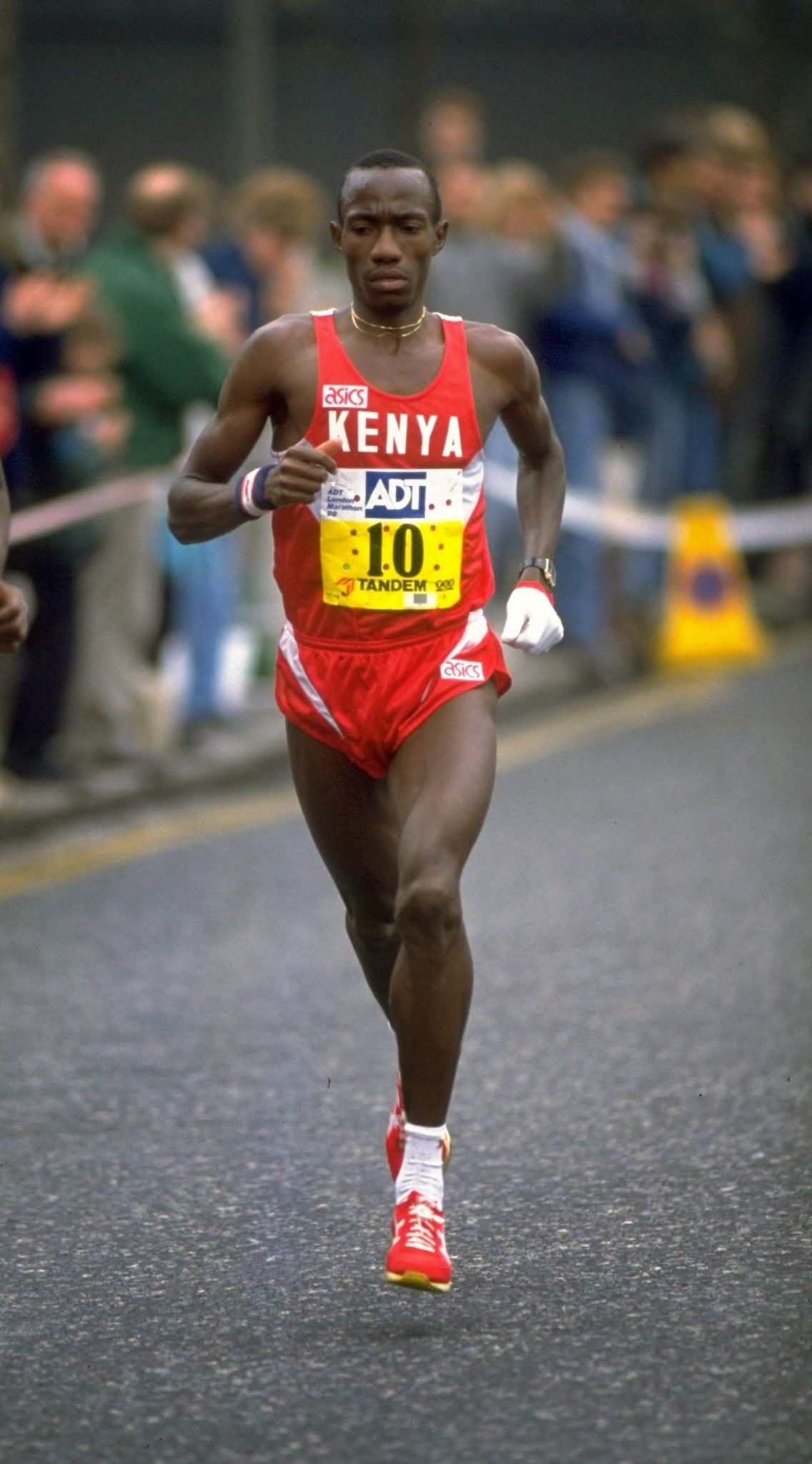
•The order is the highest one conferred to individuals who have helped cement international relations between Japan and other countries
•Japanese ambassador to Kenya says Wakiihuri's arrival in Japan and training with talented Japanese runners has uplifted athletics standards in the country
Seoul Olympics marathon silver medalist Douglas Wakiihuri was all smiles after he was conferred “the Order of the Rising Sun, Gold and Silver Rays” by the Japanese government during a ceremony at the Japanese Embassy on Friday.
The decoration was given in recognition of Wakiihuri's contribution to Japan-Kenya bilateral relations through athletics by paving the way for a steady exodus of talented Kenyan athletes to the Asian country.
“I was passed a tasuki (sash), a sign of responsibility from Japanese people to continue running in the race of life. This decoration is not only for me but for all of you who cheered for me all through the race. As I stand on the podium today, I extend my sincere gratitude for His Majesty the Emperor of Japan, the Government of Japan, Ambassador Horie, those who present here today and all the people who have supported me to date,” Wakiihuri said.
The order is the highest award conferred to individuals by the Japanese government and generally recognises those who have contributed to cementing international relations between Japan and other countries as well as promoting Japanese culture in their respective fields and talents.
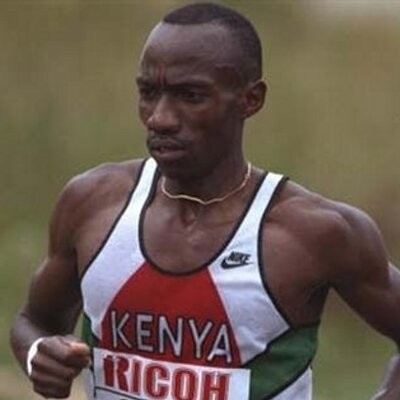
While conferring the award — on behalf of the Emperor of Japan — Japanese ambassador to Kenya Horie Ryoichi thanked the 1990 New York Marathon winner for uplifting the standards of Japanese athletics by opening up the country to other talented runners from Kenya.
"Being the first Kenyan to run in Japan, it has now become common practice to see foreign athletes training with young Japanese athletes who go on to become world’s leading marathon runners. This practice, till today, has provided a lot of stimuli and dreams for Japanese youngsters. Moreover, after his retirement, Mr. Wakiihuri has been positively engaging in boosting the bilateral cultural relationship between Japan and Kenya and extending cooperative support on various occasions, such as the organisation of the Nairobi Sotokoto Marathon," Ryoichi said.
He also praised Wakiihuri for his exceptional singing talent and incorporating elements of Japanese culture in his songs.
Also present at the ceremony were Sports Cabinet Secretary Amina Mohamed, Olympics Kenya acting secretary general Francis Mutuku and Athletics Kenya president Jack Tuwei.
Ryoichi said Japan is looking forward to welcoming Team Kenya for the upcoming Tokyo Olympics and wished them success in the quadrennial games — although he asked Kenyan runners to take it easy on their Japanese counterparts.
(06/14/2021) ⚡AMP
One of the Most Gruesome Steeplechase Mishaps Ever? You Decide
Ky Robinson’s face took a beating, but he gets faster every race.
Steeplechase is an event known for its spectacular falls. Combine barriers, a water jump, and tightly packed runners going at high speeds, and you’ve got an environment ripe for catastrophe.
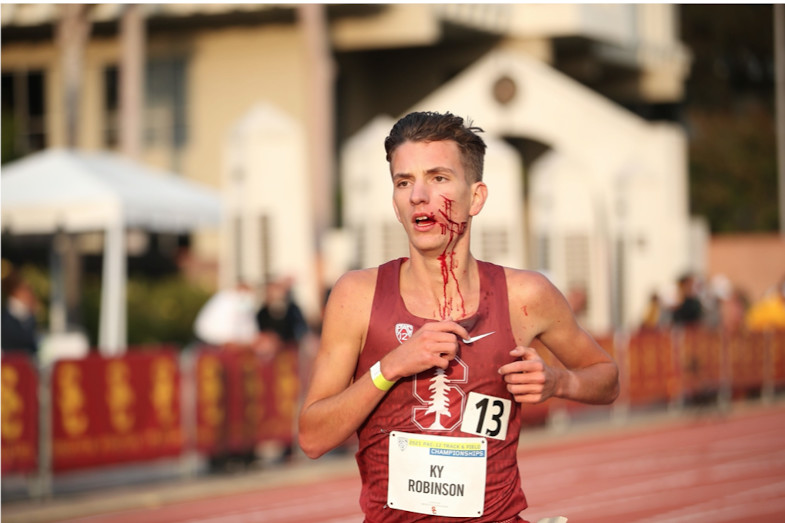
Still, even by the steeple’s high standards, what happened to Ky Robinson, a 19-year-old Stanford freshman, was ghastly.
It was early in the race at the Pac-12 championships at USC on May 15. Robinson’s trailing leg clipped a barrier, and down he went. He rolled. Straight into the path of a Washington runner.
Through no fault of his own, the Washington runner stepped on Robinson’s face with his spikes, dragging a path across Robinson’s left cheek. It could have been worse—the spikes didn’t puncture all the way through the cheek and more important, they missed his eye.
Robinson popped right up. “I didn’t realize how bad it was immediately,” he told Runner’s World. “I felt my face, my lip, I looked down and saw the blood.” He convinced himself that he had just cut his lip.
He managed to finish third in the race in a four-second personal best of 8:41.81. “The adrenaline rush took the pain away,” he said.
After the race ended, he went over to a teammate, D.J. Principe, who had been in a steeple for the first time. Principe just pushed Robinson over toward medical officials on the track.
One of them came to him with a towel, and Robinson, still unaware of how bad his wounds were, tried to brush off the help. The medic grabbed him by the arm and marched him off the track.
Another member of the medical staff on duty at the time happened to be a plastic surgeon. He gave Robinson 27 stitches to close the gashes, the deepest of which goes for several inches across his left cheek.
One of the toughest parts of the night for Robinson was FaceTiming his parents in Brisbane, Australia, to let them know what happened. He wore a mask. “When I was talking to my mum, I was like, ‘I can show you,’ and she said, ‘Don’t you dare take that mask off, I don’t want to see.’”
Robinson, however, never missed a day of training. And he’s only gotten faster in the three weeks since the fall. He set another PR, 8:40.45, at the NCAA West Regional, qualifying for the NCAA Championships.
“I had a little PTSD going over the barriers,” he said. “I found I was stepping on a lot more barriers instead of straight hurdling.” 

But by the time of his semifinal heat of the championships at Hayward Field in Eugene, Oregon, Robinson had cast most of the doubts from his mind. He won his heat in 8:36.29, another four-second best. (He did run to the outside of lane 1, or in the inside of lane 2, to get a clear look at the barriers, adding distance to his race.)
On June 11, in the final, Robinson finished sixth in 8:32.01, another large personal best. He set a Stanford school record, and broke his own Australian and Oceanian U-20 records. He has cut 13 seconds off his PR since being sliced in the face.
The wounds are still visible—and could be for some time. He’s using a scar cream and it might take as long as a year for the marks to subside.
This much is clear, though: There’s nothing wrong with his legs.
(06/14/2021) ⚡AMPby Runner’s World
Danish runner shatters Everesting world record with sub-11-hour result
Everesting originally started as a cycling challenge that saw athletes ride up one hill over and over again until they reached 8,848m of elevation gain. As the challenge grew more popular, it found its way into the world of running, and since then, 447 runners have completed it
For a run to count as an official Everesting attempt, runners must follow a few simple rules. Firstly, the run has to be on one hill, meaning an individual can’t run around a hilly region on multiple routes until he or she hits 8,848m of elevation gain. It doesn’t matter how steep or how long the hill is, and the official rules state that “Essentially anything that has a vertical gain can be used” for the challenge.
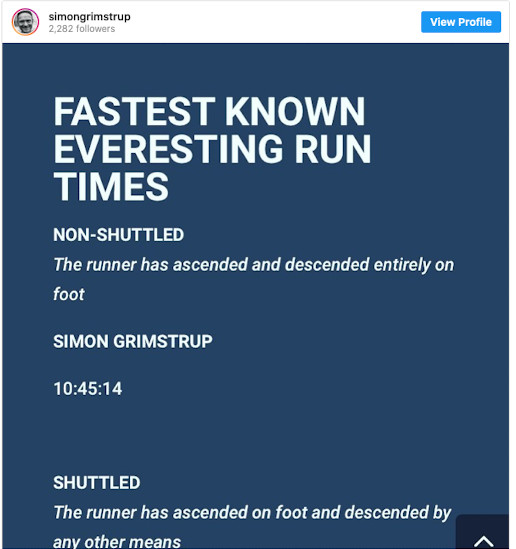
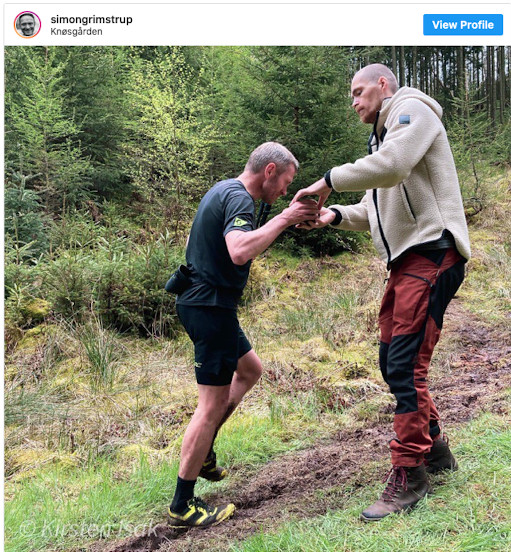
There’s also the matter of sleep, which is not allowed in Everesting attempts. While sleep is always an option for runners in long ultramarathons, it isn’t permitted for Everesting runs. If a runner takes a nap, the attempt is over. When it comes to ascending and descending the chosen hill, a runner can choose whether to run down after each lap or get a ride down (whether that’s in a car, a gondola on a bike or any other form of transportation). Because of this option, there are two separate Everesting run records: shuttled and non-shuttled.
Grimstrup’s run was non-shuttled, and he ran or walked down the hill every lap. This not only made the challenge much more difficult, as Grimstrup didn’t get the chance to rest after each ascent, but as he said in an interview with the Vietnam Trail Series (VTS), it also left him wondering if he would make it to the finish line.
“I was not sure I would get the world record until the last two laps,” he said. “I was worried that I would fall on the downhill.” Running down a steep hill (the one Grimstrup chose was 130m long and featured 44m of elevation gain) is difficult enough on tired legs, but the task was made tougher for Grimstrup due to rain. He told the VTS team that, due to the rain, he had originally planned to only run a half-Everesting attempt as a test run on the hill.
After he ran 100 laps, though, Grimstrup said his friends convinced him to keep going for the full run. He gave in, but he said the trail he followed only got worse and more torn up with each lap. Despite the sketchy terrain, he made it to the finish, beating the previous Everesting world record by 16 minutes.
“It was the hardest, stupidest, most epic thing I have ever done,” Grimstrup said.
In addition to running the Everesting attempt for the physical challenge, Grimstrup linked it to a fundraiser for Doctors Without Borders
(06/14/2021) ⚡AMPby Running Magazine
Sara Hall wins New York Mini 10k in Central Park
Sara Hall completed the New York Mini 10K with the fastest time by an American in the history of the women-only event.
Sara Hall won her second consecutive title at the Mastercard New York Mini 10K on Saturday, finishing the Central Park race in 31 minutes, 33 seconds. It was the fastest time by an American in the 49-year history of the women-only event.
Hall broke away from her nearest challengers late, holding off the Kenyan duo of Violah Cheptoo by six seconds and Monicah Ngige by 26.
“It feels so good to be back out here racing in New York City and have a real road race,” Hall said. “I’ve been looking forward to this so much. This is the momentum I needed for Olympic trials in two weeks.”
Lindsay Flanagan (32:09), U.S. Olympic marathoner Molly Seidel (32:13), and former New York City Marathon champion Edna Kiplagat (32:20) completed the top six.
Susannah Scaroni won her third straight event title in the wheelchair division, finishing in 22:44. Scaroni sprinted out early and cruised to victory ahead of flying to the U.S. Paralympic trials.
Five-time New York City Marathon champion Tatyana McFadden (25:22) was second for the third consecutive time and Yen Hoang (26:11), a college teammate of Scaroni and McFadden at Illinois, rounded out the podium.
There were about 3,000 runners in the field, the first regularly scheduled New York Road Runners race since the pandemic began.
(06/13/2021) ⚡AMPSome Veteran Pro Runners Are Making Less This Year, and They're Ditching the Sport
Many athletes are confronting a bleak financial reality. Some are quitting the sport entirely.
What do Noah Droddy, Ben True, and Andy Bayer have in common?
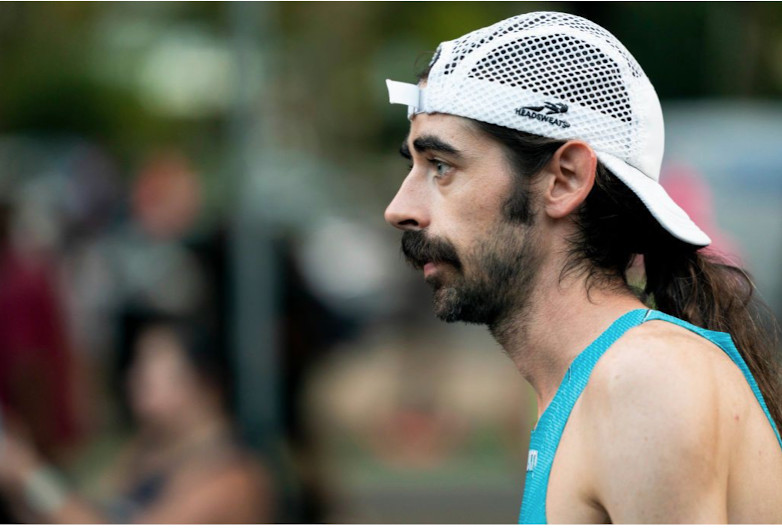
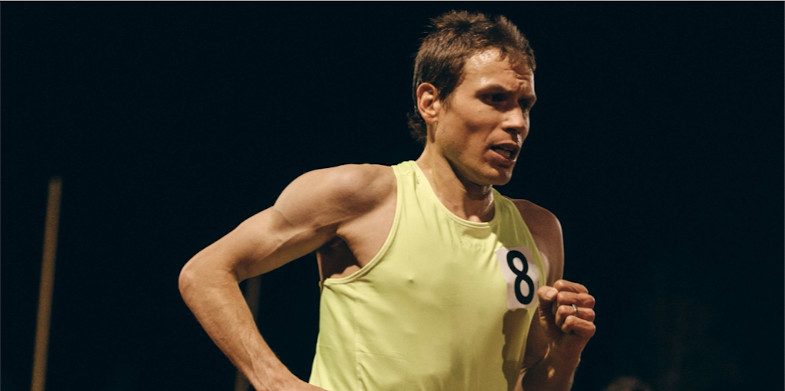
They’re all ranked among the top 10 Americans of all time in their events—Droddy in the marathon, True in the 10,000 meters, Bayer in the steeplechase.
How Much Do Pro Runners Make? For Some Veterans, It’s Less This Year
And they were all dropped by their sponsors at the end of 2020.
This news took a while to seep out—after all, athletes don’t tend to publicize it when their sponsors reduce their pay or stop supporting them altogether. But Droddy, 30, and True, 35, have been open about their status and confirmed it in calls with Runner’s World (both had been sponsored by Saucony), and Bayer told the Indy Star that Nike dropped him and he has left the sport, at age 31, for a job in software engineering.
Droddy—one of running’s most recognizable figures in races with his long hair, backward baseball cap, and habit of losing his lunch at marathon finish lines—summed up his situation in a tweet on February 19.
Is he right? Is it typical for top runners, at the height of their careers, to lose financial backing from shoe companies? Or is this an anomaly at the end of an unusual, pandemic-marred 15 months?
Runner’s World had conversations with eight athletes, four agents, two marketing employees at brands, and three coaches to get a sense of the current economics for athletes. They painted a complex picture.
Are most pro runners broke?
Many are just getting by. For years, America’s pro runners have been on shaky financial footing. With the exception of those who win global medals or major marathons, distance runners often struggle to earn enough money to pay for their essentials (rent and food), plus cover all their running-related expenses, such as coaching, travel to races and altitude camps, health care, gym membership, and massage.
Over the past year, the pandemic has erased lucrative racing opportunities. Additionally, shoe companies have been reevaluating their sports marketing budgets, from which runners are paid. Experts say that the result has been an increasing bifurcation between the sport’s haves and have nots.
The most successful, those destined for the Olympic team or starring on the roads, are earning generous base payments and bonuses for setting records or winning. Many of the rest are scraping by, with smaller contracts, if any, and they’re supplementing their shoe company earnings with jobs.
Running’s middle class, much like America’s, is shrinking.
The exception is runners who belong to a single-sponsor training group, like those in Flagstaff, Arizona (Hoka); Boston (New Balance); and Portland, Oregon (Nike). In those cases, coaching, travel, and training camp costs are absorbed by the club, easing the financial pressure on athletes and making it possible for them to pursue the dream.
Brands these days appear to be more eager to devote dollars to groups and the athletes who train with them, rather than individual athletes training on their own in different locations. That presents a quandary for midcareer runners who have achieved a level of success. Faced with the loss of a sponsorship, they aren’t always willing to pick up and move to a new town and a new coach.
What do contracts look like?
If you’re a top runner in the college ranks, and you’ve won multiple NCAA titles at the Division I level, shoe companies—Nike, Adidas, Brooks, Saucony, Hoka, and others—will usually come calling, offering more than $100,000 a year for multiple years, with a spot in a group or a stipend to pay your coach. Those companies are betting on those NCAA champions to be Olympians of the future.
Dani Jones, for instance, won three individual NCAA titles at the University of Colorado, and she signed with New Balance at the end of last year. Her agent, Hawi Keflezighi, said she entertained competing offers from other companies.
A midcareer athlete with a breakthrough performance—hitting the podium at a major marathon or making an Olympic team, for instance—might also be rewarded with a base contract worth $50,000 to $100,000.
The top sprinters earn even more (although their careers are typically shorter). Usain Bolt famously made millions, and Canadian sprinter Andre De Grasse was 21 when he signed a deal worth $11.25 million—before bonuses—from Puma in 2015, the Toronto Star reported.
The payouts drop significantly after that. Let’s say you’re a distance runner, but you haven’t been able to get a big win in college, although you’ve come close. The lucky ones are looking at deals for about $30,000 to $75,000 per year.
Your agent takes a 15 percent cut of that. And this base salary most often comes without benefits: no health insurance, no 401(k). As independent contractors, pro runners are paying all their own taxes. (In contrast, traditional full-time employees have half of their Social Security and Medicare taxes paid by the employer.)
Many young runners out of college join pro groups, and they’re not making anything beyond free gear and coaching. Others might get a stipend worth $10,000 or $12,000 a year.
The contracts typically sync with the Olympic calendar. At the end of 2020, many athletes’ contracts were expiring—even though the Olympics didn’t happen. That’s how Droddy, True, and Bayer were dropped. Shannon Rowbury, a three-time Olympian, told Track & Field News her deal with Nike was extended for one year, two if she makes the Olympic team this summer.
If an athlete has a good Olympics, the sponsoring company often has an option to extend the deal for an additional year, which includes the world track & field championships. It’s at the company’s discretion—not the athlete’s.
Parts of the sponsorship model appear to be changing, but slowly. When NAZ Elite announced a new deal with Hoka last fall, it included health insurance for the runners. Similarly, members of Hansons-Brooks in Rochester, Michigan, get health insurance if they work in the Hansons running specialty stores. And last May, Tracksmith brought Mary Cain and Nick Willis on as employees at the company—Cain in community engagement, Willis as athlete experience manager—with the plan that both would continue to train and race at an elite level.
Why doesn’t anyone know exactly how much runners are making?
As part of these deals, athletes have to sign non-disclosure agreements (NDAs), promising to keep the terms quiet. If an athlete violates the NDA, the sponsor can void the contract—or sue for breach of contract.
This is, in fact, similar to other sports. In basketball, LeBron James is being paid $39.2 million this season by the Los Angeles Lakers. But he also has an endorsement deal with Nike, and the exact structure of that is unknown.
In running, prize purses are publicized—$150,000 for winning the Boston Marathon, $25,000 for being the top American at New York in 2019, $75,000 for winning the Olympic Marathon Trials.
But as in other sports, the terms of the sponsor deals are kept mum. And appearance fees at major races, as well as time bonuses within those appearance fees, which represent a major source of income for road runners (mainly marathoners), are also mostly unknown.
Athletes feel that the silence around sponsor contracts and appearance fees puts them at a disadvantage—it’s hard to know their market value. Yes, they can—and do—have quiet conversations with peers about it. But lacking broad knowledge, they lack power.
And as a result, the industry is rife with rumors and assumptions. Athletes’ values are often inflated through the grapevine.
“I think it is very similar to the dynamic that would occur if no one knew the price of home sales,” Ian Dobson—a 2008 Olympian who ran for Adidas and Nike during his pro career, which ended in 2012—told Runner’s World. “How could you ever be confident in a sale price if you didn’t know what any other homes in your neighborhood were selling for? Granted, we don’t know every detail of every home sale in the neighborhood, but it’s certainly helpful to know in general terms the dollar amount that these are going for so that we can all understand what value our home might have.”
Also, athletes keep quiet when their circumstances change. They feel embarrassed. One athlete told Runner’s World, “No one in track wants to be the one to say, ‘I got dropped,’ or ‘I got reduced.’ It's all taboo.”
Even so, $30,000 is nothing to sneeze at—especially for a job that’s about pursuing individual goals.
No, it’s not. But not every contract is structured the same way.
Some pay that base amount, no matter what. Other contracts penalize athletes with reductions if, for instance, they don’t finish in the top three in the country in Track & Field News rankings, or if they get injured and can’t race a certain number of times per year.
That’s why numerous Nike athletes seemed to be eagerly seeking racing opportunities of any kind last summer amid the pandemic. Marathoner Amy Cragg raced a 400 meters at an intrasquad meet on July 31, and finished in 90.15 seconds—6:00 pace—presumably to check a box on her contract. On August 7, she ran 800 meters in 3:03.85. The record of those races are in her World Athletics profile.
A Nike spokeswoman, when asked about athletes racing in 2020 to meet contractual obligations, responded: “We do not comment on athlete contracts.”
Time bonuses, once seen as a reliable way to beef up athletes’ base payments, are also becoming less frequent or harder to hit, as shoe technology improves and fast times become more common, according to one agent.
What role do agents play?
For athletes who have never previously had a sponsorship deal, it’s almost impossible to secure one without the help of an agent, who can get in the door at all the major brands.
For American distance runners, there are nine main agents—all men—negotiating the deals (Keflezighi, Josh Cox, Paul Doyle, Ray Flynn, Chris Layne, Dan Lilot, Tom Ratcliffe, Ricky Simms, and Mark Wetmore). Karen Locke, one of the few female agents in track and field, represents a few distance runners among her roster of clients in field events.
Of course, all the prominent agents—who have multiple clients across multiple brands and at various stages of their athletic careers—have data about what athletes are worth. But they have a duty to each one to maintain confidentiality about the specifics of that deal.
Agents bring to their athletes a broad picture of the market and what each might command, providing advice to those considering offers: Yes, this a fair offer, a solid deal. Or no, you can do better.
They also help get athletes into competitive track races like the Diamond League and elsewhere, or into the World Marathon Majors. They can handle travel arrangements to meets and help to make sure records get ratified. Generally, their role is to go to bat for athletes, no matter what they need.
For their services, they take 15 percent of everything an athlete earns: sponsor deals, appearance fees, and prize money, no matter how small the race or winnings.
Agents are supposed to negotiate on behalf of each client individually, but athletes have no idea if that’s happening. Are they being used as part of a package deal? Thrown in at a minimal rate as a thank you to a brand for giving a generous deal to a superstar? Or, on the upside, getting a small appearance fee from a major marathon that they wouldn’t be able to get into on their own, because they have the same agent as a mega-star?
“Agents want to bring in the most money for their combined athletes—if they manage 20 athletes, they’re trying to bring in the maximum money they can across 20 athletes,” one athlete told Runner’s World. “That doesn’t necessarily mean they’re trying to maximize for each individual. The difference between earning $20,000 a year and $30,000 a year is profound in terms of your ability to actually train as a professional. But it translates into a small amount [$1,500] for the agent.”
Why is the market tricky right now?
The pandemic caused upheaval in marketing budgets. Also, the people who work in marketing at shoe brands can be inexperienced in the running industry, and turnover often runs high at those positions, jeopardizing relationships between athletes and brands that have lasted years.
The marketing budget questions are not limited to running, said Matt Powell, a sports business analyst and vice president for NPD.
“I think brands are taking a more circumspect view of endorsement contracts in general—whether it’s teams, leagues, or individual athletes,” he said. “They’re [questioning whether] they’re getting the return on that investment.”
Nike is rumored to have cut its marketing budget for running, amid layoffs at the company. Nike did not return an email from Runner’s World seeking clarification on the budget or the numbers of runners it currently sponsors.
Although Nike’s superstars are said to be fine and not facing any reductions in their deals, one Nike athlete, a 2016 Olympian, told Runner’s World, “It’s pretty much assumed that everyone is getting less.”
And it’s believed that several of these contracts are for shorter periods of time than they might have otherwise been: through the world championships in 2022 in Eugene, Oregon, instead of through the next Olympics in 2024.
In answer to questions from Runner’s World about True and Droddy—as well as rumors about a new Saucony-sponsored training group—Saucony responded with an emailed statement from Fábio Tambosi, Saucony’s chief marketing officer:
“At Saucony we believe you cannot have a sports brand without the inclusion and authentic connection with athletes. We are excited about the evolution of Sports Marketing as a brand pillar for years to come, and remain committed to building an athlete strategy that aligns with this goal.” 

Good news abounds, too
On the positive side for distance runners, Puma has re-entered the distance running market. Molly Seidel was lured from Saucony to Puma, and Aisha Praught Leer told Women’s Running she signed a “big girl contract” with Puma. Additionally, the company started a group in North Carolina, coached by Alistair Cragg and with three athletes so far.
The shoe company On has also invested heavily, starting a new team in Boulder, Colorado, coached by Dathan Ritzenhein and with athletes like Joe Klecker and Leah Falland.
Keira D’Amato, 36, signed her first pro contract, with Nike, after a string of impressive performances during the pandemic on the track and roads. She has kept her job as a realtor.
Keflezighi sees an opening for apparel brands that don’t have footwear to sponsor more athletes. Women’s apparel company Oiselle has done this for years, and Athleta is now sponsoring Allyson Felix. Could a menswear company be far behind? These arrangements leave athletes free to choose their own running shoes, which can be advantageous as shoe technology advances so quickly.
Why do brands have pro runners anyway?
Beyond the individual dollar amounts in contracts, brands seem to be rethinking what the role of a professional athlete is. Is it to inspire with performances, and hope those performances translate into shoe sales? Or is it to connect with fans on social media and promote product sales that way?
“You have to kind of look at it big picture,” True told Runner’s World. “These companies aren’t giving athletes money for charity; they’re doing it for a marketing investment and they’re looking for a return on their investment. And currently—and this is not ideal, in my mind—you look at the rise of social media and influencers. They are very inexpensive for marketers to go after and they get their products in front of a lot of eyeballs.”
A 2:20 male marathoner who also has a drone and a great Instagram account or YouTube channel might be gaining followers, True said, while a 2:05 marathoner is training hard and devoting his craft toward the next race.
“The average person, they don’t understand that 15-minute difference,” he said. “One historically will cost that company a lot of money. The other does not cost much at all and will get a whole lot more eyeballs on the product. You have to understand that.”
In his nine years with Saucony, True, training on his own in Hanover, New Hampshire, was part of only one ad campaign the company ran. The company preferred to use models for its ads and catalogs.
In February, True ran 27:14 for 10,000 meters, a personal best and faster than the Olympic standard. He wore Nike spikes and a plain yellow singlet. If all goes according to plan, he’ll race the U.S. Olympic Track and Field Trials in June and try to make his first team. His wife, professional triathlete Sarah True, is pregnant and due in July. And after that, he’ll run a fall marathon. True intended to debut at the marathon last fall, before the pandemic canceled all the races.
He’s moving ahead and training hard, despite the financial uncertainty. “I would have loved to have spent my entire career with Saucony,” he said. “I very much enjoyed working with them. I’ve been fortunate enough that I have had probably a lot more support than many other people in my position. That’s been nice.”
At this point, he is hoping another company will pick him up to take him through the next few years. “If a company just gave me a bonus structure that is fair for the result, I’d be happy with that,” he said. “It’s not like we’re looking for huge amounts of money. I’m very pragmatic and very realistic. I don’t think you should be paid for potential; I think you should be paid for results.”
(06/13/2021) ⚡AMPby Runner’s World
Olympic organizers estimate 225,000 fans per day at Tokyo venues
The Tokyo Olympics and Paralympics organizing committee said Friday it has sold tickets for 42 percent of the venues' capacity and expects to see up to about 225,000 spectators per day in the Japanese capital if all ticket holders attend.
With the organizers set to draw up a plan this month on what to do regarding domestic spectators, Hidemasa Nakamura, the committee's games delivery officer, suggested the risk of having spectators could be limited, given that the number of ticket holders set to enter venues is estimated to be smaller than those visiting or commuting to the capital.

Speaking at a press conference, Nakamura said 70 percent of the tickets for events taking place in Tokyo and neighboring Chiba, Saitama and Kanagawa prefectures have been sold to people living in those areas.
The Japanese organizers and the International Olympic Committee have waited to decide on venue capacity for spectators in Japan after barring fans from overseas. However, medical experts have expressed concern that allowing fans could lead to the spread of the coronavirus as people travel to and from the venues.
On Friday, infectious disease expert Shigeru Omi, Japan's top COVID-19 adviser who has been critical of staging the Tokyo Games, told a parliamentary committee he will assess the risk of allowing spectators.
Omi, who heads a government subcommittee on the coronavirus, said the public will most likely be asked to follow anti-virus mitigation steps, including refraining from traveling to other prefectures, during the Olympics as they coincide with summer vacation.
With about 40 days to go before the Olympics opening ceremony, Tokyo has been under a state of emergency since late April to bring down the number of infections. Omi has said he plans to put together recommendations on staging the Olympics by June 20, the final day of the emergency.
Separately on Friday, Tokyo Gov. Yuriko Koike said a vaccination center will be set up at the metropolitan government building to inoculate officials and workers related to the Olympics.
About 2,500 shots will be administered per day starting June 18 to referees and staff working at games facilities including the athletes' village, Koike said.
The center will use Pfizer Inc. vaccine doses provided by the IOC for Japanese athletes and officials related to the games.
(06/13/2021) ⚡AMPDouble delight for Mu, Sturgis and Cockrell on final day of NCAA Championships
US teenager Athing Mu wrapped up her 2021 collegiate season with a pair of record-breaking performances on the final day of the NCAA Championships in Eugene on Saturday (12).
The Texas A&M student, who is undefeated outdoors over 400m and 800m this year, opted to focus on the shorter event in Eugene. After a comfortable 51.04 heat victory on Thursday, she dominated the final and won by more than a second, breaking her own collegiate and North American U20 record with 49.57.

Fellow U20 runner Talitha Diggs, representing the University of Florida, finished second in 50.74, while Canada’s Kyra Constantine of USC was third in 50.87.
“I’m really happy to win; I’ve been dying to have the 400m title since the indoor season,” said Mu, whose only loss this year came at the NCAA Indoor Championships.
Just 80 minutes after winning the individual 400m title, Mu teamed up with Tierra Robinson-Jones, Charokee Young and Jaevin Reed to win the 4x400m in a collegiate record of 3:22.34. Mu’s anchor leg of 48.85 is the fastest split ever recorded at the NCAA Championships.
“It’s amazing,” said Mu. When we checked in, I said, ‘we’re going to get the collegiate record’ so we knew it was coming.”
Mu, who turned 19 earlier this week, will now turn her attention to the US Olympic Trials, where she’ll be among the leading contenders over 800m, having clocked a North American U20 record of 1:57.73 earlier this year.
“I’m glad to be moving back to ‘my’ race (the 800m) for the trials,” she said. “I just want to go out there and try my best and hopefully make the team.”
Mu was one of three women to win two titles on Saturday.
Cambrea Sturgis of North Carolina A&T State University produced the performances of her life to win the 100m and 200m double. She blasted out of the blocks in the 100m and, despite the best efforts of USA’s Twanisha Terry, could not be caught, flying to a marginally wind-assisted 10.74 (2.2m/s). Terry, the world U20 silver medallist, was second in10.79 while Tamara Clark (10.88) and Kemba Nelson (10.90) were next across the line.
Clark was Sturgis’s toughest opposition in the 200m. Clark, a student at the University of Alabama, got off to a strong start and was slightly ahead of Sturgis as they came off the bend. But the diminutive Sturgis, drawn two lanes outside of Clark, clawed back the deficit in the closing stages and crossed the line in a lifetime best of 22.12 (0.2m/s). Clark was second in 22.17 while Anavia Battle of Ohio State was third (22.42).
Anna Cockrell, the 2016 world U20 400m hurdles champion, became just the second woman in collegiate history to win the hurdles double at the NCAA Championships. She took the 100m hurdles title in 12.58 (0.4m/s) after setting a PB of 12.54 in the heats. Collegiate leader Tonea Marshall ran 12.48 in the heats but withdrew from the final.
Just 45 minutes later, Cockrell was back on track for the 400m hurdles. The USC student ran a controlled race and negotiated the barriers well, cruising to a 54.68 PB to win by more than a second. Arizona’s Shannon Meisberger took the runner-up spot in 55.70.
Texas A&M’s Tyra Gittens secured a full set of medals. The all-rounder from Trinidad and Tobago had placed second in the long jump on Thursday, then went on to dominate the heptathlon on Friday and Saturday, winning with 6285 to beat Miami’s Michelle Atherley by 218 points.
In between the last two disciplines of the heptathlon, Gittens contested the high jump and finished third with 1.87m in a competition won by Rachel Glenn with 1.93m.
The women’s steeplechase proved to be one of the closest and most exciting races of the championships. Mahala Norris of the Air Force Academy was in third place as she approached the final barrier. Despite losing some momentum, she managed to regain her stride to outkick Auburn's Joyce Kimeli and Washington's Katie Rainsberger to win in a big PB of 9:31.79. Kimeli finished just 0.05 behind with Rainsberger taking third in 9:32.12.
Elsewhere, Dutch thrower Jorinde van Klinken, representing Arizona State, won the discus with a final-round throw of 65.01m, breaking the championship record in the process. And North Carolina State’s Elly Henes won the 5000m in 15:28.05, 30 years after her mother and coach Laurie won the title.
(06/13/2021) ⚡AMPby World Athletics
Kenya's Faith Kipyegon thinking about a Tokyo double
Fresh from breaking her own 1,5000m Kenyan record at Florence Diamond League, in Italy, on Thursday, Faith Chepng’etich is spoilt for choice on which races to run at the Tokyo Olympic Games beckon.
Chepng’etich, who is the reigning Olympics 1,500m champion, has the liberty of either defending her title or going for 800m honours at the Tokyo Games due on July 23 to August 8 at the Japanese capital.
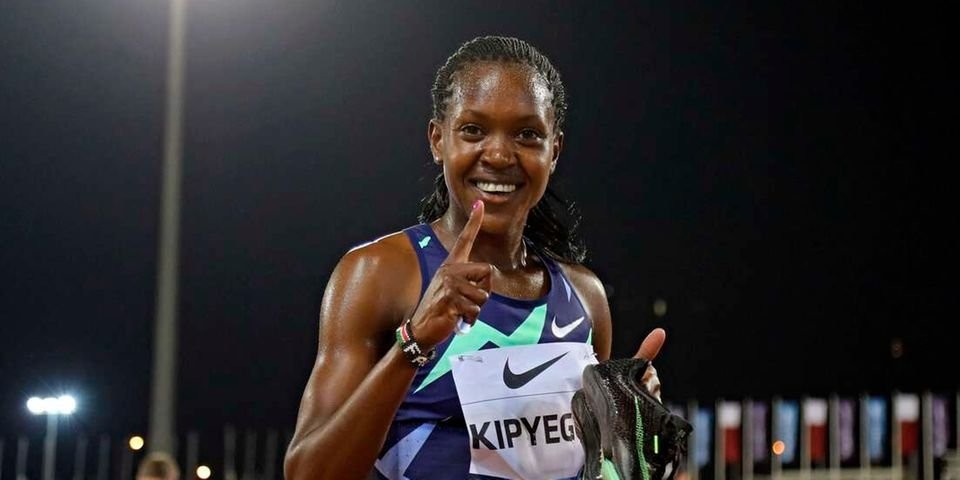
Pundits are also floating another idea of the world 1,500m silver medallist doubling up in 1,500m and 800m in Tokyo.
Incidentally, Kenya won its maiden medal from the Olympics through Wilson Kiprugut at the 1964 Tokyo Games in the 800m.
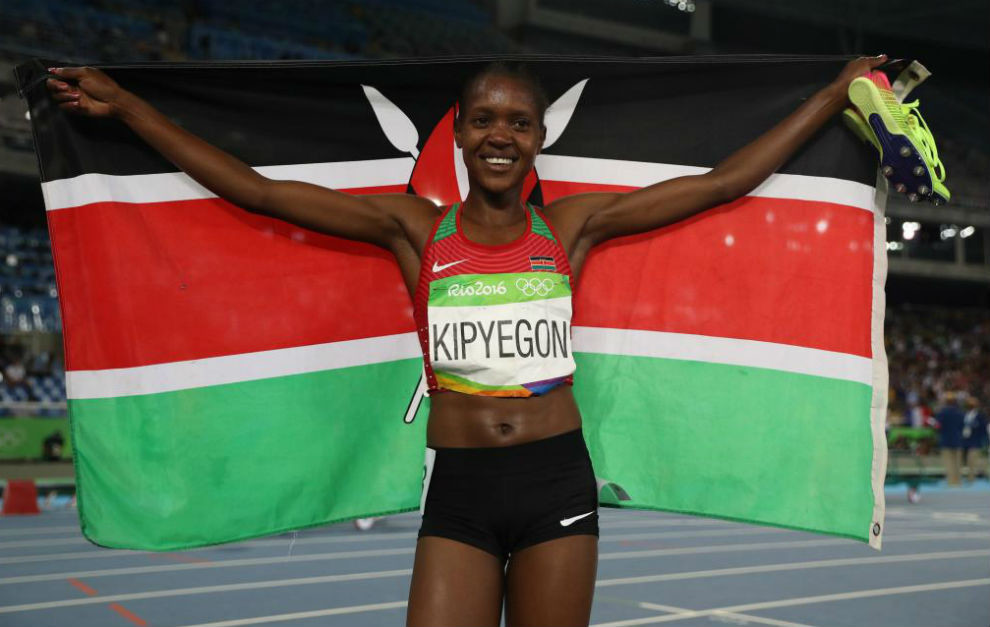
“It poses something to think about and I am yet to decide,” said Chepng’etich when asked whether she will consider doing a double in Tokyo.
Chepng’etich cruised to a Kenya record time of three minutes and 53.91 seconds to finish second behind Sifan Hassan from the Netherlands in Florence.
“It was a good race and it gives me a hint on where to work on with my coach,” said Chepng’etich, who had attained the Tokyo Olympics qualifying standard with a winning time of 1:58.26 at the Doha Diamond League on May 28.
Hassan, who had freshly set a short-lived new world record in 10,000m at her home country, clocked a world lead and meet record 3:53.63 in what was a replica of the 1,500m final at the 2019 World Championships in Doha.
It was at the world event where Chepng’etich claimed a national record of 3:54.22 in 1,500m after settling for silver as Hassan won in a European and Netherlands record of 3:51.95.
Running both the 1,500 and 800m will be tricky for any athlete.
The 800m heats will be held July 30 followed by the semi-finals the following day and the final on August 3. The 1,500m heats will be staged on August 2 followed by the semis on August 4 and final on August 6.
(06/12/2021) ⚡AMPby Ayumba Ayodi
Tokyo 2020 Olympic Games
Fifty-six years after having organized the Olympic Games, the Japanese capital will be hosting a Summer edition for the second time, originally scheduled from July 24 to August 9, 2020, the games were postponed due to coronavirus outbreak, the postponed Tokyo Olympics will be held from July 23 to August 8 in 2021, according to the International Olympic Committee decision. ...
more...Makenna Myler has always been a great runner, and she didn't let pregnancy slow her down
In October 2020, Utah runner Makenna Myler made headlines after dropping a 5:25 mile at nine months pregnant. A little over a week later, she gave birth to her daughter, Kenny-Lou, and by April of this year, Myler was back, not just running, but racing. Since giving birth, she run four races, hit three PBs and qualified for the U.S. Olympic Trials in the 10,000m. While one would assume Myler received nothing but support throughout the past year, that’s not the case, and she has faced criticism ever since her 5:25 mile last fall.
The mile
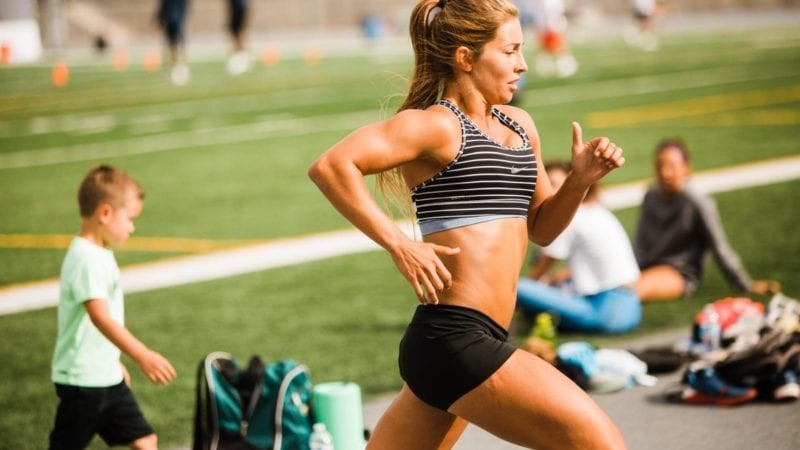
The morning of Myler’s wedding, she ran a mile. She says it only made sense to do so, as she officially became a Myler later that day when she married her husband, Mike. After her wedding day run (which she completed in 4:45), she decided to make it a tradition to run an all-out mile at significant times in her life. When she got pregnant, Myler told her husband she would run a mile in the final month of her pregnancy.

“I said, ‘Mike, I think I could run a seven-minute mile,’” Myler says. “He laughed and said he thought I’d pee my pants and have the baby right there if I did that.” Mike proceeded to bet Myler that she wouldn’t even break eight minutes, and with the challenge set, she got to work.
“Initially when you get pregnant, your times just absolutely slow down,” Myler says. “You think it’s going to be this straight trajectory of slowing down because you’re so tired, but your energy picks up later.” As her pregnancy progressed, Myler’s training continued to go well, and by the nine-month mark, she was ready to put her fitness to the test. She ran a mile time trial, shattering the bar of eight minutes that Mike had set months earlier, and her 5:25 result (which Mike shared in a video on TikTok) went viral.
Facing the critics
Most people who saw Myler’s run were in awe, and the overwhelming response was positive. However, like most things online, some people viewed Myler’s run in a negative light, and they took it upon themselves to tell her how wrong she was to run while pregnant.
“At first I was surprised,” she says. “I thought people understood that it would be OK, but you realize people haven’t done the same research you’ve done.” Before embarking on her pregnancy running journey, Myler consulted multiple doctors, one of whom has worked with many elite female athletes. That doctor gave Myler simple advice, telling her to listen to her body, just as she had in her entire career as a runner.
“I was a little offended at first when I saw the comments online, but we had a good laugh about it and kind of embraced it a bit more,” Myler says. “We realized these people don’t know me at all and they’re judging me off a two-second video.” Despite the fact that Myler gave birth to Kenny-Lou, who is healthy and was in no way affected by her mother’s training, that negativity and the criticism hasn’t stopped, but Myler says she wasn’t surprised by it this time.
“I was ready for the negativity,” she says. “I’ve received a lot of body image comments that weren’t super positive, and others on me coming back too fast. I kind of expected them.” She has even had people comment on her Instagram posts bashing Mike, as they seem to have themselves convinced that he’s forcing her to train as hard as she does.
“People don’t think I’m this intense person and instead they think that my husband is driving the whip,” she says with a laugh. “No, this is my decision and he’s just been so supportive through it all.”
Running as a new mom
Myler has run a mile, two 5,000m races and a 10,000m so far this year. The mile was at BYU, Myler’s alma mater, but she says she didn’t treat it as a race, and it was more of a workout. The two 5,000m races were in California, and she broke her PB on both occasions, first running 15:45.48 in mid-April and then bettering that with a 15:34.36 finish a month later.
Finally, her most recent race came at the end of May at the Portland Track Festival. There, she ran her 10,000m PB of 32:03.62, a time well under the U.S. Olympic Trials standard of 32:25.00. The Trials will be her next race, she says, and she hopes to spend the next while trying to “sneak in a little more fitness” before the June 26 event.
It’s easy to look at Myler and think that she’s special — that she was a great runner before pregnancy and that’s the reason she managed to train so consistently throughout those nine months and get back to running so soon after giving birth. But that’s not the case, and she says she believes that every mother-to-be and new mom can do what she has done.
(06/12/2021) ⚡AMPby Ben Snider-McGrath
Are you faster than Colin Farrell?-How does your marathon time compare to the Hollywood actor’s?
How does your marathon time compare to Hollywood legend Colin Farrell's?
Farrell took part in the Brisbane Marathon last weekend, placing 222nd out of 683 total participants, with a not at all shabby time of 03:53:14. The race was reportedly the Irish actor’s first marathon.
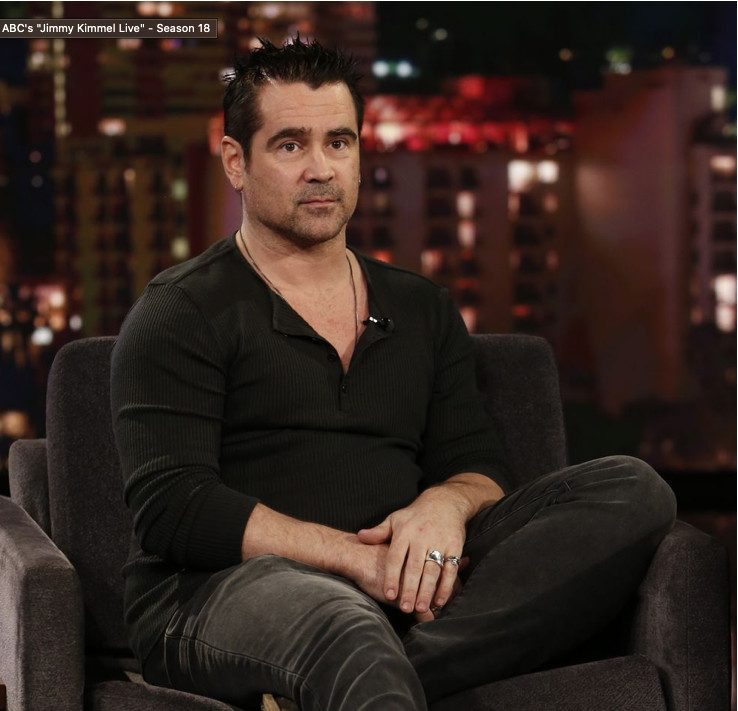
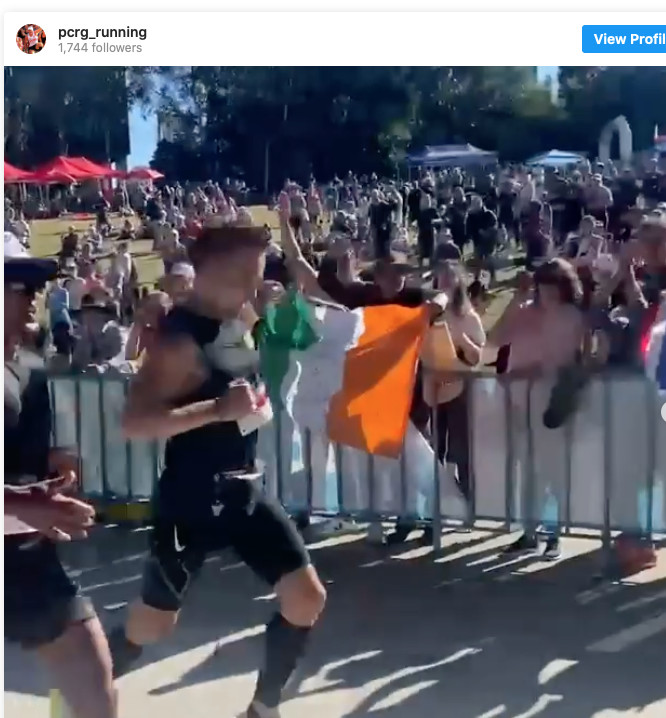
Pat Carroll, one of the event’s MCs, told Australia’s NCA NewsWire that Farrell was relatively new to running: 'His security guard told me he'd only been running for three months in preparation so it's not a bad effort,' he said.
According to Carroll, Farrell’s security requested that his participation in the race be kept quiet, although they did approve a bit of fanfare as he approached the finish line. 'I was talking to his 24/7 security guard while he's been in Australia, and I asked if we could go a bit crazy when he came down the finish line and he said: "Okay" so that's why we gave him a bit of a reception as he came down the home straight,' Carroll said.
In a video posted to his Instagram page, Carroll is heard saying: 'Ladies and gentlemen, Colin Farrell is entering the home straight. Let’s give it up for Colin Farrell, famous Hollywood actor.'
He added that another MC asked Farrell for a chat following the race, but he declined. Carroll said: 'His exact words were: "Nah, I'm knackered", which is understandable when you've just run a marathon.'
Farrell did pose with fans for pictures after the race, however. Instagram user @lettuceloveyou posted a picture with Farrell, saying, 'What a bloody buzz that experience was. It’s safe to say I might do another'.
Farrell is currently in Australia filming Thirteen Lives, a Ron Howard-directed drama about the 2018 Tham Luang cave rescue in Thailand. Actor Viggo Mortensen, who is also starring in Thirteen Lives, came along to cheer Farrell across the finish line with an Irish flag in hand, Carroll told NCA NewsWire.
(06/12/2021) ⚡AMPby Runner’s World
British runner breaks Backyard Ultra world record
John Stocker ran 337 miles in 81 hours at the Suffolk Backyard Ultra event this weekend
A British ultrarunner has broken the Backyard Ultra world record.
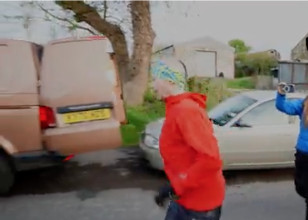
John Stocker, from Oxfordshire, ran more than 337 miles in 81 hours at the Suffolk Backyard Ultra beginning on Saturday.
Runners taking part have to complete a 4.167 mile lap of Suffolk’s Knettishall Heath every hour until they can’t carry on any longer. Participants must arrive back to the start in time for the next loop or they are knocked out.
According to race organisers, Stocker and fellow runner Matt Blackburn both beat the previous record of 312.5 miles in 75 hours, set by Belgian Karel Sabbe at Big’s Backyard last October. Sabbe told Runner’s World last year that his secret to resting was to 'give into sleep deprivation', turning his headlamp low and walking with his eyes closed so that he was ready for sleep by the time he returned to base.
Stocker and Blackburn both completed 80 laps, before Blackburn pulled out during the 81st lap. As no winner would be declared if he did not complete the lap, Stocker continued to run, completing the lap in 52 minutes, his slowest time.
That final lap was particularly difficult, Stocker told Runner's World. As he came out of the 'Spooky Woods' area of the course, he tripped and landed hard on his ribs. He thought he had "just lost it all", he said, before his resolve hardened. "I knew I just had to finish no matter what."
He said: "You could say the whole race flashed before my eyes, but with every small step I started walking along the road, then limping and onto running towards the finish and the win."
Race director Lindley Chambers told the BBC: 'What these guys have achieved is pretty incredible.'He added: 'I knew we had the calibre of people taking part and I personally thought we'd do 50 or 60 loops but these guys have gone beyond my expectation and have gone further than anyone else in the world competing in this format.'
Stocker and Blackburn reportedly completed each lap in around 45 to 50 minutes, leaving 10 to 15 minutes after each lap to rest and refuel before heading out for the next lap.
American runner Courtney Dauwalter told the BBC why this race format appealed to her in April: 'It’s a fun mental challenge,' she said, adding that backyard ultras are about 'finding out what’s possible rather than a race that you want to win. If we don’t limit ourselves, it’s pretty cool what can happen.'
(06/12/2021) ⚡AMPby Runner’s World
Timothy Olson Is Attempting a FKT on the PCT-The record he needs to break? 52 days
Ultrarunner and Adidas Terrex athlete Timothy Olson will attempt to set a fastest known time (FKT) on the 2,650-mile Pacific Crest Trail, starting at the California-Mexico border and finishing at Washington-Canada border. His goal? Break the current FKT of 52 days and change.
Timothy is a two-time winner and former record holder of the Western States 100-Mile Endurance Run. But he has a special connection to the Pacific Crest Trail, sections of which he’d run from his house in Ashland, Oregon, where he began his ultrarunning career a decade ago. Timothy has been training to set a FKT on the PCT for two years (last year’s attempt having been postponed by the COVID-19 pandemic). A self-professed “lover of life and explorer of nature,” Timothy’s goal on the attempt is to “live consciously” as he runs through the mountains. “I’m not trying to conquer nature,” he says. “I’m trying to move through and appreciate it.” Timothy wants his effort to be a celebration of our post-pandemic return to life. “I see this as a time for us all to reemerge from our cocoons,” he says. “I want to set a marker for what is possible.” Here's what he's up against—and how we plans to tackle it section by section.
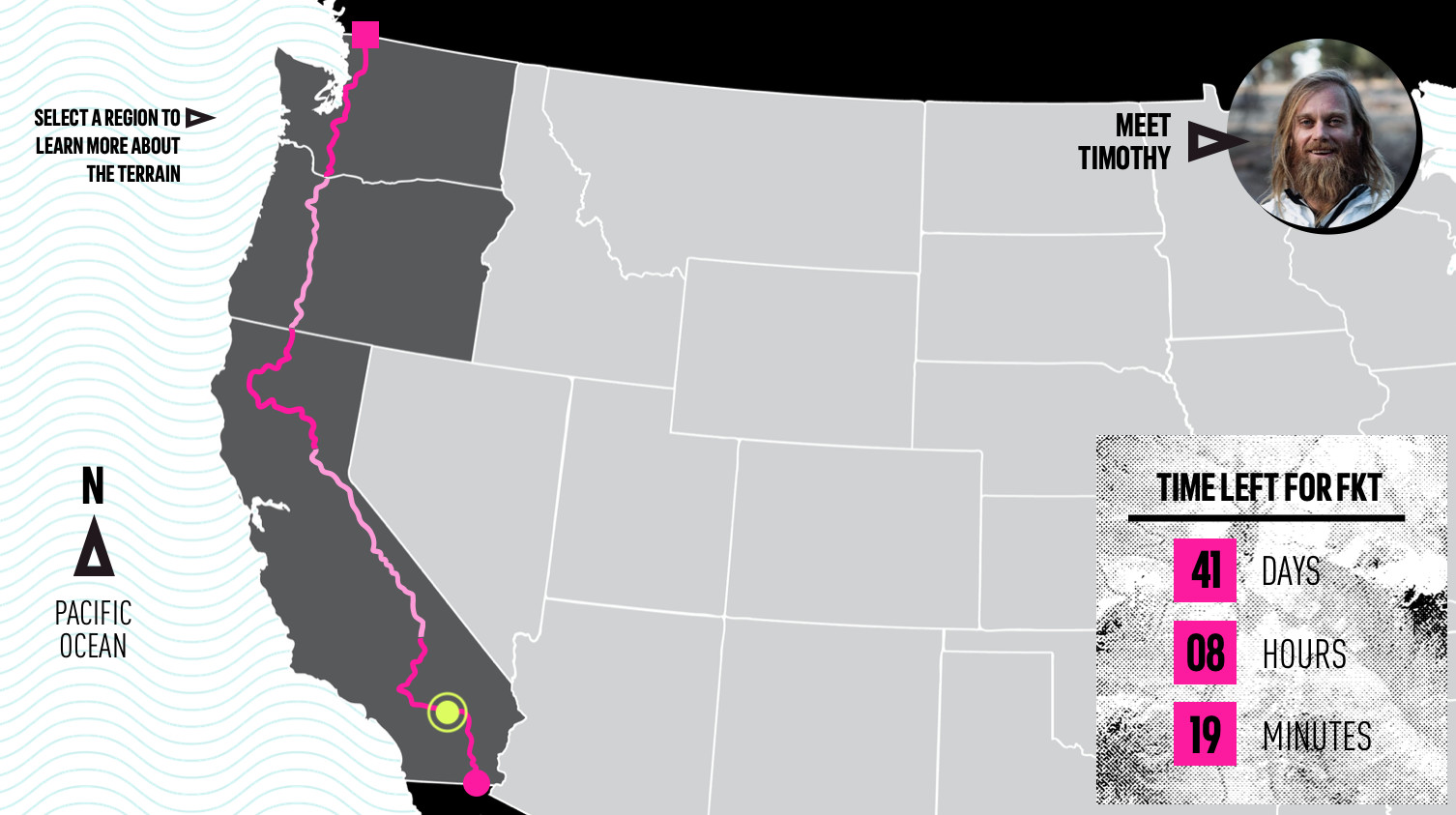
Region 1: Southern California
Campo to Walker Pass: Miles 0-652
The southern terminus of the PCT is near the aptly named California town of Campo. A shoulder-high monument a few yards from the wall marking the Mexican border is the official starting point. From there, the trail forges north through the Sonoran Desert, through the Laguna Mountains and into the Mojave. Daytime temps here can spike to the hundreds in June, so Timothy plans on predawn starts. And because there can be up to 30 miles of trail between water sources, he will rely on midday water resupplies from his team at road crossings and trailheads.
Region 2: Central California
Walker Pass to Donner Pass: Miles 652-1,157
From Walker Pass, near the town of Kernville, the trail dips to the South Fork of the Kern River, the geographic start of the Sierra Nevada. Arguably the PCT’s most difficult section, the trail through the High Sierra spends considerable time above 10,000 feet, includes eight passes over 11,000 feet, and peaks at 13,153-foot Forester Pass, the PCT’s high point. Timothy calibrated his early-June start time to reach the High Sierra when most of the snow should be melted, so he won’t have to lug heavy gear like crampons and ice axes. The crux of his effort will be the remote section from Sequoia National Park through Yosemite National Park, where the PCT merges with the famously majestic John Muir Trail for 160 miles. Timothy likely won’t see his resupply team for several days in this section.
Region 3: Northern California
Donner Pass to Oregon Border: Miles 1,157-1,689
This Northern California section begins where Interstate 80 crosses Donner Pass and continues through the High Sierra, but then gives way to the drier volcanic peaks and plains of the southern Cascades. From there to the Oregon border, the skyline is dominated by the Mount Shasta stratovolcano. Three to four weeks into the six-week effort, Timothy will need to listen to his body to stave off overuse injuries; he may have to sleep an extra hour or two or shorten his days to let his feet, knees, or shins heal. But with his experience and abilities, says coach Koop, “he can be three days off the record in this section and make it up in a single day.”
Region 4: Oregon
California Border to Washington Border: Miles 1,689-2,144
The easiest section of the trail, the PCT through Oregon contains fewer significant elevation changes, though the route is no less stunning, winding through old-growth forests, skirting alpine lakes, and connecting snowcapped volcanoes—including Mount Washington, Mount Jefferson, and the iconic Mount Hood—that dominate the skyline. But while the run should be easier physically, Timothy will likely be getting trail weary by this point. That’s where meeting up with his family at trailheads and road crossings will be a boost. “A hug from [my son] Kai and I’ll be energized to run all day,” he says.
Region 5: Washington
Washington Border to Canadian Border: Miles 2,144-2,650
Beginning at the trail’s lowest elevation, the Bridge of the Gods (180 feet) over the Columbia River, the Washington section rises past the talismanic peaks of mounts Adams and Rainier and then northward into the rugged and remote north Cascades, probably the PCT’s second most difficult section. In addition to presenting extreme elevation gains and losses and intense, dangerous river crossings, the north Cascades can be the PCT’s wettest section, with frequent summer storms that should test Timothy’s resolve and gear. “I’ll go several consecutive 60- and 50-mile days without seeing my crew—and may arrive at the border alone if the access from Canada is still closed.”
(06/12/2021) ⚡AMPby Outside On Line
Dina Asher-Smith aims for new peak in Tokyo
Dina Asher-Smith had just reached the peak of the mountain when she was plunged into the unknown.
Fresh from her triumph in the 200m, and a silver medal in the 100m, at the 2019 World Athletics Championships in Doha, where she was confirmed as one of the fastest women in the world, Asher-Smith had just begun her run into the Tokyo Olympic Games in 2020 when the whole world came to a screeching halt, her and her sport included.
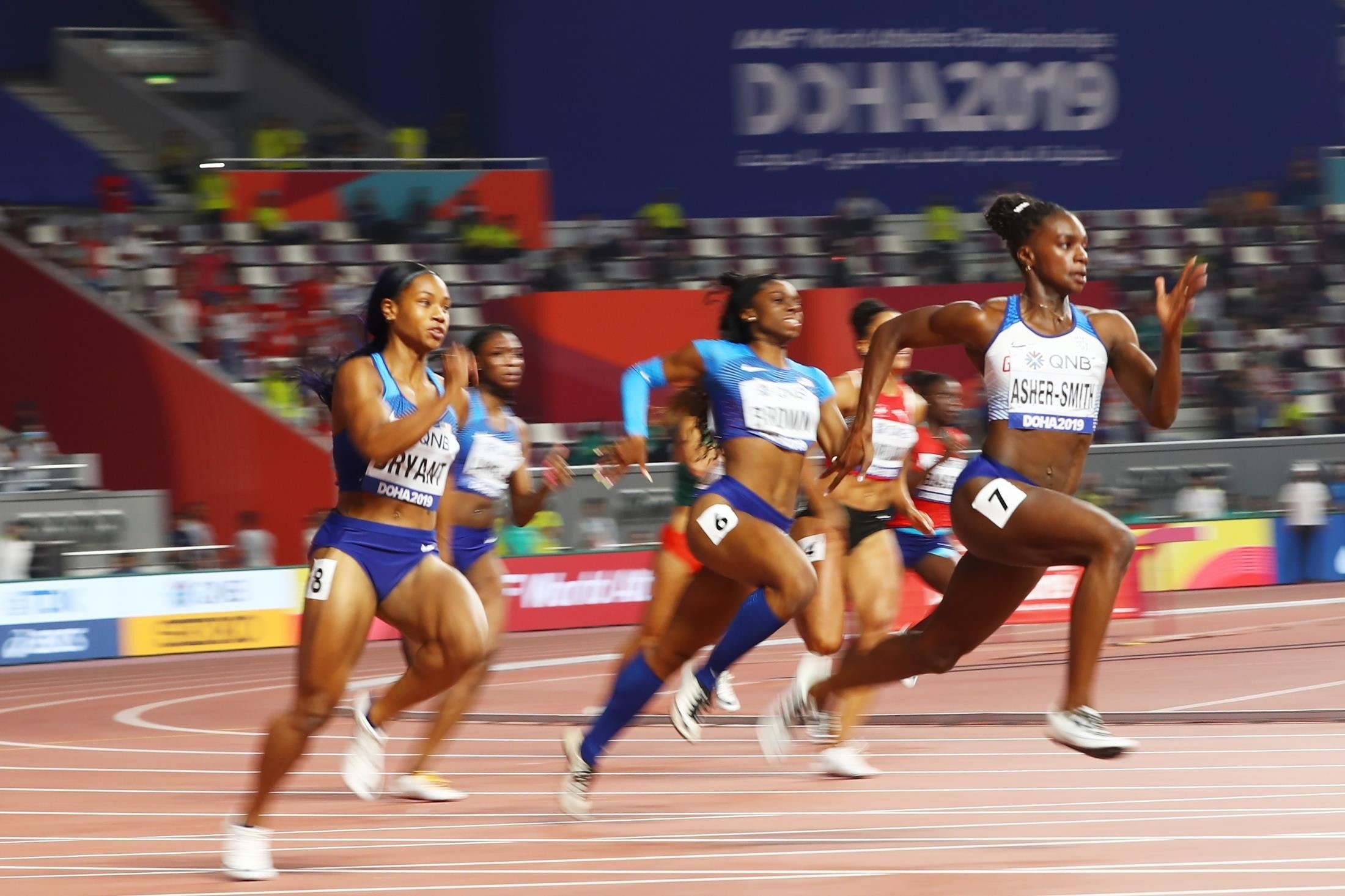
The 25-year-old Londoner could never have imagined voluntarily sitting out a year of international competition before the pandemic hit but that is what she elected to do when the world changed in March last year.
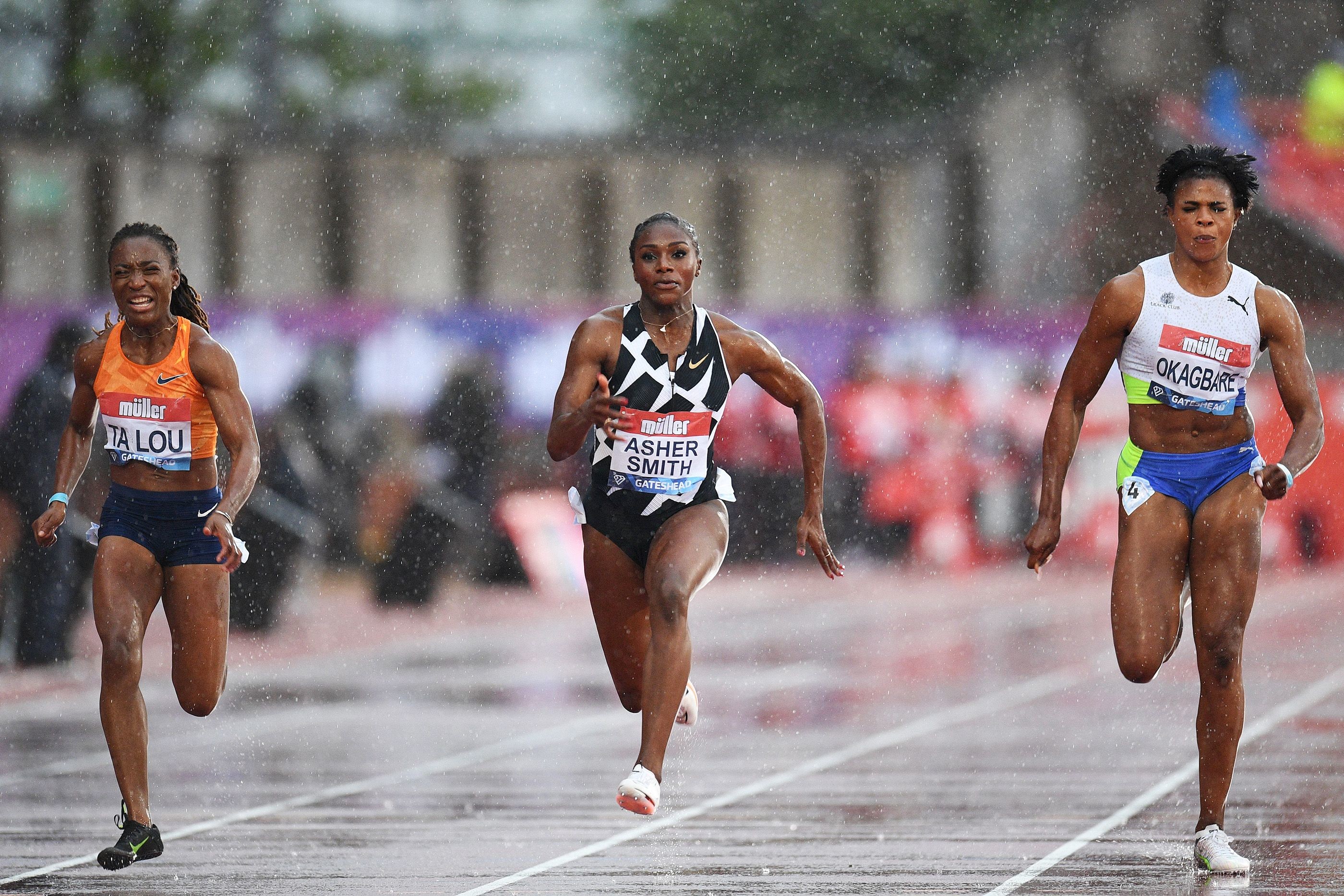
"We were in a situation that nobody around the world has been in before and I know that I was no different from anyone else," she reflected, after a triumphant return to the 200m in the Wanda Diamond League in Florence on Thursday (10).
"Every day I was worried for my parents’ health, my grandparents’ health. With that in mind, I was thinking, is it right for me to be bouncing around the world and doing that? I don’t know. That was my emotional frame.
"But also, from a more athletic point of view, we just saw it as: Okay, the Olympics have been postponed. If you had been given, or were forced, to have an extra year (of preparation), what would you do? For us, it was to get stronger, it was to improve my technique, it was to improve my mentality, my nutrition, my sleep, everything. So we really used the time to go up another level and I really hope that I can perform and show that’s what I was doing."
Asher-Smith admits it felt more like a risk than an unexpected gift at the time, stepping away from the known path to glory, sitting out while her rivals returned to racing in the latter part of last year. But she and her coach John Blackie believed it was the right approach for her and she trusts that the benefits will show when she finally arrives in Tokyo next month.
So far, it looks like a good decision.
Asher-Smith returned to the international scene last month, running, and winning, the 100m at the Gateshead Diamond League meeting against a stacked field that included the new American threat Sha’Carri Richardson and the dual Olympic champion Shelly-Ann Fraser-Pryce, and in appalling weather.
"You have to take the good performances when they come, so I was really happy to do well and do well in front of a home crowd," she said afterwards.
"I think psychologically it was good that I was able to focus in the circumstances - the fact that it was my first 100m, the fact that it was at home. It was suddenly a very big race for my first 100m against some incredibly talented women with some incredibly fast PBs, some incredibly fast times already run in the season and then the weather. I was just happy that despite all of those things happening in the background I was just able to focus on me and perform the way that I wanted to, at the end of the day."
She found better conditions at the FBK Games in Hengelo, a World Athletics Continental Tour Gold meeting, last week, where she registered her first sub-11 second clocking (10.92) of the season, before turning her attention to the 200m in Florence.
At the press conference before this meeting, she confessed she still felt a little race rusty, but it didn’t show as she dominated an international field to win in 22.06, just a touch slower than Shaunae Miller-Uibo’s world-leading time of 22.03 for this year.
"My team and I know I’m in good shape and I’m happy to come out and run that today but I know I can go quicker so I’m excited to be able to go again," she said.
What is already clear is that she will need to be better than ever to triumph in Tokyo. Richardson set the early season pace with a 10.72 clocking in April, then Fraser-Pryce blasted to 10.63 in Jamaica last week, the fastest time in the world for more than 30 years.
The British Championships and Olympic trials (June 25-27) are next on Asher-Smith’s agenda and then she has more international racing lined up, finishing with the second Diamond League meeting to be held in Gateshead on July 13, to bring her to a new peak in Tokyo.
(06/12/2021) ⚡AMPby World Athletics


